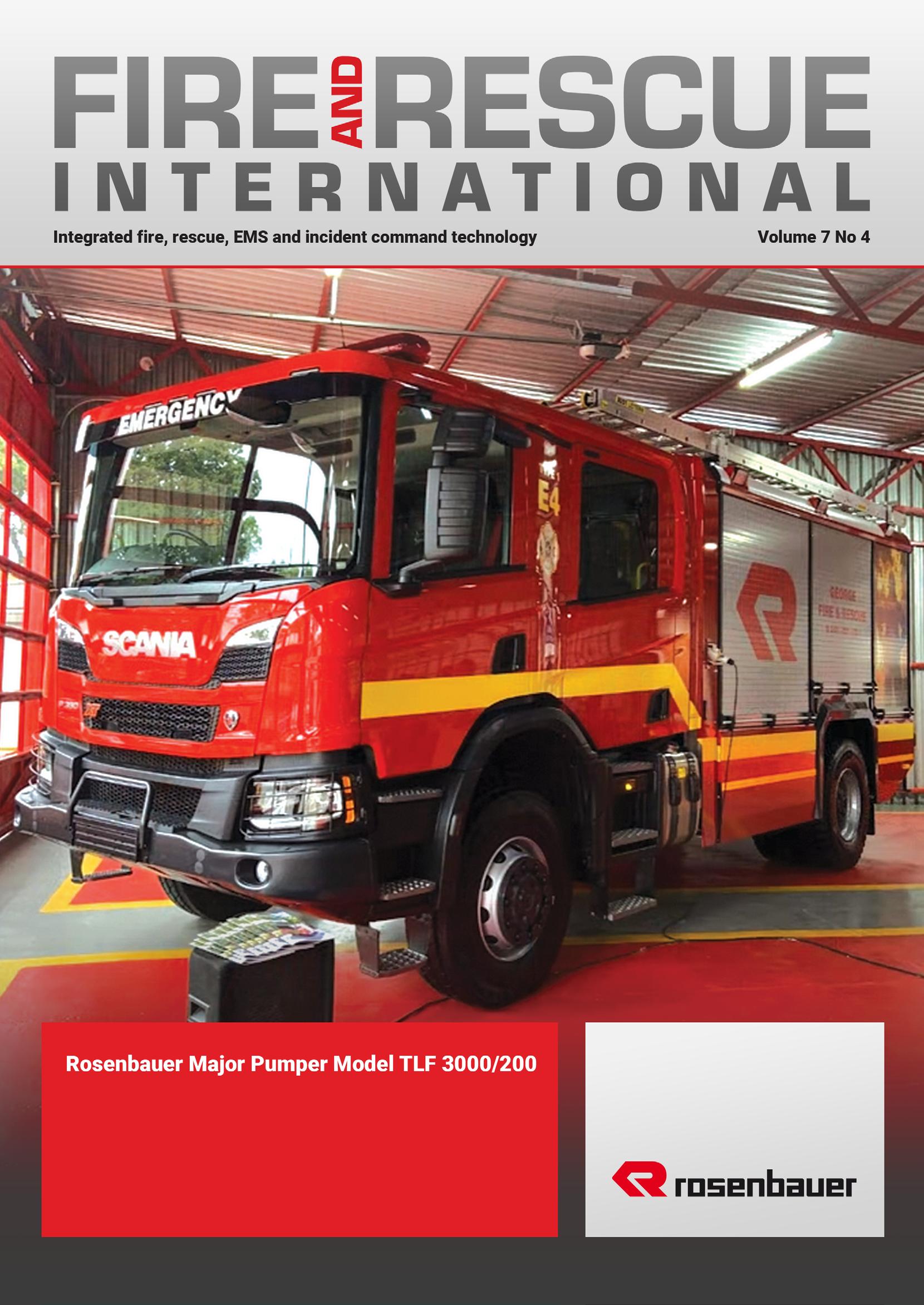

I am a firefighter
I don’t care if you’re a millionaire or pauper.
I don’t care if you have a mansion or a shack.
I don’t care what your politics, ethnicity or gender is.
I do care if you’re in trouble and need my help.
I care if a life was saved and that everyone is treated with dignity. I will be there for you, on the worst day of your life. I care. I will always care.
I am a firefighter
By Kevin Wright, London Fire Brigade (Retired)

(click a headline to
4 New sales manager joins Rosenbauer
10 George Fire Brigade acquires state-of-the-art Rosenbauer major pumper to meet city's growing needs
7 NDMC holds National Fire Safety and Prevention Seminar - by Dr Bongani Elias Sithole
13 Fire protection is environmental protection - by Frank Preiss
Toughest Firefighter Alive
22 Toughest Firefighter Alive South Africa 2024
24 Industrial Fire launches the Mamba wildland interface pumper
26 Stihl's BR 800 backpack blower for fire management
28 Tackling wildfires with data: The MAPSS solution - by Dr Pieter Olivier
34 Use of drone technology for wildfire management purposes - by Rob Erasmus
37 UN-backed report: Number of wildfires to rise by 50 percent by 2100 and governments are not prepared, experts warn
40 Remote sensing technology fights forest fires smarter
42 The 14th Fire Management Symposium: Educating and training for effective wildfire management
45 The second annual Wildfire Expo for Central South Africa; 3 to 4 May 2024 - by Johann Breytenbach
49 Command Corner: Driving - by Chief Tim Murphy
Upcoming events
50 DMISA Disaster Risk Reduction Conference 2024
54 Key considerations when establishing a technical rescue team - by Colin Deiner
Personal protective equipment (PPE)
59 Full body PPE for firefighters from Charnaud
62 Vanguard Fire and Safety: Your trusted partner in NFPA-certified firefighting protection
66 How to properly inspect firefighting gear for care and maintenance - by Nick Magoteaux
Fire engineering
69 Understanding fire safety and protection engineered decisions/rational fire designs in South Africa: A statutory perspective - by Karel Roodt JOIFF
72 JOIFF Guideline on emergency response to incidents involving vehicles powered by alternative fuels, including hybrid vehicles (Section3)
78 The life of a legend of the Emergency Services Department, Deputy Chief Molelekwa Peter Motolla - by Lindsay Z Mnguni
Canines within the USAR environment - by Morné Mommsen
The full story behind the dolos and its South African creator, Aubrey Kruger


Editor
Lee Raath-Brownie lee@fireandrescue.co
Cell 082 371 0190
Advertising advertising@fireandrescue.co
Design and layout
Marc Raath marc@fireandrescue.co
Digital newsletter
Pierre du Plessis pierre@fireandrescue.co
Accounts and circulation
Kelebogile Chimaliro accounts@fireandrescue.co subs@fireandrescue.co
Secretary Kelebogile Chimaliro pa@fireandrescue.co
Administration Kelebogile Chimaliro
Contributions
Africa
Dr Bongani Elias Sithole
Colin Deiner
Dr Pieter Olivier
Rob Erasmus
Karel Roodt
Lindsay Z Mnguni
Morné Mommsen
Europe
Frank Preiss
USA
Tim Murphy
Nick Magoteaux
Publisher Lee Raath-Brownie
FIRE AND RESCUE INTERNATIONAL
Tel 011 452 3135/6 Fax 086 671 6920
Box 8299 Greenstone 1616 www.fireandrescue.co
Subscriptions
Free of charge
Contact: subs@fireandrescue.co
Copyright All rights reserved
Comment
We proudly share the 63rd edition of the Fire and Rescue International (FRI) magazine. We continue serving the emergency services and first responders, sharing technical and research articles, motivational leadership guidance as well as practical hands-on advice from experienced leaders. Enjoy the read!
Cover profile

Lee Raath-Brownie
Morné Seyfferdt recently joined Rosenbauer South Africa as sales manager and we share his career as well as Rosenbauer’s range of apparatus and equipment. We also profile the state-of-the-art Rosenbauer major pumper acquired by the George Fire Brigade in order to meet city’s growing needs.
National Disaster Management Centre (NDMC)
We share the discussions at the recently held National Fire Safety and Prevention Seminar.
Industrial
fires and fire protection
FireDos’ Frank Preiss discusses efficient fire extinguishing systems resulting in environmental protection ie less collateral damage. FireDos products are available through DoseTech Fire.
Toughest Firefighter Alive South Africa 2024
The 2024 Toughest Firefighter Alive Challenge promises to be an exciting event, with Industrial Fire and Hazard Control and Survival Technology as the main sponsors with Mini TFA attracting the little ones and families on Saturday.
Wildfires
In the feature on wildfires, we introduce the new Mamba wildland interface pumper launched by Industrial Fire and Hazard Control. Stihl shares the importance of using a powerful backpack blower such as the Stihl BR 800 for fire management. Dr Pieter Olivier of MAP Scientific Services (MAPSS) discusses the benefits of tackling wildfires with data using the MAPSS solution while Rob Erasmus explains the use drone technology for wildfire management purposes. We share a report by UNEP and GRID-Arendal on the elevated risk of wildfires and look at how NASA’s remote sensing technology fights forest fires smarter. The NMU 14th Fire Management Symposium: Educating and training for effective wildfire management is open for registration and Johann ‘Savage’ Breytenbach provides a review on the second annual Wildfire Expo for Central South Africa held in May 2024, with this edition’s Command Corner by Chief Tim Murphy, focussing on driving.
Technical rescue
In this edition, Colin Deiner’s article focusses on technical rescue, discussing the importance and compilation of a technical rescue team, looking at your risk, training and diversity of the team and keeping up-to-date and current.
Personal protective equipment (PPE)
Our regular focus on PPE and cancer prevention brings product information from Charnaud, who discusses their Fire-Safe® full body PPE range for firefighters, Vanguard Fire and Safety sharing their NFPA-certified firefighting range of PPE, followed by a practical article written by Nick Magoteaux of the US on how to properly inspect your PPE for care and maintenance.
Fire engineering
Karel Roodt discusses understanding fire safety and protection engineered decisions/rational fire designs in South Africa: A statutory perspective in this article.
Your story
Lindsay Mnguni interviewed City of Tshwane’s Deputy Chief Molelekwa Peter Motolla, sharing his career with our readers.
K9 Search and rescue (SAR)
Morné Mommsen looks at K9s within the USAR environment.
We thank all our local and international contributors, our advertisers and readers for their continued support! Fire and Rescue International is your magazine. Read it, use it and share it!
Lee Raath-Brownie
Publisher


Congratulations to André Oosthuizen for his photograph ‘1932 Leyland’ taken with a Huawei mobile phone. Well done!
André Oosthuizen wins this month's prize money of R2 000!
Photo description: 1932 Leyland
Fire and Rescue International’s (FRI) bi monthly photographic competition is open to all its readers and offers you the opportunity of submitting your digital images of fires, fire fighters, disasters, incidents, emergencies and rescues.
Rules
• All photographs submitted must be high resolution (minimum 1meg) in jpeg format
• Allowed: cropping, curves, levels, colour saturation, contrast, brightness, sharpening but the faithful representation of a natural form, behaviour or phenomenon must be maintained
• Not allowed: cloning, merging/photo stitching, layering of two photos into one final frame, special effects digital filters
Fire and Rescue International (FRI) reserves the right to publish (printed or digitally) submitted photographs with acknowledgement to the photographer
• Winners will be chosen on the merit of their photograph
• The judge’s decision is final and no correspondence will be entered into afterwards
Entries must include:
Name of photographer

Contact details (not for publishing)
Email (not for publishing)
Name of photograph
Brief description of photograph including type of incident Camera, lens and settings used
All entries must be emailed to: lee@fireandrescue.co
New sales manager joins Rosenbauer South Africa

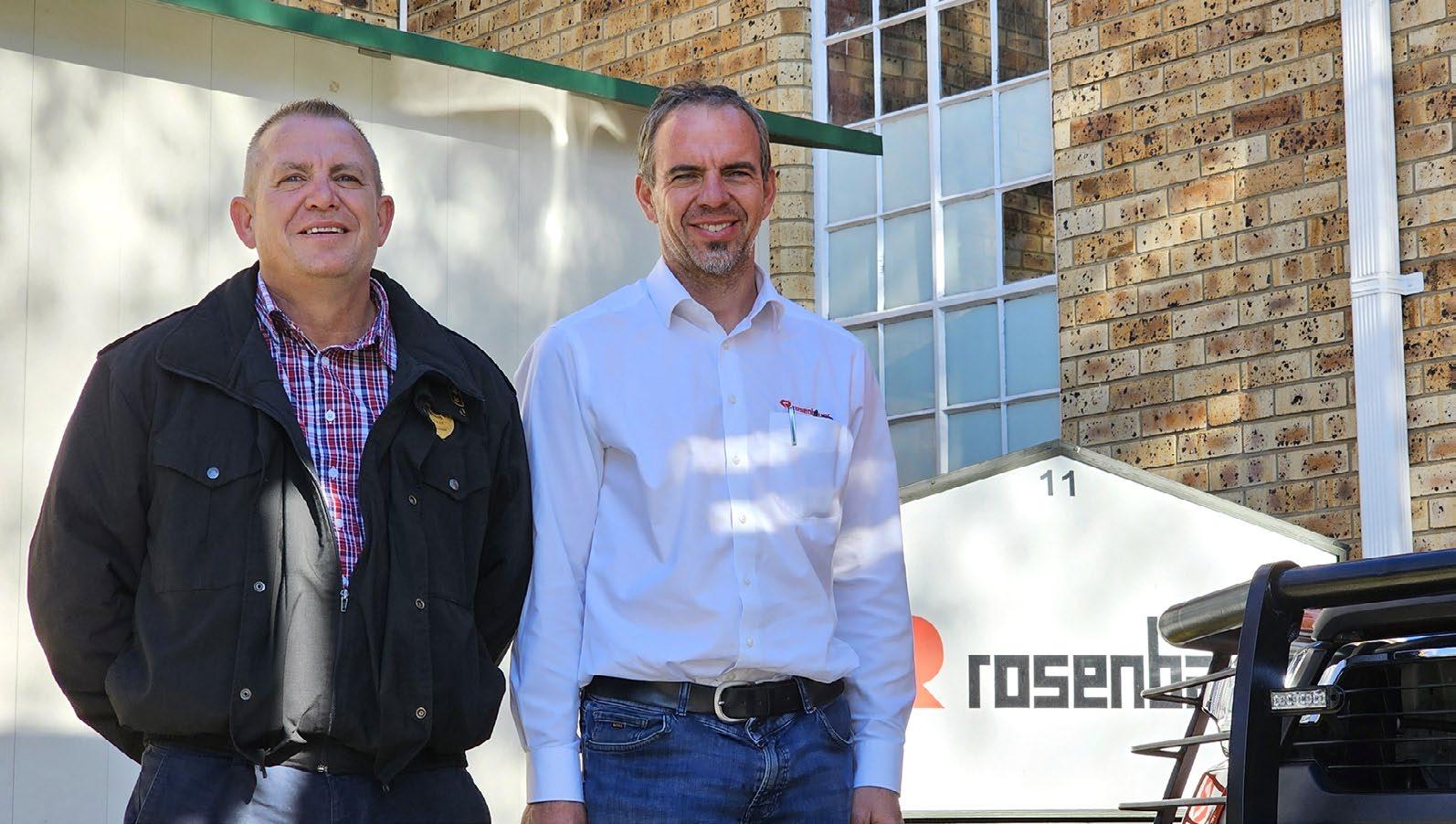
Morné Seyfferdt recently joined Rosenbauer South Africa as sales manager. Seyfferdt will be based at Unit 10, 997 Richards Drive in Midrand, Gauteng. He will be responsible for South Africa and all other Southern African Development Community (SADC) countries for all municipal, petrochemical, industrial, aircraft rescue and firefighting (ARFF) and mining firefighting, rescue and emergency apparatus and equipment.
Fire and Rescue International had a chance to talk to Seyfferdt regarding his background and his decision for joining Rosenbauer South Africa.
Prior to joining the Rosenbauer South Africa team, Seyfferdt worked at Anglo American Platinum for 28 years. “I started as a junior firefighter and went through the ranks until I became the chief fire officer in 2005. In 2016, I was promoted to become the emergency coordinator for the whole Anglo American Platinum Process Division with 200 members reporting to me. I have experience in all fields of the emergency services including municipal, industrial and aviation,” said Seyfferdt.
Seyfferdt’s qualifications and training include fire investigator, rope rescue technician, industrial firefighting, incident commander, hazmat operational,
vehicle extrication, aviation firefighting involving helicopters and risk management.
Achievement
“When I took the position as Emergency Coordinator in 2016, there was no real emergency services department for the Process Division. I started everything from scratch. Firstly, I ensured that I had all my policies and procedures in place. I had to create all of this, as it was a first for many mining companies. Not to get confused with Mines Rescue Services, who services conventional mines and is well established, this was all surface operations. Procedures included recruitment, medical and physical assessments, training
Morné Seyfferdt with Klaus Hörschläger of Rosenbauer, regional vice president sales for Middle East and Africa at Rosenbauer International AG
and development, confined and height rescue etc. I am quite proud of that”, said Seyfferdt.
He added, “My current job entails for me to advise and sell the best products on offer to the emergency market, focusing primarily on firefighting. As this occupation is extremely dangerous and we lose a lot of brothers and sisters every year to this chosen profession, it is my mission to make sure that I can at least try to make it a little bit safer for them”.
“This position is all new to me, as I have always been the end user. The person that picks up the phone and says, I want this and this and then expect the person on the other side of the line to make it happen. Now I am that other person and it is thrilling because it is totally out of my comfort zone and I love challenges.”
Hobbies
“Because of my busy lifestyle, when I have free time I love to spend it with my friends and family. Having a nice South African “braai” and a couple of drinks around the fire is what makes life worthwhile. I also love computer games and play whenever my wife allows me too (joking)!” concluded Seyfferdt.
Rosenbauer is the world’s leading manufacturer of systems for firefighting and disaster protection. The company develops and produces vehicles, fire extinguishing systems, equipment and digital solutions for professional, industrial, plant and volunteer fire services and systems for preventive firefighting.
With revenues of €1 064.5 million and around 4 300 employees, as of 31 December 2023, the Group
is the world's largest firefighting technology provider.
All of the main sets of standards are covered by products manufactured in Europe, the US and Asia.
The Group has an active service and sales network in over 120 countries. The listed family company is in its sixth generation and has served fire departments for more than 150 years. A strong customer focus, innovative strength and reliability are Rosenbauer’s key assets.
Fire and Rescue International welcomes Seyfferdt to the Rosenbauer South Africa team and wish him all the best on the new career!
Contact Morné Seyfferdt Mobile: + 27 76 232 2939
Email: rosenbauer.za@ rosenbauer.com
Rosenbauer ET Effficient Technology
ET Efficient Technology
The ET series from Rosenbauer is built for municipal operations and combines tried and tested Rosenbauer technologies with a consistently efficient design. By standardising the vehicles with variable designs and optional components, the ET series is able to provide fire departments across the world with vehicle technology and equipment that is precisely tailored to their operational situations.
Great importance was placed upon providing an economical overall package. Optionally, the ET series is also compatible with common chassis such as MAN, Mercedes-Benz, Volvo,
Scania, Renault and Rosenbauer Commander, of 12 to 20 tons on different wheel bases.
Body concept: proven Rosenbauer quality
Over 20 years of experience in aluminium technology and metal construction went into the ET. All components of the efficiently built municipal fire fighting vehicle are developed and manufactured at Rosenbauer; from the body module to the firefighting equipment. The integrated solutions are optimally coordinated for maximum performance, stability, and reliability to a certified level of quality. Rosenbauer sets new
international standards with the body concept of the ET.
The profile-sandwich construction from aluminium sheeting makes the ET lightweight, durable and corrosion-resistant. Laser-cut, folded edged aluminium sheets are processed in precisely defined, coordinated work processes. They are subsequently built into high-strength bodies with self-supporting and torsionresistant aluminium and ribbed construction.
This optimises driveability and the low superstructure weight enables a higher load volume. Recyclable materials are used primarily. The water
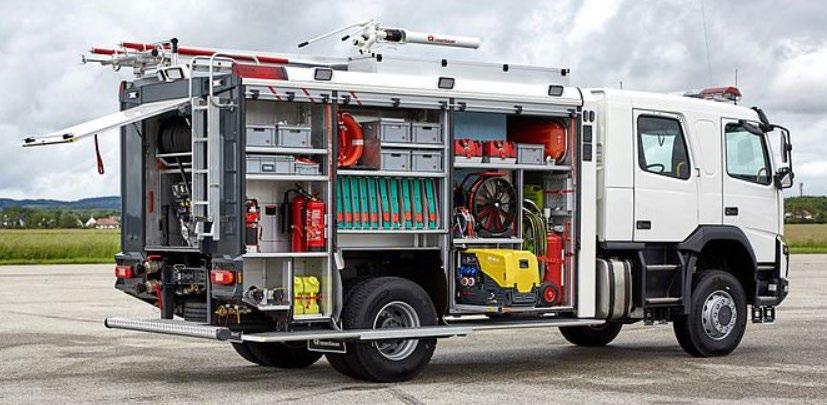
tank is made from materials suitable for drinking water. It can be dismantled at any time in accordance with stipulations in tenders and standards.
Variable loading concepts
With the sophisticated and practical comfort stowage system, the ET facilitates easy, fast, and ergonomic removal of equipment. The system can be adapted at any time to suit the requirements of different operations. This makes the ET extremely flexible in terms of stowage and conversion. There are three different options available in the area of full height lockers:
• The ET with full height lockers and full height locker steps for plenty of storage space
• The ET with full height locker with roller shutters for even more storage space
• The ET without full height locker
Operation
The Rosenbauer ET offers different ways to efficiently and safely operate the vehicle and equipment:
• Electronic operation: The operator communicates with the vehicle and the installed devices via the LCS 2.0.
• Manual operation: Rosenbauer aims for a uniform operating concept in all vehicles. Thus,
the emergency crews can navigate each Rosenbauer fire engine efficiently via manual operation. Optionally, a pump pressure governor with LCS 2.0 is available.
Firefighting equipment: Efficiency in operations
Firefighting equipment is a core competency of Rosenbauer. More than 100 years of experience and the accumulated expertise of the leading manufacturer of firefighting equipment has been put into the pumps and systems of the ET. All firefighting-related components are developed, manufactured and integrated into the vehicle superstructure directly by Rosenbauer. The ET can hold a water tank with a capacity from 1 000 to 5 500 litres, depending on the wheelbase of the chassis.
Combined
normal and high pressure pump
The ET is optionally fitted with high-quality Rosenbauer normal and high pressure pumps. The robust, reliable N/NH25 and N/ NH 45 built-in pumps are easy to use and can be adapted specifically to the chassis, the environment, and the operator. The performance range of the normal pressure pumps reaches from 2 500l/min up to 4 500l/min in suction operation. The high pressure pumps provide up to
400l/min at 40 bar, dependent on the corresponding power takeoff.
Fixmix foam proportioning system
Optionally, the FIXMIX, a mechanically-operated, fully integrated around-the-pump foam proportioning system can ensure optimal fire fighting foam. This adjusts to the pump output and pump pressure and is completely maintenance-free. On the normal pressure side, up to three different fixed preset proportioning ratios can be selected.
Aquamatic direct injection foam proportioning system
Optionally, the ET can be fitted with the water-operated Aquamatic direct injection proportioning system. Up to three different proportioning rates can be selected for each feeder via the double-piston pump with Venturi foam inductors on the discharge outlet. In the normal pressure range, a 0,5 percent proportioning ratio is also available. The water power is self-regulating, so that the necessary amount of foam compound is always available at both normal and high pressure. The Aquamatic direct injection foam proportioning system provides foaming agent volumes of up to 24l/min.
RM24 roof turret
Optional features of the ET also include a manual roof turret. The RM 24 impresses with a maximum output of up to 3 000l/min at 10 bar. The turret is characterised by comfortable operation, a large throw range of 70 m at 10 bar, easy quantity and stream pattern adjustment and numerous other options. The optional foam branch pipe with deflector can be fixed or swivel-mounted.


NDMC holds National Fire Safety and Prevention Seminar
By Dr Bongani Elias Sithole, Head of the National Disaster Management Centre (NDMC), South Africa
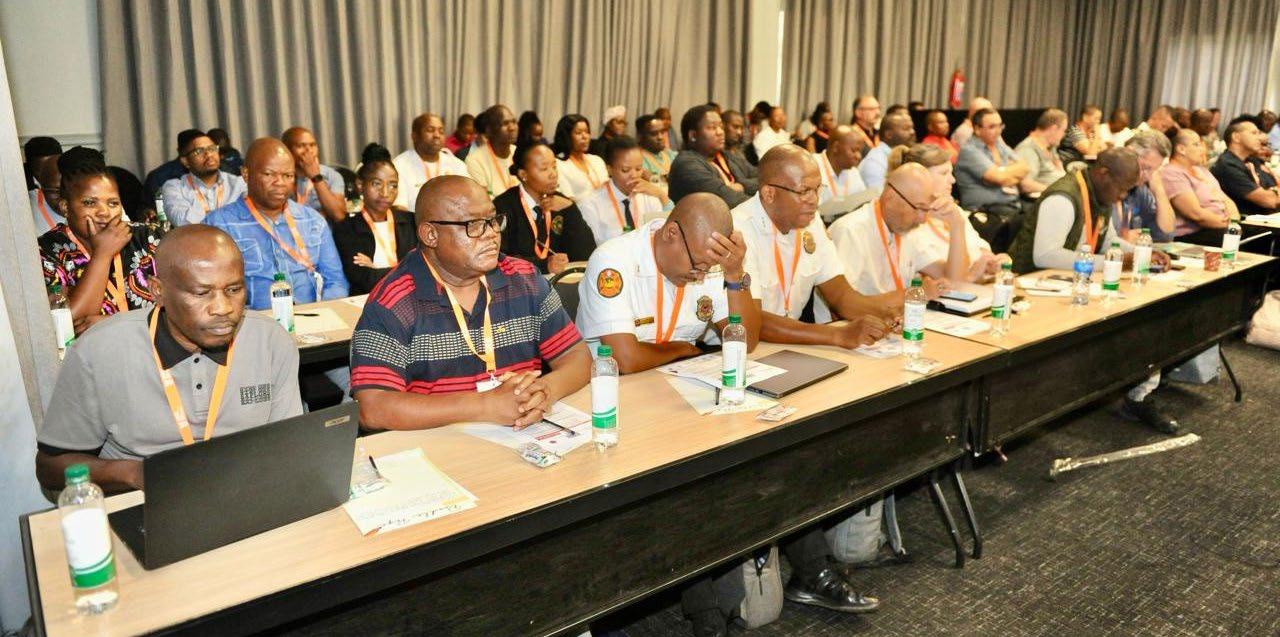
The Ninth National Disaster Management Centre (NDMC) Annual Fire Safety and Prevention Strategy was successfully conducted on 22 to 23 February 2024, at the Birchwood Hotel and Conference Centre.
The seminar hosted approximately 270 delegates which included amongst other: chief fire officers, senior managers from across all spheres of government, representatives of the private sector, disaster management officials, fire safety and prevention officers, Transnet, the Department of Forestry, Fisheries and the Environment
(DFFE), fire protection associations, Fire Protection Association of South Africa (FPASA), Santam, the South African Local Government Association (SALGA), Tshwane University of Technology (TUT), Stadio Multiversity as exhibitors. The NDMC seminar was hosted in the City of Ekurhuleni, within the Gauteng Province, under the wellchosen theme drawn from the Fire Services White Paper Vision for Fire Services: “A fire service that is proactive in preventing fires and other risks rather than simply reacting to fires.”
The seminar took place at a time when South Africa, like
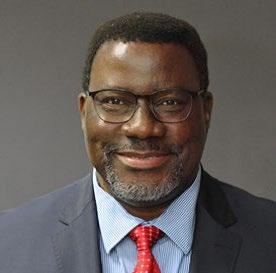
the rest of the world have been experiencing extreme wildfires in several Provinces. Discussions ate the seminar was geared towards better understanding the risks posed by volatile climate conditions
Dr Elias Sithole, Head of the NDMC

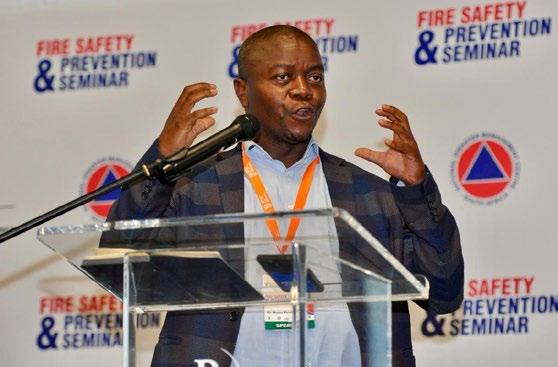
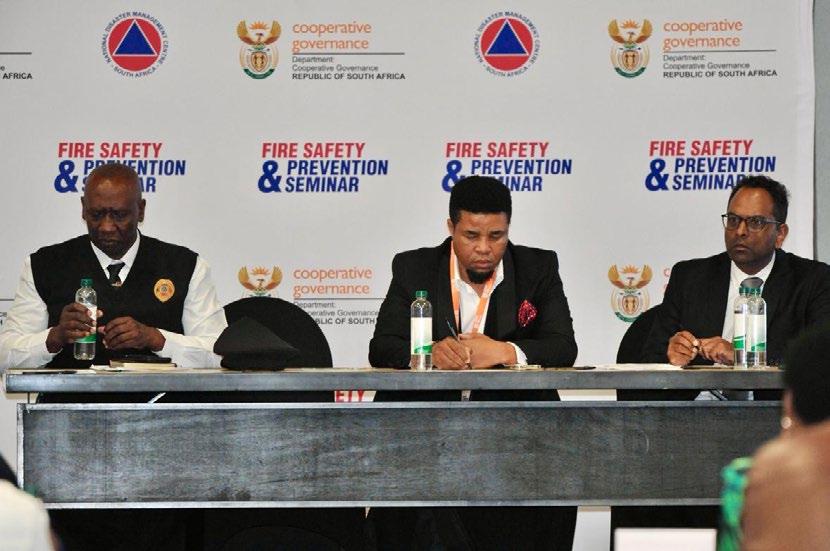
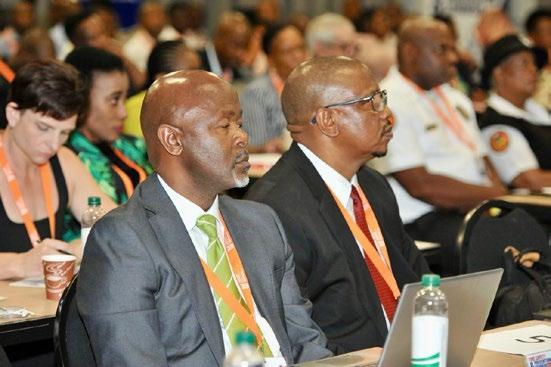
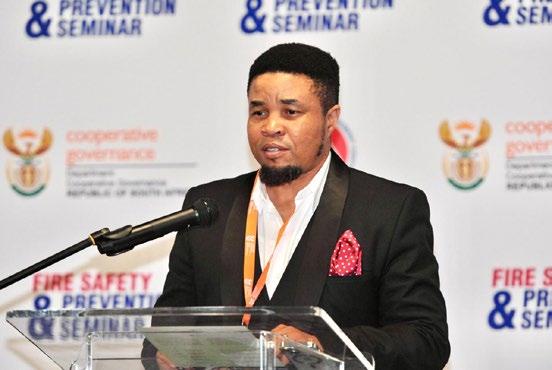
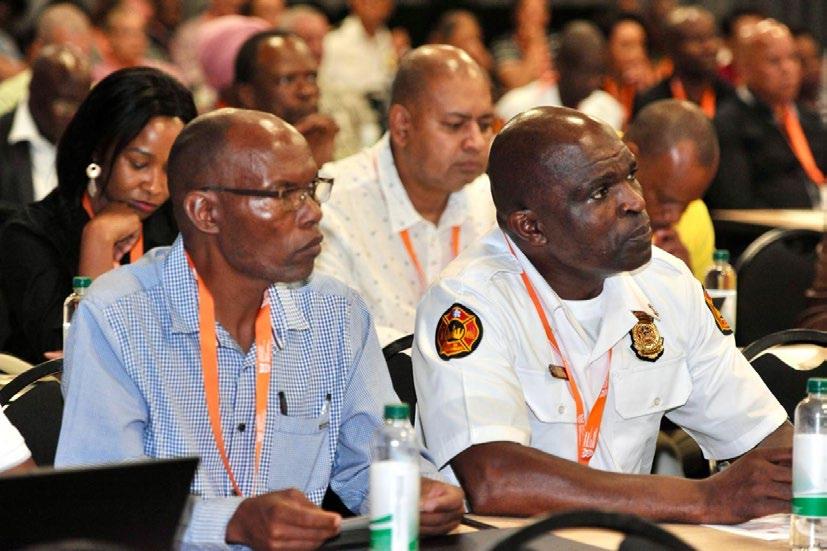
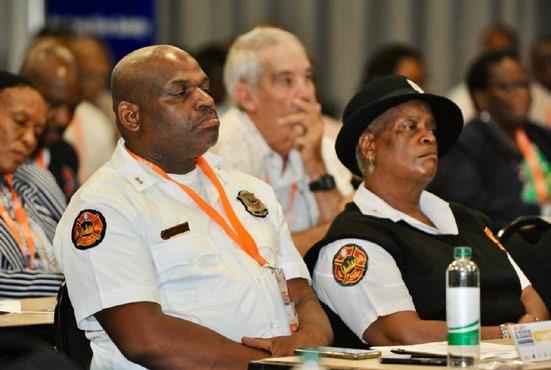

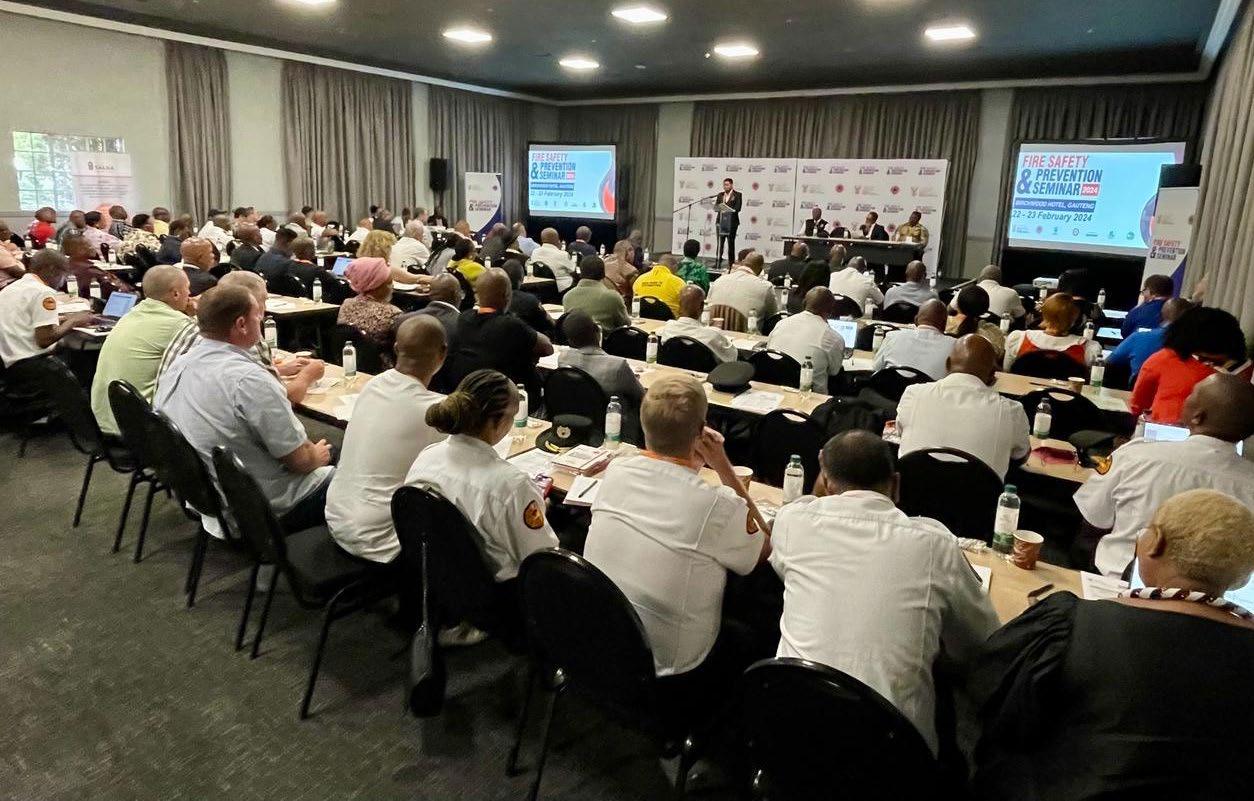
and how to successfully mitigate these risks, to protect the communities that we serve.
The seminar also reflected upon the devastating building fires in the City of Johannesburg Metropolitan Municipality, where seventy-seven people were killed and eighty-eight others were injured.
It also paid considerable consideration to the informal settlement fires which continues to wreak havoc in our communities throughout the country.
Although the seminar started in the shadow of these catastrophic wildland fires and structural fires, it ended with a strong message of hope in the shape of a set of clear resolutions supported by a Draft Fire Services Strategy, towards developing a framework for action towards 2030.
These weather-related incidents intensified our obligation to define a road map for the future and to establish a clear framework for action to identify and reduce fire risk and to ensure resilient communities.
The seminar brought together practitioners in fire safety and prevention from both within and outside fire services from across South Africa, contributing towards the ongoing process of repositioning Fire Services in the country.
In line with the Fire Services White Paper the NDMC encourages fire safety goal setting for the safety of our people, though the involvement of communities, private/public organisations, NGOs and local authorities and making them

an integral part of those goals whilst at the same time making them more aware of their responsibilities to organise and maintain fire safety.
One of the key messages expressed at the Seminar, called for the improvement of existing public-privatepartnership, which was adopted as one of the resolutions and strongly underscored by the Fire Services White Paper calling for the involvement of communities, private/public organisations, NGOs and local authorities and making them an integral part of fire safety and prevention planning.
Key focus areas of the 2024 Ninth Annual Fire Safety and Prevention Seminar
The topics of discussion covered by presenters at the seminar included, amongst other:
• The Fire Services Vision 2030 Strategy
• Importance of public-privatepartnerships, insurance sector, NGOs etc
• The State of Local Government and the impact on the delivery of Fire Services in the country
• Fire safety capacity building in municipalities
• Transportation of dangerous goods
• Challenges experienced with implementation of MHI regulations
• Incident management systems in major incidents
• Revenue generation and sustainability in fire services
• Fire protection association support and Working on Fire contract implementation
• Comprehensive approach to rail industrial fire safety: From prevention to response
• Equipping communities in the informal settlements with fire prevention knowledge
• Innovative technologies to be applied within the Fire Services sector (drones, GIS fire services tools, etc)
Key resolutions taken at the seminar
Through the seminar we were able to draw on and learn important lessons that will assist us to roll-out Fire Services support with better coordination and a focus on integrated projects with stakeholders that focus on building capacity within Fire Services as a driver to address the challenges faced by Fire Services. As a result of our deliberations and discussions at the Seminar we have made the following commitments as a collective:
• To pursue a more integrated approach towards the strengthening of integrated management fire risk
• To adopt a more expansive format as a future model for unpacking issues of Fire Services; the concept of a National Fire Services Indaba was adopted
• To work with provinces and municipalities to improve the Fire Services assessment and data management Tool
• To have a further look the gaps in current legislation, and issue regulations in closing those gaps and strengthening the delivery of Fire Services
• To build on the momentum of this seminar to accelerate implementation of the reviewed Fire Services Legislation
• That provinces conduct individual annual Fire Safety Seminars, thereby ensuring that fire safety and prevention remains at the centre of our priorities and policies.

George Fire Brigade acquires state-of-the-art Rosenbauer major pumper to meet city’s growing needs
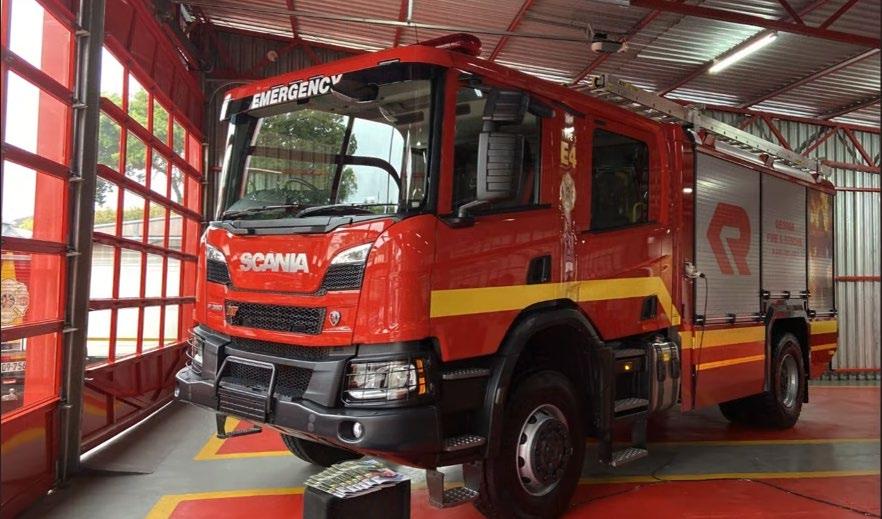
The George Fire Brigade proudly welcomed a new state-of-the-art Rosenbauer TLF 3000/200 ET (Efficient Technology) major pumper into their fleet featuring a built-in foam system, specifically designed to combat high-hazard flammable liquid fires such as gasoline, oil and jet fuel, ensuring enhanced effectiveness and safety during firefighting operations.
The new Rosenbauer TLF 3000/200 ET major pumper is built on a Scania P 360 B4x4 HZ chassis with a 265kW Euro 3
engine, a 4 550mm wheelbase and an automatic transmission.
The Scania original CP28 crew cab seats a crew of six and is fitted with three-point safety belts on all seats and four Rosenbauer Comfort breathing apparatus (SCBA).
The Rosenbauer aluminium superstructure consists of a selfsupporting, screwed sheetmetal and profile construction according to EN1846:2013 and a roof access ladder. It has full height body equipment compartments with roller shutter
doors and hinged steps. The Comfort revolving shelves allows for the optimum removal and safe storage of the equipment.
Extinguishing systems
The NH35 combined normal/ high-pressure pump has an output from 3 500l/min at 10 bar and 400l/min at 40 bar.
It boasts a 3 000-litre water tank, a 200-litre foam tank volume and a FIXMIX automatic ‘around-thepump’ type foam proportioner with 1%, 3% and 6% mixing rates.
There are four manual pressure outlets in the rear side
compartments left and right and one suction inlet.
The Rosenbauer RM 24 M foam/water monitor is manually controlled with 3 000l/min output at 10 bar and a 65m range.
The Quick Attack unit has two electric high-pressure hose reels with 60m of 25mm hose, one on each side of the vehicle with a 200l/min at 40bar Nepiro fog nozzle.
As the urban landscape of George continues to evolve and expand, so does the demand for exceptional fire and disaster services. Recognising this imperative, the acquisition of this advanced Rosenbauer major pumper reflects the commitment of George Fire and Disaster Management Services to meet the evolving needs of a smart city and to uphold legislative requirements aimed at protecting residents.
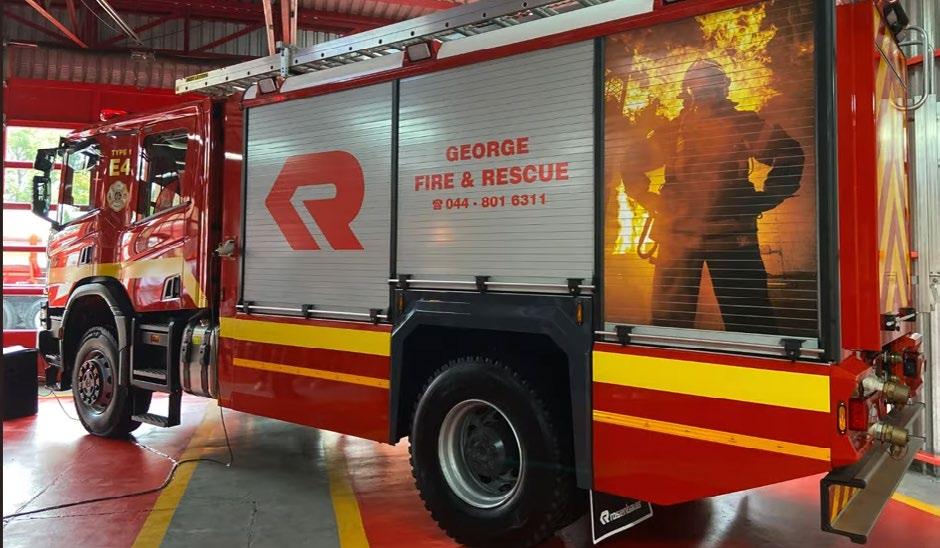
Director for Community Safety, Dawie Adonis, was presented with the key to the vehicle during a prestigious event hosted by the George Fire Brigade, attended by the Executive Mayor, Leon Van Wyk, MAYCO members, Municipal Manager Dr Gratz, directors and distinguished guests from Rosenbauer and Scania.
Executive Mayor Leon van Wyk expressed his pride
in the municipality taking ownership of the Rosenbauer major pumper. “Both George and Rosenbauer are steeped in histories of over 200 and 150 years respectively. It is therefore fitting for George to have acquired the newest fire technology and equipment available from a world leader. We are blessed with a top-notch fire and emergency services team that are professional,
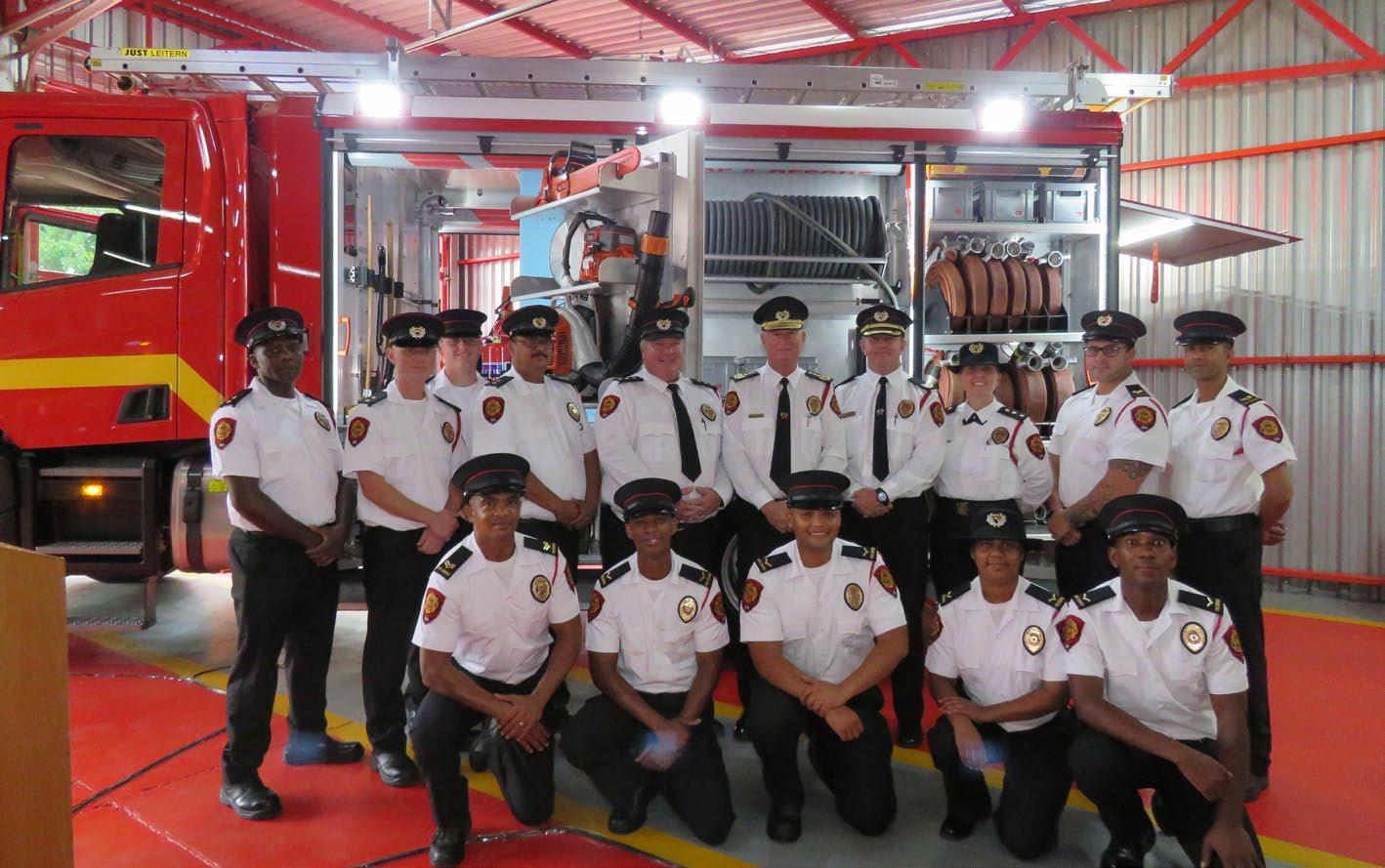

alert, prepared and constantly focussed to be ahead of the game,” he said.
Highlighting the significance of this acquisition, Director Adonis emphasised the importance of embracing technological advancements to effectively combat modern fires, both
in urban developments and the surrounding wildlands cherished by the community.
“Our fire officials will undergo comprehensive training conducted by Rosenbauer technicians as well as the brigade’s own training officials to ensure proficient and reliable use of the equipment,” he stated.


Reflecting on the journey leading to this acquisition, George Fire Chief, CFO Neels Barnard, recalled the humble beginnings of the George Fire Brigade’s first Rosenbauer pump in 1989, emphasising its continued reliability and service to the community. Overcoming financial obstacles and navigating procurement processes and regulations, the Fire Brigade has persevered to procure the new vehicle, knowing it will play a vital role in saving lives and protecting property for years to come.
“The addition of this state-ofthe-art fire engine underscores the George Fire Brigade’s unwavering commitment to excellence in service delivery and community safety, ushering in a new era of firefighting capabilities for the city of George,” CFO Barnard said.

Fire protection is environmental protection
By Frank Preiss, managing director, FireDos GmbH
This also is true for fire protection and has more meaning now than ever. One of the images we all have in mind are the increasing number of wildfires all over the world, the other is the contamination of soil and water through the forever chemical Fluorine, which has been an integral part of firefighting foams for decades.
In general, the following applies: holistic, preventive and defensive technical fire protection not only offers lasting safety, but also protects people, property and the environment.
FireDos has seen its mission in the design and manufacture of more efficient extinguishing systems by innovation for decades. This has always been a guiding principle in preventive and defensive fire protection. And thanks to durable technologies and innovative developments, it not only protects lives and property but also makes the planet safer in the long term.
With each industrial, residential and natural fire thousands of environmental toxins are released and spread over square kilometres in the air as well as in the ground. Any damage analysis will show the connection between fire protection and environmental protection. Not only smoke, damaged property and fire residues can
have a negative impact on the environment but also substances used in firefighting. These include halon extinguishing agents, which since 1991 may only be used in exceptional cases (e.g. in aircraft) as well as Fluorine that has been used in firefighting foams since the 1970s. Extinguishing water can also contribute to environmental damage by washing pollutants into the soil and ground water. In general, there is a lot of discussion about how harmful extinguishing agents can be to the environment but too little about how much environmental damage is prevented when extinguishing systems are used successfully. In principle, the earlier and more successfully a fire is fought, the less its effects will be.
At present, the selection for a specific firefighting system is

Frank Preiss
still predominantly based on two criteria: efficacy and costs; the latter unfortunately often is the determining factor for the ultimate decision. Considering the growing focus on environmental, social and corporate governance (ESG) principles this must change.
Why does FireDos consider fire protection as environmental Protection?
During the development phase of its foam proportioners one of the focal points of FireDos was the question on how the product can help reduce the environmental impact. On one hand this will be during the manufacturing process, on the other it will be looking at the firefighting aspect itself.
Following is a range of examples for fire protection being environmental protection.
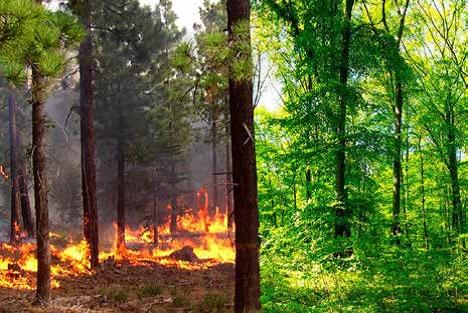
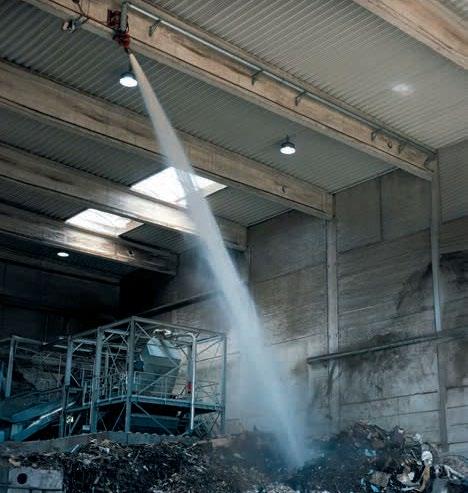
Longevity of the product
Fire protection equipment is often installed and, fortunately, often will sit idle for a long time, if not for ever. We at FireDos even tell our customers that we hope our equipment is never used in a real incident in their facility. But to assure that the equipment does function reliably when it is needed, the product must be regularly maintained and tested. All FireDos products are designed and manufactured in a way that will assure a longevity of the product paired with a minimum requirement for maintenance.
ISO 14001: Reduction of the carbon foot print
Besides being ISO 9001 certified, FireDos has been ISO 14001 certified since 2001. For over 20 years auditors
have been reviewing and certifying our efforts in the development, design, manufacture, sales and service for firefighting proportioners and monitors in accordance with our Environmental Management System.
Continuously we are striving to reduce our waste, lower energy consumption and optimise efficiencies. At present a focus is being put on the reduction of our carbon footprint. Besides being in the process of converted the lighting of all facilities to LED, we have installed a first phase of solar panels at our Olesno, Poland manufacturing site, where lathing, milling and welding operations are conducted. Presently we are producing 30 percent of our required energy in house. This will be extended to
“During the development phase of its foam proportioners one of the focal points of FireDos was the question on how the product can help reduce the environmental impact.”
50 percent next year and further plants will follow.
Water supply reduction by using wetting agent
The majority of bush- and wildfires are extinguished with water. For the past year FireDos has been promoting the use of wetting agents as an alternative.
Wetting agents, known since the mid-1960s, is known as water mixed with a regular foam concentrate in a greatly reduced mixing rate. Generally mixing rates of 0,1 percent to 0,3 percent are used. They aim to reduce the surface tension of water, which enhances a fire brigade’s ability to suppress fires more rapidly. The water’s wetting capability is improved thereby providing faster penetration and greater fire control while minimising post fire clean up time and conserving valuable water resources. About 60 percent of the water, mixed with a wetting agent, is needed, compared to pure water.
The intelligent use of chemicals, such as foam agents, can have a great effect by reducing the chemical load induced into the environment, conserving resources like water, and protecting nature by speeding up extinguishing results.
IR-hot spot detection and automatic extinguishing
Click photo to watch the video

The FireDos proportioning technology are optimally suited to produce wetting agents.
More efficient extinguishing means less collateral damage Beside the above mentioned more efficient use of firefighting resources the industry is also offering and advancing technologies that will allow a quicker detection and extinguishing of developing fires. This in return will not only reduce
the amount of resources used but also reduce the damage to property and environment as well as possible collateral damage.
Early fire and hot spot detection with automatic extinguishing There is a high risk of fires, especially in waste to energy, recycling, wood and paper processing plants. Early fire detection systems using infrared detection allow early identification of potential fire

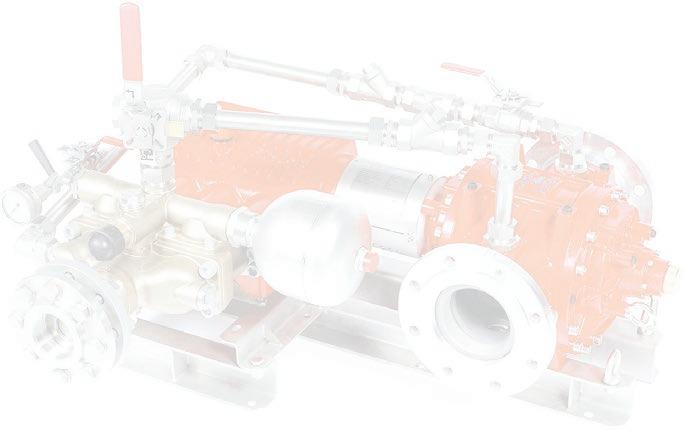
sources, resulting in rapid alarm and associated quick response times. Hazardous hotspots, created by hot gases migrating to the surface within a waste bunker or storage heap that may turn into an extended fire are identified within minutes, even before smoke or flames may appear. This way fires can be extinguished before they have developed into large scale fires, which reduces the environmental impact greatly.
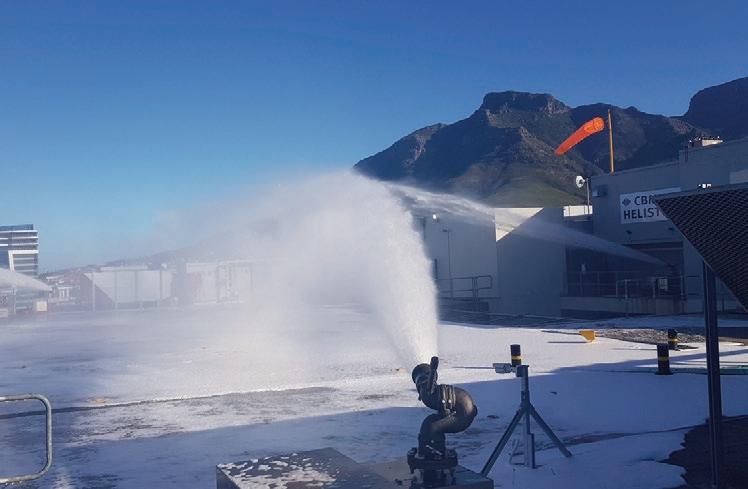
The early fire detection system allows the full-surface monitoring of large areas using panoramic thermal imaging. Combined with intelligent analysing software, this enables the precise localisation of a fire source. If this location is relayed to remote-controlled fire monitors, pinpointed extinguishing with water or foam can immediately commence. Even though the fire brigade should still be alerted, the threat of an open fire can be efficiently tackled at a very early stage. The extinguishing approach in a limited area will help reduce collateral damage and avoid lengthy and costly system downtime with little effort. Suppliers like FireDos offer a variety of coupled fire detection and automatic extinguishing systems.
Purely mechanical: no requirement of external power
The purely mechanical concept of the FireDos proportioner consists of a water motor and a piston pump, featuring absolute functional safety. Driven just by the firefighting water flow, no electricity and no backup power supply are required.
Foam concentrate return when testing the mixing rate
Fire extinguishing systems must be tested regularly to ensure their functionality in case of fire. The same applies for the proportioning system. The return line connection enables return of the foam agent back into the foam agent tank under live operating conditions while its volumetric flow rate is measured. The results of this and the measured quantity of water which passes through the unit at the same time are used to calculate the proportioning
rate. While doing so, no premix or firefighting foam is produced.
This is how easy, environmentally friendly and economic foam proportioning rate testing can be:
• The testing cycle can be activated via the ball valve ‘returning/proportioning’.
• While the extinguishing water is circulating, the flow rate is measured.
• The water motor drives the proportioning pump in a direct ratio to the extinguishing water.
• Foam agent is circulated back to the foam tank and measured by a magneticinductive flow meter.
• The proportioning rate can be calculated.
Switch to non- fluorinated foam agent
Legislations in various parts of the world have started to ban the use of Fluorine in firefighting foams, primarily for the protection of people and animals, as it is very harmful to the health. The industry has reacted to develop less harmful foam agents, however, for a large part, the suitability for all foreseeable extinguishing scenarios still must be proven and they have to be approved by the authorities.
With the switch to environmentally more friendly foam agents being a step towards environmental protection, FireDos concentrated its focus on the technology necessary to proportion these new foam agents. In contrast to the most widely used AFFF and AFFF-AR, the foam agent concentrates developed by the various foam agent manufacturers are based
on different formulations, which have different physical properties. In general, an increased viscosity and plasticity can be assumed in comparison to the Fluorinecontaining foam concentrates. Due to the different physical properties of the foam agents, the necessary proportioning or mixing equipment must be checked for suitability. With one of the development focusses of the FireDos GEN III foam proportioners having been high viscosity Fluorine-free foam agents, it can be said that all FireDos Gen III proportioners are designed to function with the new foam agents.
Wherever you look environmental protection and sustainability are moving up on many agendas. And that is a good thing. But if you really want to move ahead, you must start immediately, find holistic solutions and apply them consistently. And thanks to the availability of long-lasting technologies and innovative developments, it not only protects living beings and property but also makes the planet safe in the long term.
FireDos are experts in foam concentrate proportioners and monitors for firefighting, focusing on their in-housedeveloped leading technology and customer service and are available through DoseTech Fire.
This article is reproduced with kind permission from MDM Publishing Ltd and Gulf Fire magazine.
Contact Mike Feldon DoseTech Fire on Mobile: 083 251 9346, Email: mgf@dosetech.co.za www.dosetech.co.za

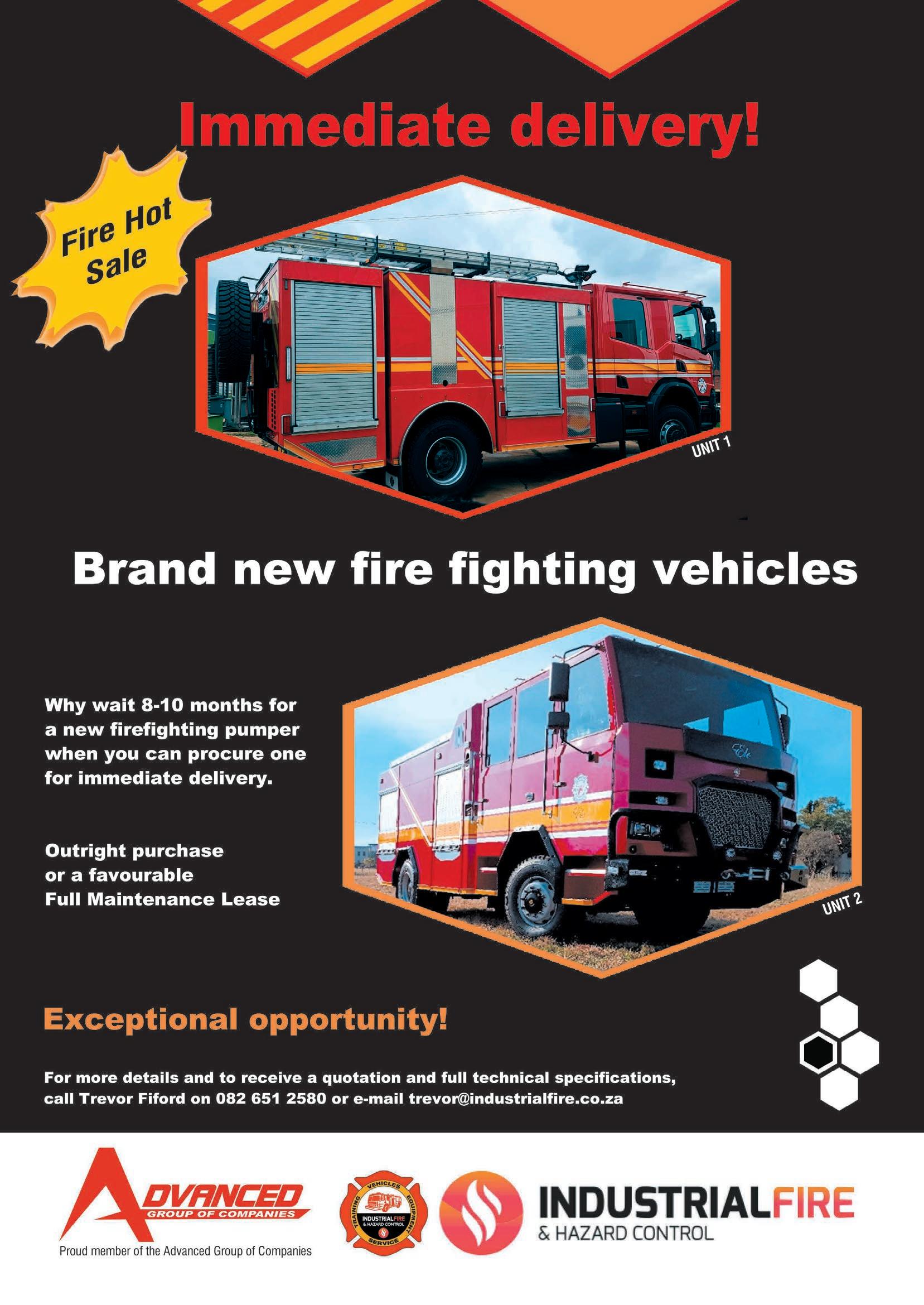
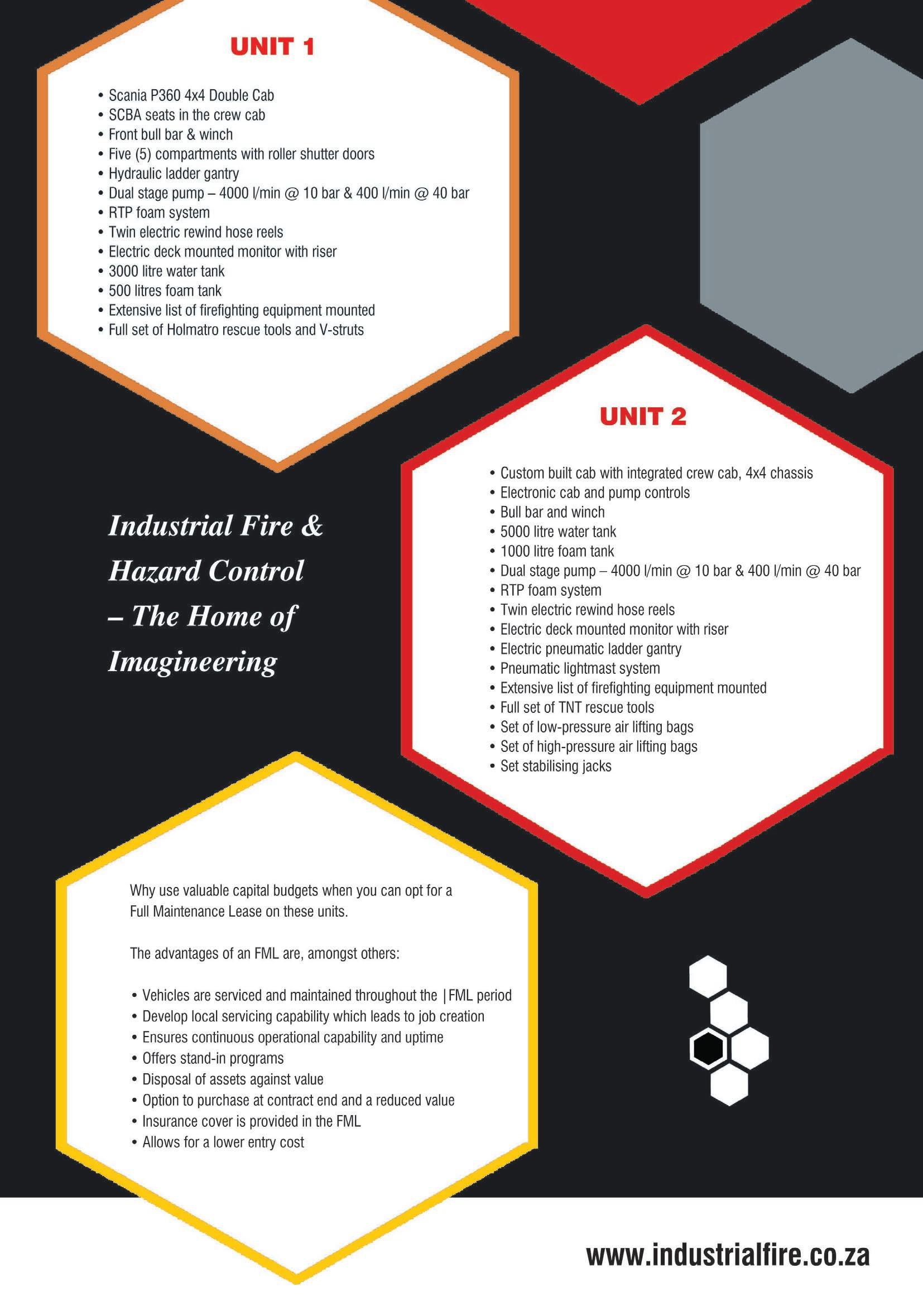

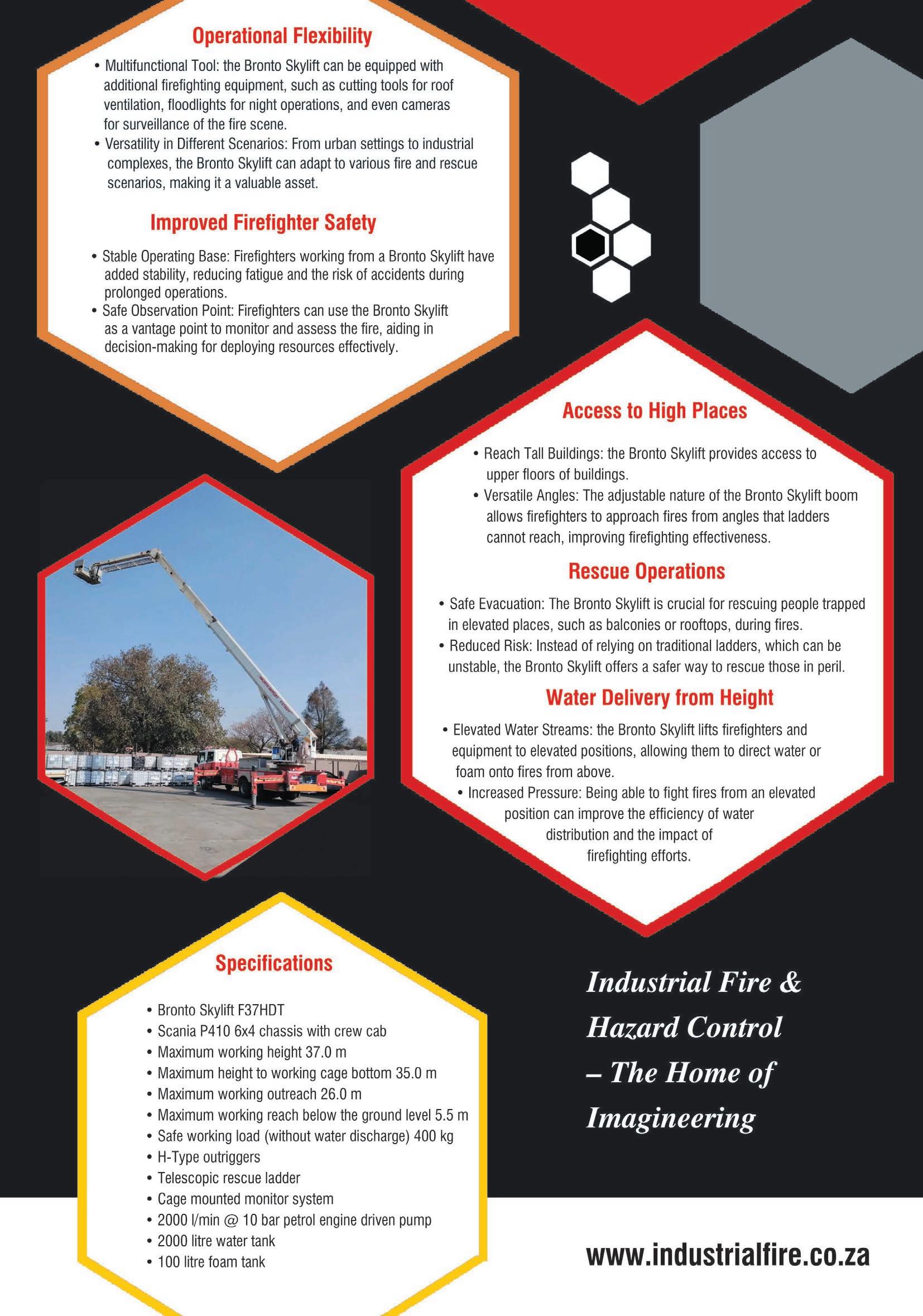

Toughest Firefighter Alive South Africa 2024
Entries close 31 August 2024!

The 9th edition of South Africa’s ‘Toughest Firefighter Alive’ (TFA-SA) Open competition will be held at De Bakke beach in Mossel Bay on Thursday, 26 to Saturday, 28 September 2024. Registration will close on Thursday, 31 August 2024. The 2024 Toughest Firefighter Alive Challenge promises to be an exciting event, with Industrial Fire and Hazard Control and Survival Technology as the main sponsors. There will also be various industry exhibitors including Dräger South Africa, Vanguard Fire and Safety, Charnaud, Uhambo Procurement and Distribution etc with the Mini TFA attracting the little ones and families on Saturday.
The TFA-SA is based on the international Toughest Firefighter Alive’ Challenge, the blue riband event of the World Firefighter Games (WFG). The WFG started in Auckland, New Zealand 1990 and is held in a different country
every two years with the winner of the TFA Competition at the WFG being crowned the World’s Toughest Firefighter Alive, a very prestigious award.
The TFA-SA South Africa’s premier fire fighter event was held for the first in Cape Town at the Good Hope Centre on October 2011 with a total of approximately 80 competitors. The event has been primarily hosted in Cape Town, then in George in 2016 and with Mossel Bay hosting the event from 2022 until 2024. The 8th Edition of the event held in Mossel Bay 2023 attracted a South African record amount of 168 individual firefighter competitors’ participants, with 43 relay teams from 30 different municipalities and entities.
The Firefighters for Excellence Foundation South Africa exists to promote and encourage elite fitness amongst firefighters,
acknowledging the critical role fitness and wellness plays within the firefighting profession, in ensuring the safety and wellbeing of our communities.
Individuals, municipalities, volunteer organisations, private firefighting companies and industrial and military firefighters are encouraged to support and partake in TFA-SA. The event provides the opportunity to collaborate and benchmark the South Africa’s firefighters whilst enhancing service delivery through fitter, stronger fire fighters, build community relations, motivate fire fighters and restore local and national pride in the fire services.
Contact Toughest Firefighter Alive South Africa
Mark Smith
Mobile: 071 676 4272
Email: tfa@fireandrescue.co.
Website: www.frimedia.org/tfa
Register: Link

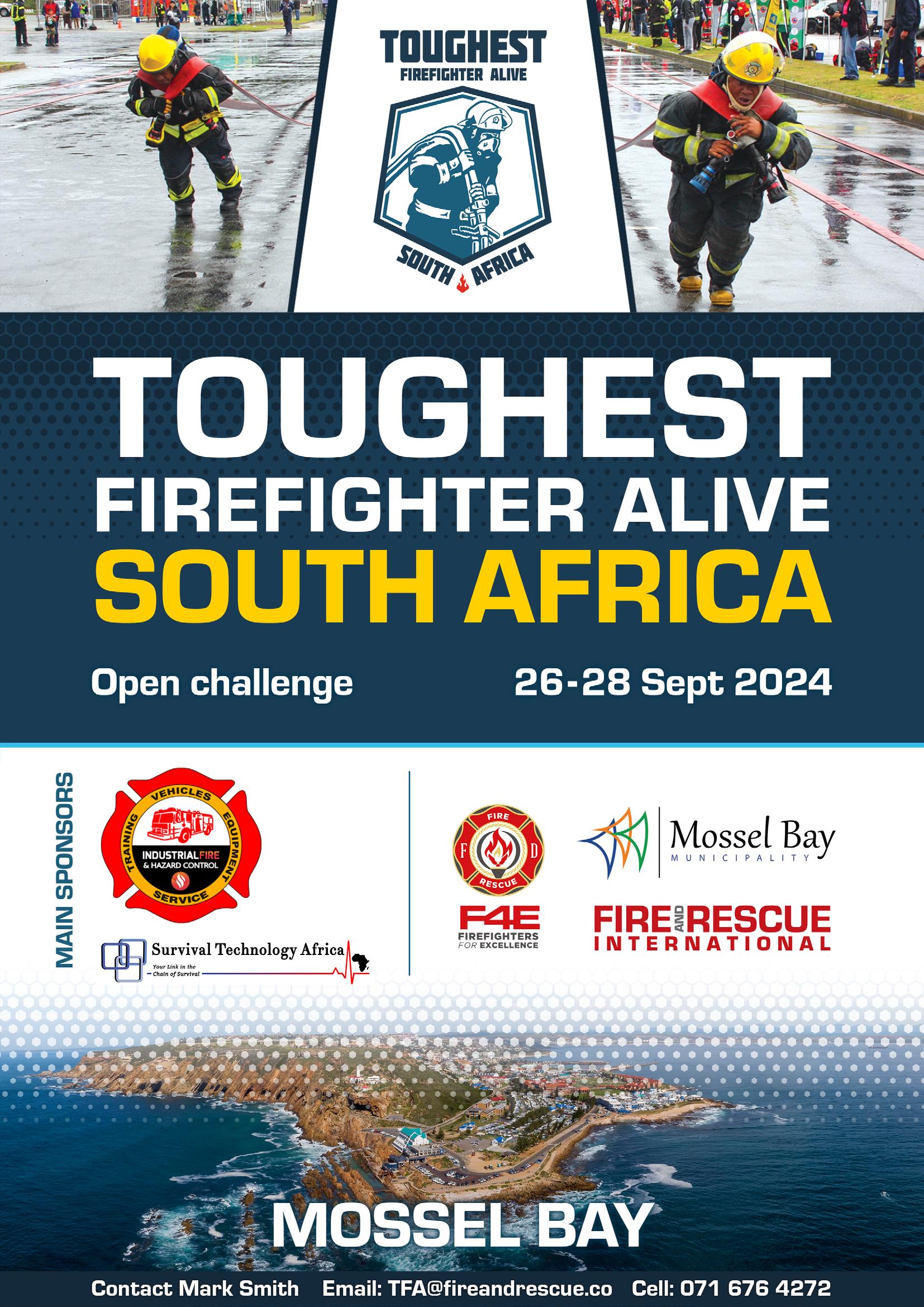
Industrial Fire launches the Mamba wildland interface pumper

Industrial Fire and Hazard Control is proud to launch the Mamba wildland interface pumper in the African market. The Mamba has been specifically designed and engineered to protect urban, rural, mining, aviation and industrial facilities/ sites against the ever-threatening wildland fires. The Mamba is designed to provide an effective and efficient response in case of an emergency.
The robust construction, utilising large dimensional aluminium extrusions, offering an extended operational lifespan, is mounted onto the world’s foremost off-road vehicle, the Unimog U4000. The Unimog U4000 offers enhanced mobility and
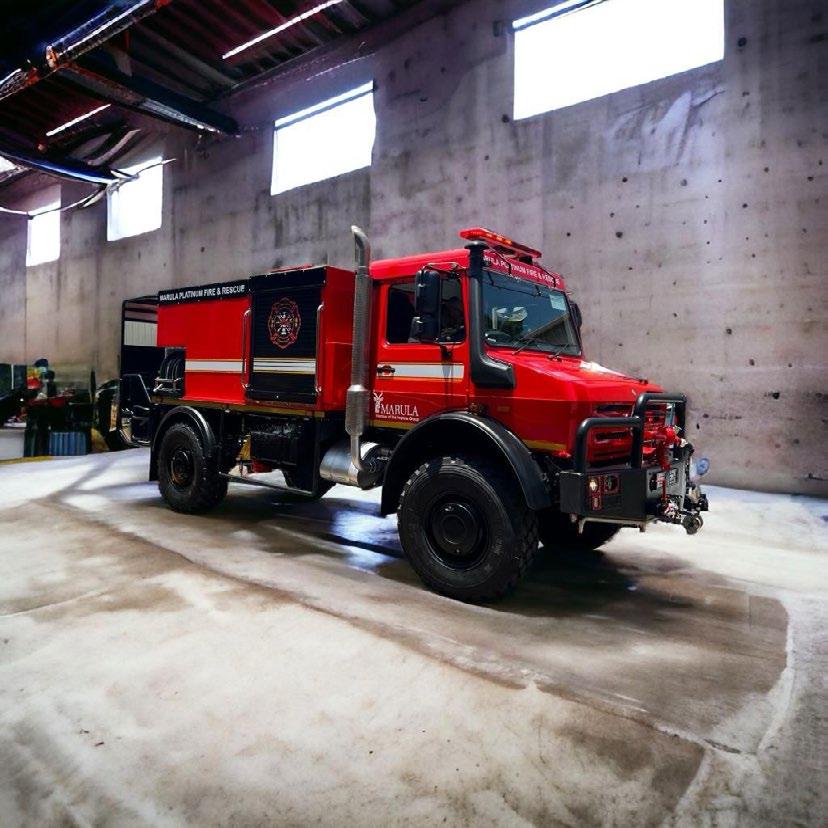
optimises manoeuvrability with all-wheel drive and independent suspension, excellent ground clearance and adequate approach and departure angles.
The Mamba is fitted with an advanced fire suppression system that offers cutting-edge fire suppression technology through the PyroUHP HyLo pump set-up. The PyroUHP is fitted with an integrated foam system to allow the application of either Class A or Class B foam dependent on the risk.
The through compartment provides for the mounting of an array of firefighting and rescue equipment including, amongst others, hoses, axes, nozzles and rescue tools.
The Mamba is fitted with a HyperSight thermal imaging camera to detect hot spots and monitor temperature changes within the fire scene.
Significantly enhance the firefighting and rescue capability and operational efficiency with the inclusion of the Mamba wildland interface pumper in your firefighting fleet.
Call for specifications today:
Trevor Fiford
Tel: +27 82 651 2580
Email: trevor@industrialfire.co.za/ info@industrialfire.co.za
Visit the website: www.industrialfire.co.za.
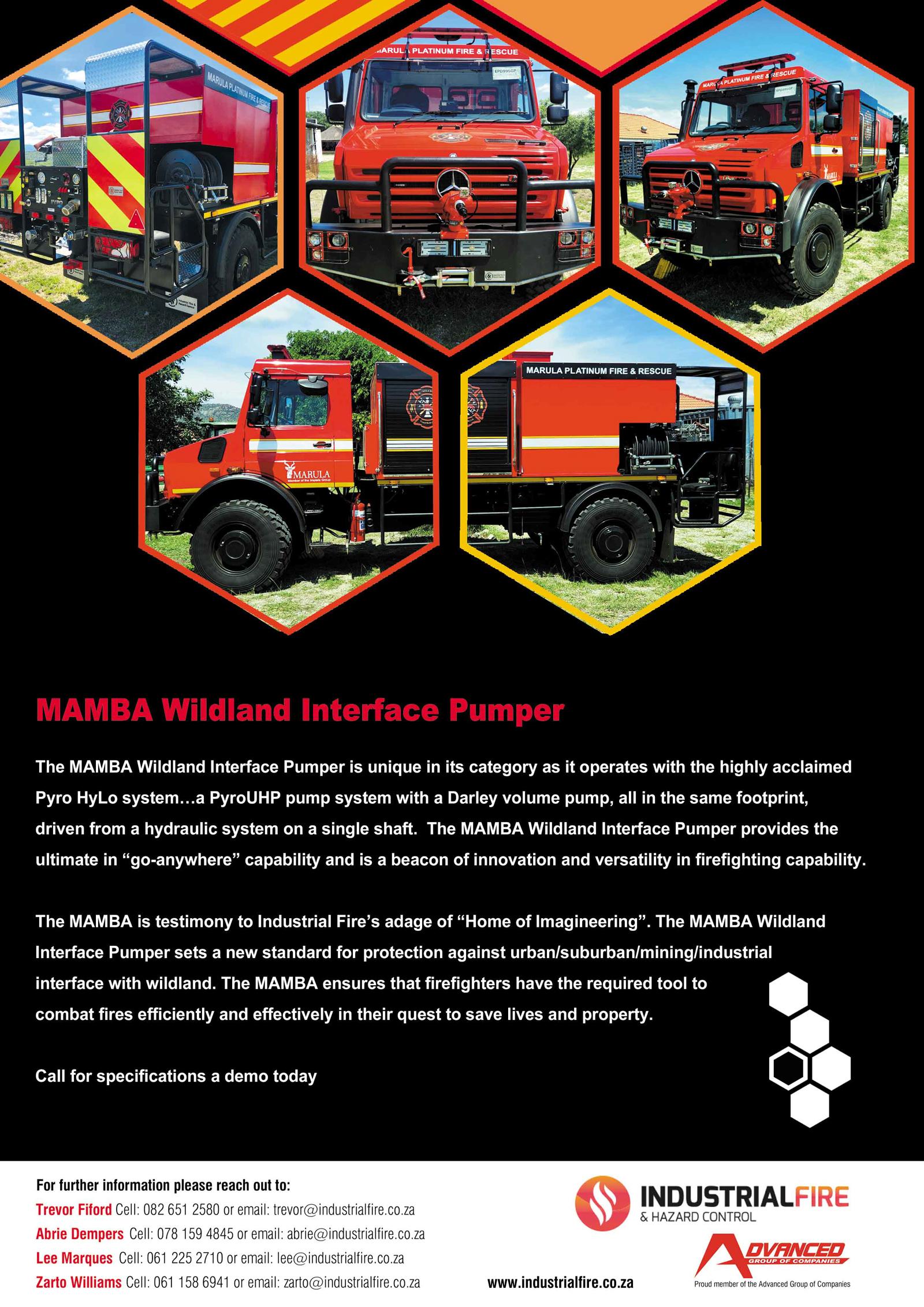
Stihl’s BR 800 backpack blower for fire management
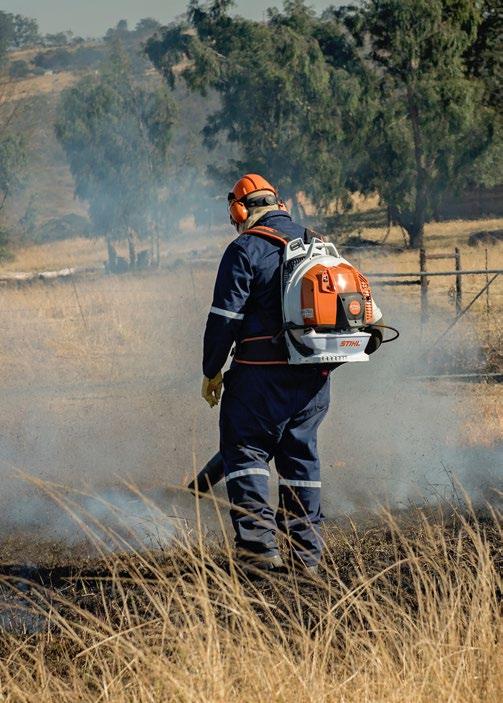
The BR 800 is Stihl’s most powerful backpack blower to date. Designed with both power and comfort in mind, this machine is a fantastic choice for local authorities, fire managers, farmers and contractors with enough strength to take on the toughest jobs with ease.
Blowers have been used to help fight wildfires for decades. They are an integral piece of equipment commonly used by firefighters globally. While no blower is a stand-alone fire management tool, they are an important and useful tool to any fire-management team. These blowers are also utilised in diverse applications by users dealing with large properties and heavy debris.
With a blowing force of 41 Newtons (BR 700 is 35 Newtons),
the BR 800 C-E will quickly and effectively clear hard-to-reach areas of potentially flammable organic material like leaves and grass. When managing grass fires, the BR 800 C-E can remove and reduce the fuelload, thereby reducing the risk of the fire rapidly spreading.
The Stihl BR 800 C-E blower can supply continuous controlled air to help to create a very hot fire that burns and clears firebreaks faster and more efficiently. It is comfortable to use for extended periods than hand-held tools and it possesses an ergonomically friendly power-to-weight ratio and an anti-vibration system for reduced user fatigue.
Excellent power to weight ratio makes the BR 800 easy to operate. Thanks to the ergonomic carrying system (S shaped shoulder strap, chest strap and hip belt) it is comfortable to use throughout the day. The strain reducing blower tube makes it easy to handle too. Unlike other backpack blowers, starting the BR800 is simple and easy to do thanks to the side start pull cord. The blower can be easily restarted when with a firm pull of the side cord, this saves significant time – so important when saving minutes can mean saving lives. It can also be stopped using the switch on the handle so there’s no need to remove the machine if you’re taking a quick break or wanting to move from area to area.
The length of the blower tube and position of the handle can be adjusted quickly without the need for tools. The blower tube is easy to swivel and has a wide blowing range, lowering the strain felt when working. It also features the Stihl Anti Vibration System to reduce the vibration felt on your back. . A handy eyelet is located in the backplate which allows you to hang the blower up for storage.
The Stihl 4-MIX® engine is a four-stroke engine that does not require any oil circuit components, thanks to refuelling with an oil and gasoline mix. That’s why it’s more compact, more lightweight and requires less maintenance than conventional four-stroke engines, while at the same time being powerful and offering a comfortable sound pattern. Stihl 4-MIX® engines comply with the European Stage V emissions directive. The 4-MIX engine of the machine means lower fuel consumption and an increase in run-time meaning more time can be spent working.
Technical details
Blowing force: 41 N 1)
Weight: 11.7 kg
Maximum air velocity: 97 m/s
Air throughput: 1 700 m³/h
Sound pressure level: 104 dB(A) 2)
Contact your Stihl dealer for more information or visit www.stihl.co.za

The powerful Stihl BR 800 backpack blower
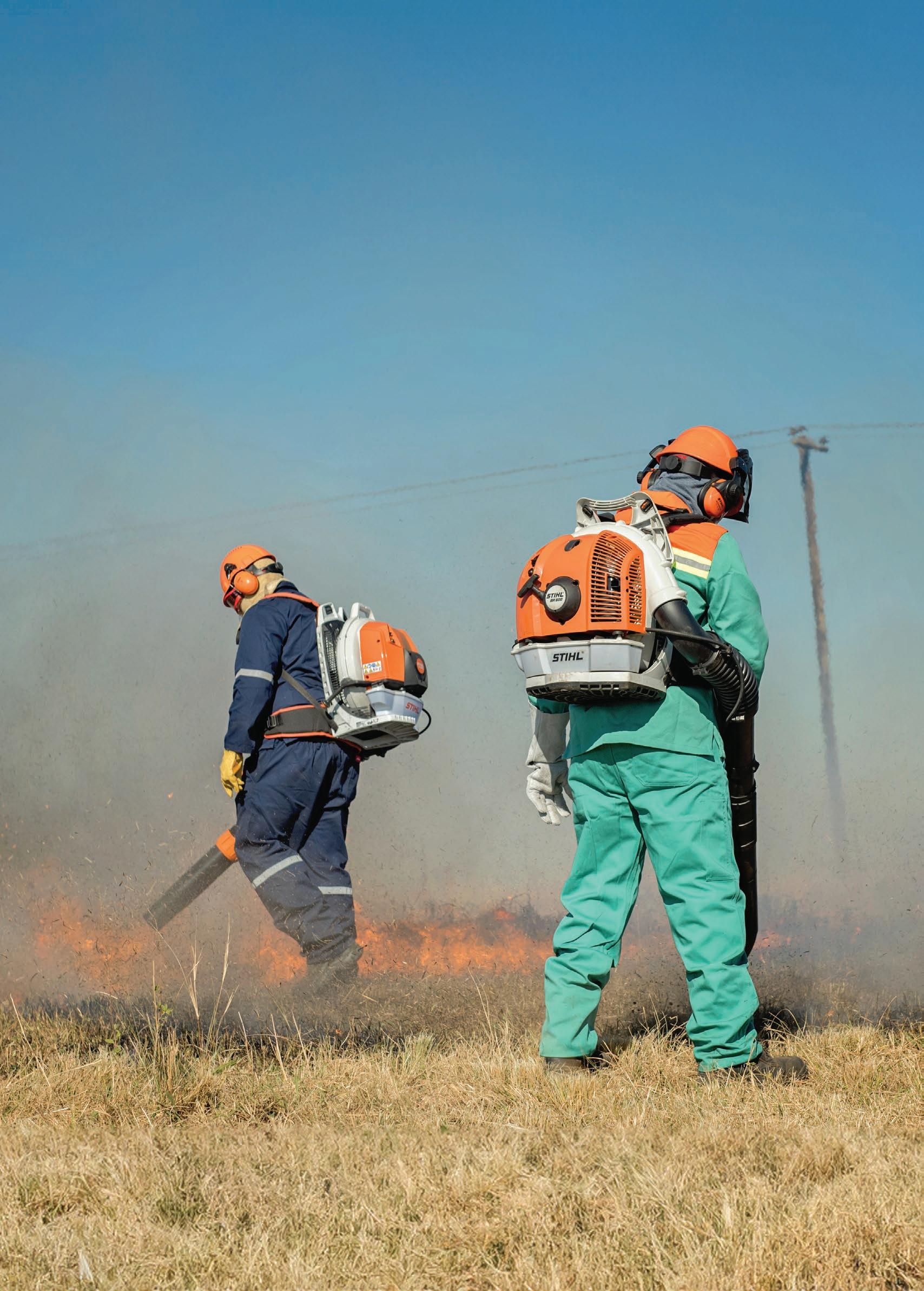
Tackling wildfires with data: The MAPSS solution
By Dr Pieter Olivier, director, MAP Scientific Services (MAPSS)
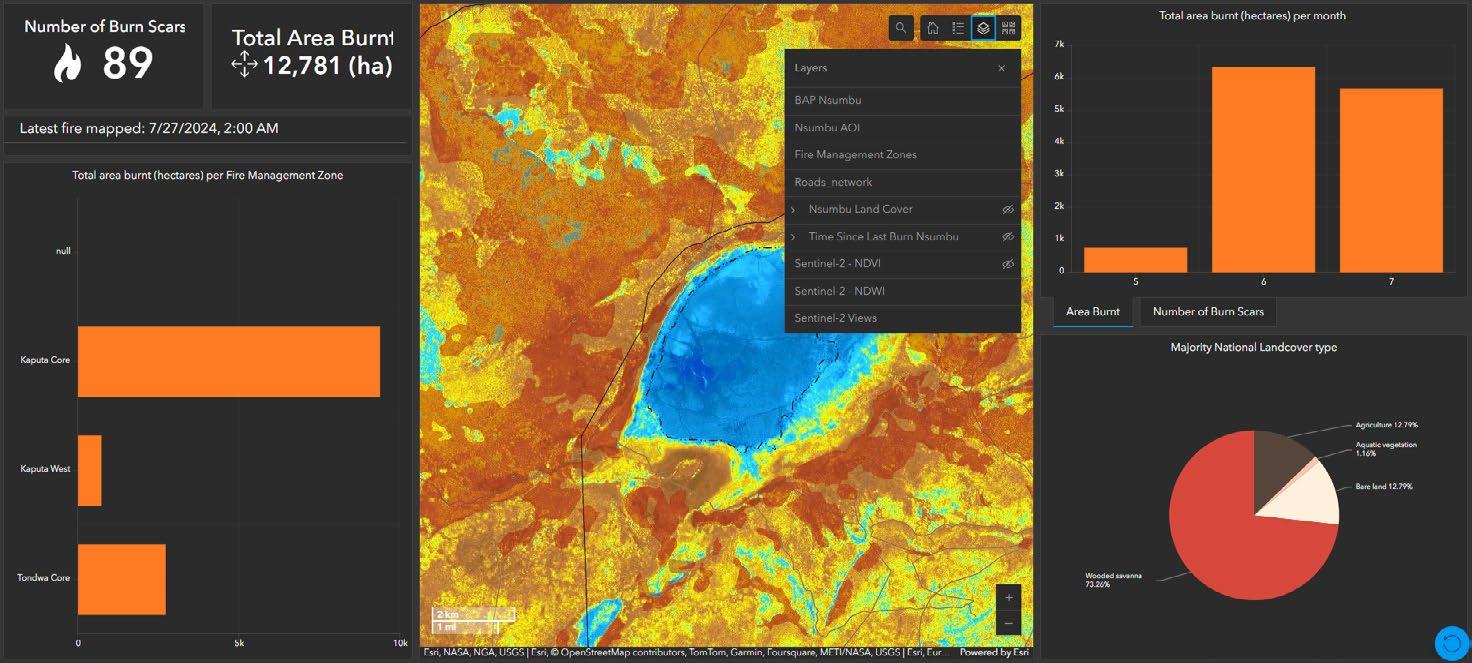
Fire is an integral part of many landscapes globally, yet uncontrolled wildfires pose significant risks to people, the economy, and the environment. These risks are likely to get worse due to climate change. MAP Scientific Services (MAPSS), a leading Geographic Information System (GIS) company based in Pretoria, South Africa, is addressing this crisis by providing detailed spatiotemporal data on wildfire occurrences.
MAPSS’s goal is to create the most comprehensive dataset on wildfires globally and provide tools that make this data easy to use. This empowers stakeholders with critical information, raises wildfire awareness and supports clients in fulfilling their legal mandates.
The MAPSS approach to wildfire management
For effective integrated fire management, we need to know how often, when and where wildfires happen. The only way to do this is to map fires at scale; in other words, map every fire every day and not only the big disaster fires when they occur.
By using advanced remote sensing technologies and in-house algorithms, MAPSS effectively map burnt areas and identify active fire locations 24-hours a day.
Since 2018, MAPSS have mapped nearly one million fires across South Africa. These equate to over 15 million hectares burnt.
MAPSS have worked with fire protection associations (FPAs), district and local municipalities, nongovernmental organisations and protected area management to provide wildfire data in an efficient and easy to use way, with major success and involvement in key areas relating to reporting veldfire statistics, planning mitigation strategies and conducting risk assessments on a regional and local level.
Since 2023, MAPSS are also actively mapping large conservation landscapes in Zambia, Mozambique and Zimbabwe.
Figure 5. An example of a dashboard showing vegetation indices such as NDVI and NDWI in relation to burn scars
Machine-learning algorithm
MAPSS has developed a burnt area product that utilises a proprietary machine-learning algorithm that detects and automatically maps every burn scar that occurs within an area of interest within a five-to-tenday period depending on cloud free satellite imagery.
Burn scars are mapped at 10-metre resolution and include fires from as small as one hectare in extent.
Each mapped fire is assigned a unique ID and saved to a geospatial database. In addition, administrative regions eg, district, local and metropolitan municipalities, provinces, management zones eg fire protection association boundaries and land-cover classes summaries are assigned to each burn scar. Burn scars are also linked to ancillary data; for example, date and time, distance from roads, rivers, railways and/or settlements and town boundaries.
One of the major advantages of the MAPSS burnt area product is that it detects nearly 75 percent more fires than other available products at coarser resolutions eg, Moderate Resolution Imaging Spectroradiometer - 500m resolution (Figure 1).
This is important because smaller fires are a critical driver of burnt area and including these small fires in burnt area assessment is critical for accurate statistics, veldfire risk management, mitigation measures and emission estimates of biomass burning to national burdens of CO2. Accurate estimates of CO2 emissions are critical and crucial for effective climate policies, measuring progress towards emissions reduction targets and informing strategies for mitigating climate change impacts. Moreover, many control burns are relatively small fires, by mapping these accurately MAPSS support effective fire management and planning.
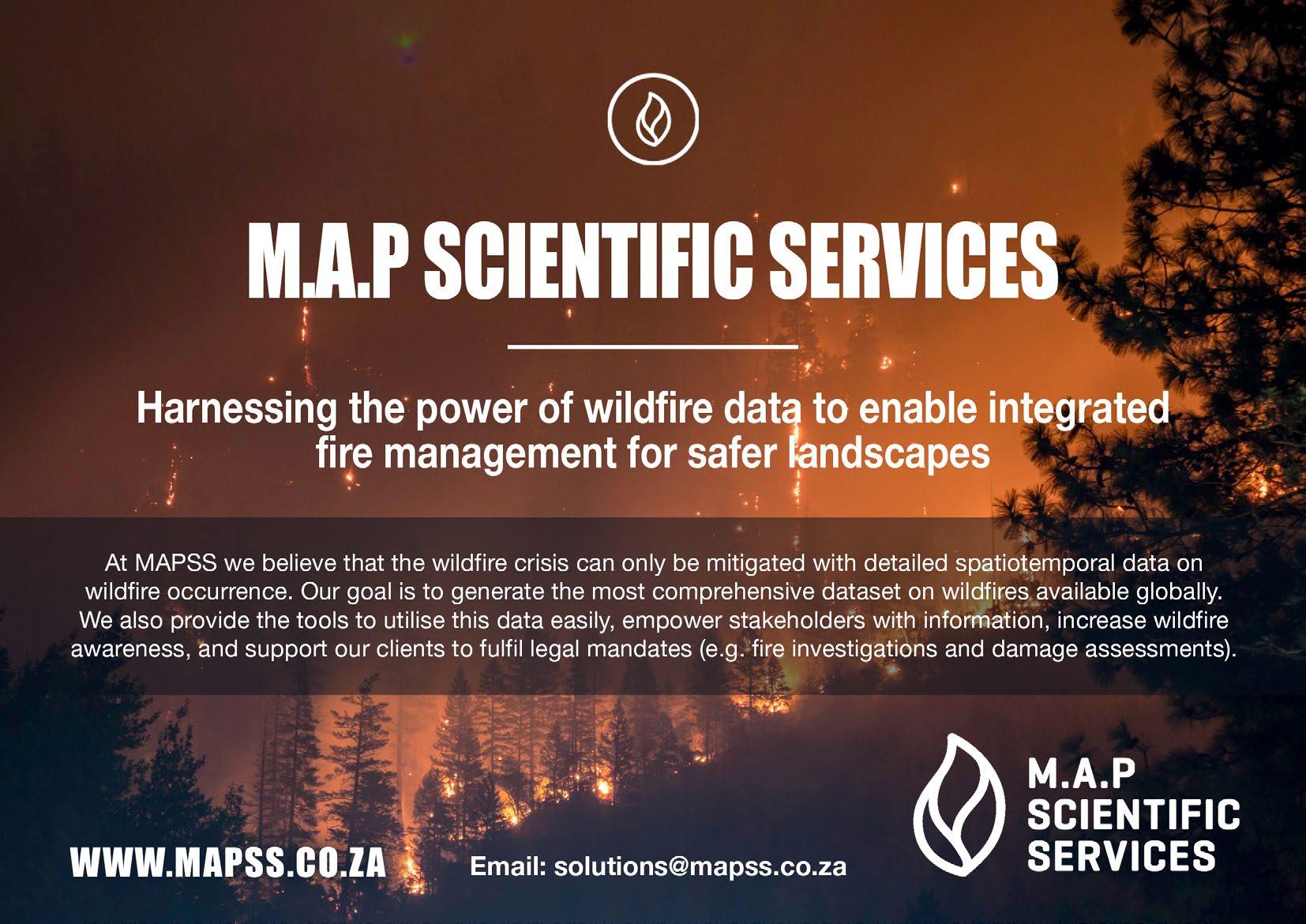

Data sharing and access
Burnt area
Figure 1. A comparison of the number of veldfire burn scars mapped by MAPSS at 10m resolution and MODIS imagery at 1km resolution. MAPSS detects and map nearly 75 percent more fires than MODIS sensors, specifically because many fires in the 1-10ha category is missed by sensors that operate at coarser resolutions.
Burn scar data are accessed through customised dashboards developed using Esri technology, the world’s leading provider of geospatial software. MAPSS have been an Esri Business Partner since 2018.
Dashboards include interactive maps, summary statistics and graphs and the ability to filter data according to administrative regions eg, district, local and metropolitan municipalities, province, land-cover classes, size and date.
Dashboards are continuously and automatically updated based on available cloud free satellite imagery. In addition, the latest Sentinel-2 imagery is provided as part of the solution, with weekly updated vegetation indices such as the Normalised Difference Vegetation Index (NDVI) and the Normalised Difference Water Index (NDWI).
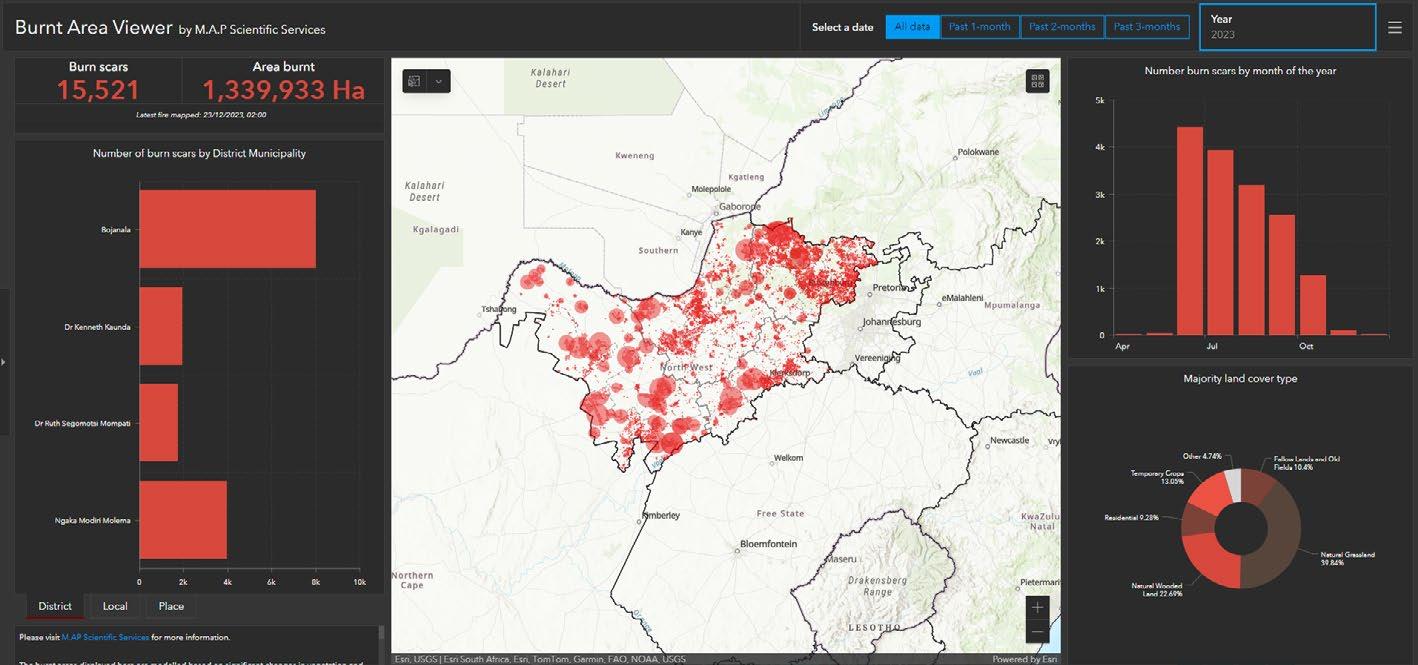
Figure 2. An example of a MAPSS Burnt Area Dashboard showing the burnt areas in the Northwest Province, South Africa during the 2023 fire season. Burnt area statistics are summarised by district and local municipality and metropolitan areas. The number of burn scars and area burnt are also reported per month and per land-cover type affected (pie-chart in the example). In this example, 39,84 percent of fires took place in natural grasslands and most fires occurred in the Bojanala District Municipality.
All data comply with geospatial standards for data exchange and all statistical data for burnt areas are accompanied with spatial data. GIS data are easily accessible and available in:
• Shapefile format (polygons and points)
• Raster format (imagery used for burnt area calculations)
• As a geodatabase eg, file geodatabase
• CSV or spreadsheet (Excel file)
• GeoJSON
• Feature Collection or
• GeoPackage.
Additionally, industry-standard Web Map Services (WMS) and APIs, are available to facilitate seamless integration with existing systems. For example, burn scar data can be integrated with other wildfire software solutions such as Fireweb (www.firewebapp.com). Security includes user group management for differentiated content access and customisable user roles, such as viewers or editors, to accommodate varying levels of permissions.
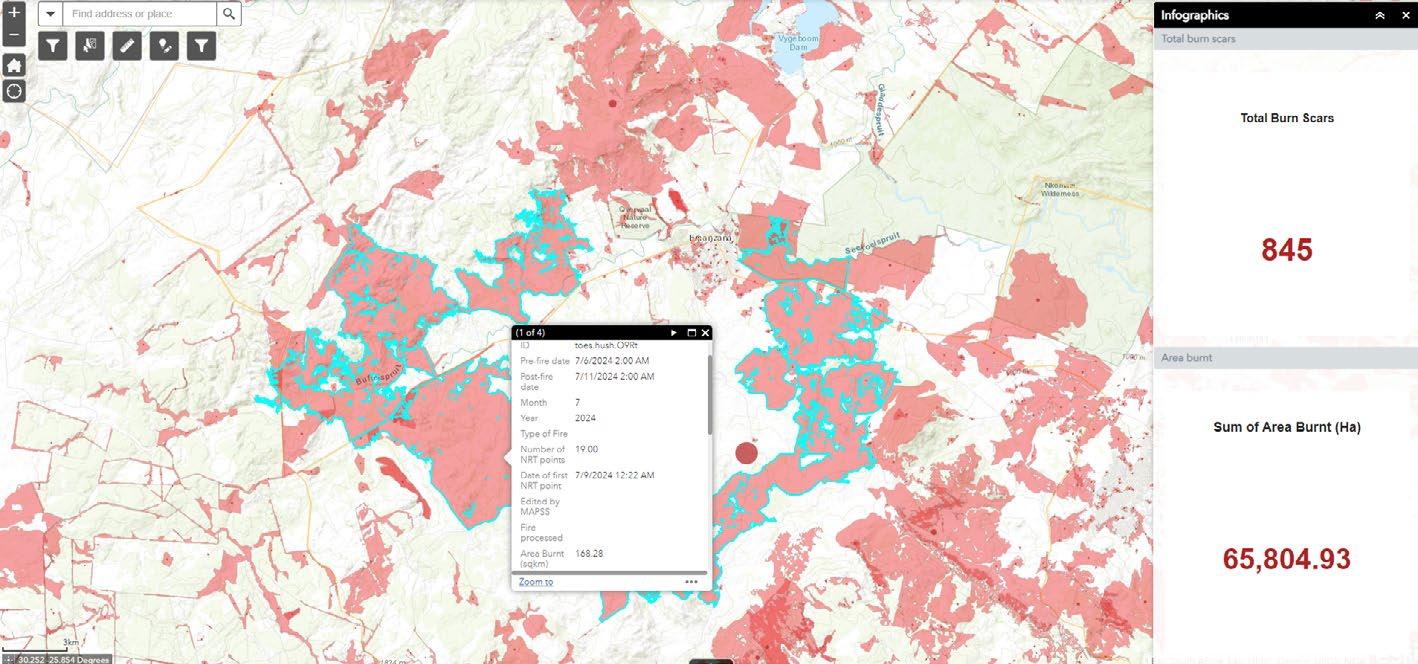
Figure 3. An example of a more detailed assessment of a burn scar using the MAPSS dashboard. Area burnt, time of active fire, land-cover affected and administrative regions are automatically calculated for each burn scar.
Active fires
As part of the MAPSS wildfire solution, we also provide near-real-time locations of active veldfires across an area of interest, updated multiple times a day. MAPSS makes use of Rapid Response data from the Land, Atmosphere Near real-time Capability for EOS (LANCE) system operated by NASA's Earth Science Data and Information System (ESDIS) and The European Organisation for the Exploitation of Meteorological Satellites (EUMETSAT). In total, data from three different sensors (MODIS, VIIRS and SLSTR) onboard six different satellites are used to detect active fires.
This data is made available within three hours of detection. Each active fire is assigned a unique ID and saved to a geospatial database. In addition, administrative regions eg, district, local and metropolitan municipalities, province and land-cover classes are assigned to each active fire. Active fires are also linked to ancillary data; for example, date and time, distance from roads, rivers, railways and/or settlements and town boundaries.

across South Africa. Active fire data is summarised based on province, local, district and metropolitan municipalities, distance from infrastructure such as roads, railways and towns and land cover type.
Partnering for success and looking ahead
MAPSS is proud to collaborate with organisations at the forefront of the fight against wildfires. By providing scalable and well-structured geodatabases, user-friendly applications and dynamic dashboards, we empower our clients to report, plan and respond to wildfire risks effectively.
With plans to continuously improve our technologies, we are committed to providing the best tools for wildfire management. Our efforts are crucial in mitigating the wildfire crisis and protecting people, economies and the environment from the increasing threat of uncontrolled wildfires.
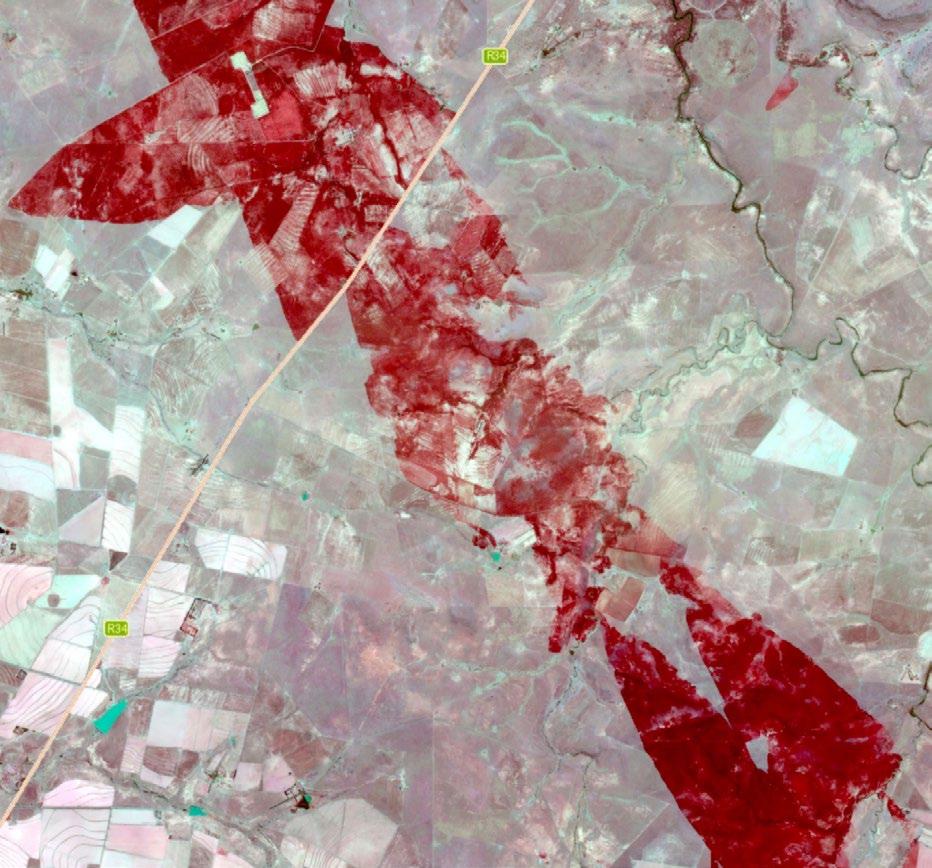
Figure 4. An example of an Active Veldfire Dashboard showing active fire locations
Figure 6. Example of a mpped burn scar

Use of drone technology for wildfire management purposes
By Rob Erasmus, Enviro Wildfire Consultancy
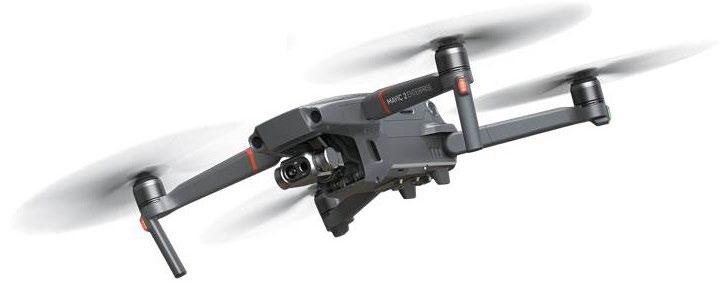
The use of technology for fire management is not new and progressive wildfire managers continue to seek methods of obtaining information that allow them to make sound decisions. The old saying that ‘information is power’ holds true and a simple example is the use of cell phone apps to obtain local weather forecasts to predict fire behaviour.
The use of technology is only effective if the equipment
is used within its operating parameters and the information analysed and interpreted by suitably skilled personnel.
The use of drone or remotely piloted aircraft systems (RPAS) technology has become increasingly common in all spheres of integrated wildfire management, ranging from pre-burn veld assessments and firebreak inspections to fire spread monitoring and burn scar perimeter patrolling.
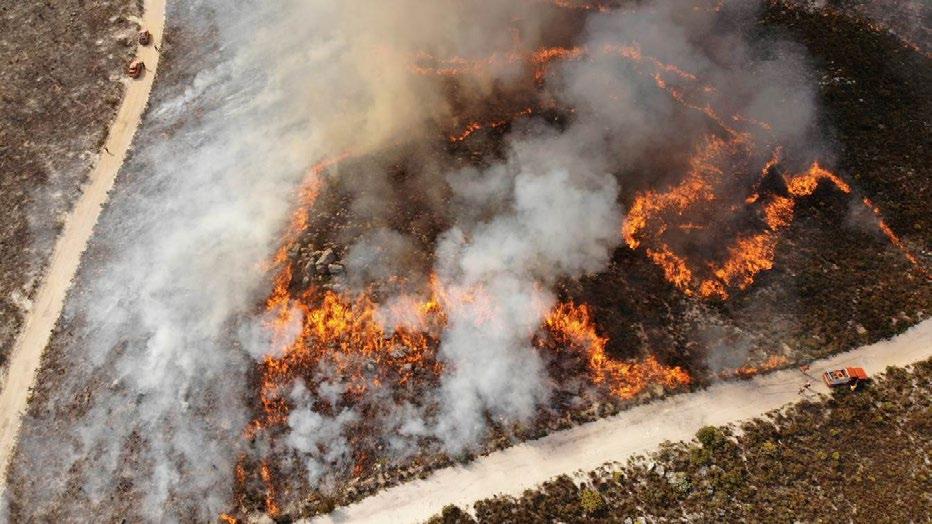
Uses
The use of drone technology can effectively be divided into three categories, namely pre-, active and post-fire periods.
Pre-fire use can generally be undertaken with a normal visual camera drone and there are plenty of makes and models to choose from. Tasks can include veld assessment ie fuel load density and arrangement, topography, general site overview, firebreak conditions, access roads and paths and the location of infrastructure requiring special attention.
During active fire operations (wildfires or prescribed burning), a thermal camera drone is of significant value as it is able to ‘see through the smoke’ and provide valuable information as to the location and extent of fires that are burning. In high fire risk areas this becomes really valuable as the smoky areas downwind of the fire can be
Mavic 2
monitored for spot fires or firecreep across the breaks.
Post-fire tasks include fire-scar mapping and patrolling of burn area perimeters for smouldering material that has the potential to start rekindled fires. The most efficient time to conduct smouldering ember patrols is just before sunrise when the surrounding ground is probably at its coolest, increasing the likelihood of hidden embers being detected. Bear in mind that some thermal camera drones are able to detect a smouldering item 10cm in size from 100m away. Very rocky habitats have the potential to shield embers from the cameras view. Once again the experience and skills of the drone pilot becomes of value in interpreting the information.
Recently a fire spread through the Onrus River and ignited the desiccated underground peat bed. Upon inspection with a thermal camera drone it was determined that the entire river bed was burning and it took 12 months of active fire management to eventually extinguish the fire.
Most drones with thermal cameras have as variation of three viewing modes. The visual mode makes use of the normal visual camera that usually has a high resolution capability and possibly a zoom option.
The infrared (IR) mode uses the thermal camera and the resolution can range from average to very good. In some cases the thermal view can also be zoomed.
The skills of the drone operator can maximise the value of this thermal
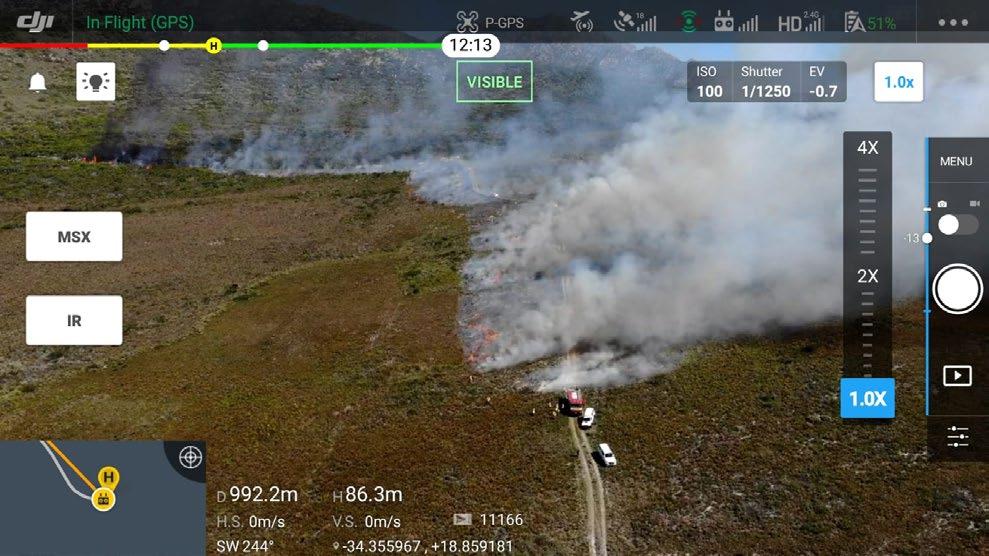
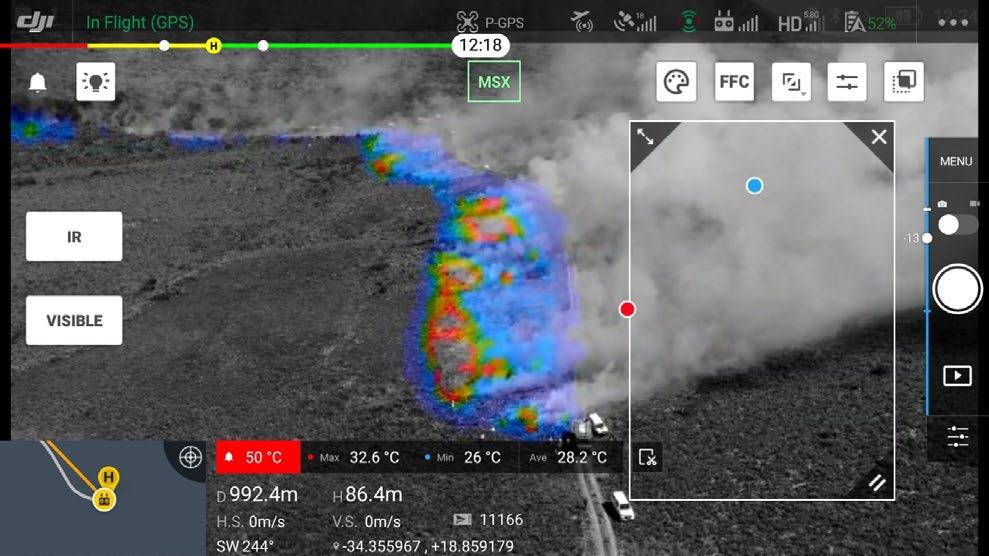
information by managing the settings. A third viewing mode uses a combination of the visual and thermal cameras, overlaying visual camera data on the thermal image to provide a clearer definition of objects in the thermal view. In some drones this combined mode is the standard for the IR view.
Limitations
The majority of drones can fly in winds that gust up to about 30km/h. Although not ideal due to increased battery power consumption, necessary flights can be undertaken. They can be flown in stronger winds when operating in sports mode but the risk is that the obstacle avoidance system is then disabled. Once again,
understanding your drone and your flying environment will allow decisions to be made.
Another option of using the sports mode is when it is required to fly through smoke. The drones’ sensory system would regard the smoke as a barrier and start to hover.
When using a thermal camera drone, the ability of the pilot to set the camera parameters ie thermal window range, palate, temperature alarms, etc and interpret the thermal image becomes really important. Situations could result when an inexperienced pilot does not have the skills to manage the thermal data and blames the equipment for it being inadequate.
Monitoring downwind
Raptors have learned that fires flush out insects and other small animals, providing easy meals. These large birds such as Yellowbilled Kites, are known to attack drones and in such cases it is suggested that the pilot rapidly ascend approximately 20m and return to the landing zone before the drone is lost due to a bird strike.
Safety
Due to the potential catastrophic implications of a drone striking an aircraft, no drones are to be operated within the fire arena without the express authorisation of the incident commander. The drone pilot should also be in radio contact with the Spotter pilot, alternatively the aerial resources, purely for safety purposes.
Drones should not be flown over public roads or at a height exceeding 150m (there are exceptions) and on or over property without the landowner or incident commander’s permission.
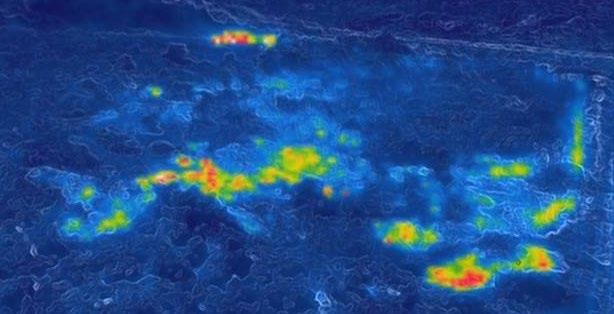
While drones can be flown while aerial resources are operating, this is an activity that needs to be extremely carefully coordinated.
Additional options
Some drone models allow for a set of goggles to be connected (Wi-Fi or wired) to the flight controller providing the wearer with an ‘Imax’ type real-time camera view from the drone. Some models even allow the wearer to control the direction of the camera by simply moving their head sideways and up/down.

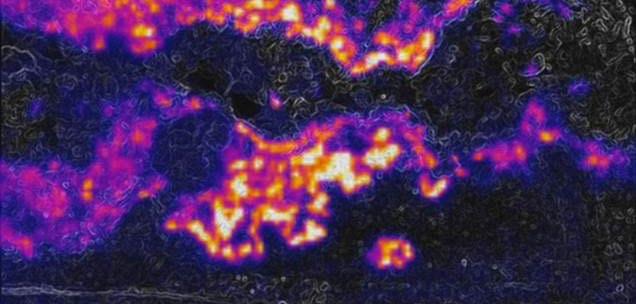
For experienced wearers, there is also the advanced option of them controlling the direction, not speed or ascending/ descending, of the drones’ travel.
A commonly used technique is to connect the controller to a large external screen, which provides a large group a real-time live view from the drone. Some drones can also be programmed to fly preplanned routes autonomously. This is extremely useful when repeated fire perimeter patrol flights need to be undertaken in remote areas.
Closing
It could be difficult to dispute that drone technology, when used responsibly, has the potential to be a game-changer when it comes to integrated wildfire management.
For further information or interest, please contact Rob Erasmus at Enviro Wildfire Consultancy on Mobile: 083 411 3378 Email: enviro@absamail.co.za.
NOTE: Enviro makes use of the DJI Mini 3 Pro, Mavic 2 Pro, Mavic 2 Zoom, Mavic Enterprise Dual (thermal) and Mavic Enterprise Advanced (thermal) drones.
Watch video
Onrus River underground fire
Determining hotspots requiring attention
include both indigenous leaders and women in disaster risk management is crucial as research has shown that their input on risk reduction is fundamental towards effective solutions. No single country has yet formulated the perfect response, but many are making progress in different aspects of managing the risks of wildfires. Together we can learn from each other.
3
UN-backed report: Number of wildfires to rise by 50 percent by 2100 and governments are not prepared, experts warn
A stronger multilateral response is needed: The UN system lacks robust wildfire expertise dedicated to this challenge as the management of wildfires is seen as mainly a national responsibility. This must change. Wildfires need to be placed in the same category of global humanitarian response as major earthquakes and floods. New capability and financial support should be made available to affected countries, with
Climate change and land-use change are projected to make wildfires more frequent and intense, with a global increase of extreme fires of up to 14 percent by 2030, 30 percent by the end of 2050 and 50 percent by the end of the century, according to a report by UNEP and GRID-Arendal.
The paper calls for a radical change in government spending on wildfires, shifting their investments from reaction and response to prevention and preparedness.
The report, ‘Spreading like wildfire: The rising threat of extraordinary landscape fires’, finds an elevated risk even for the Arctic and other regions previously unaffected by wildfires. The report was released before the resumed 5th session of UNEA-5.2 convenes in Nairobi, between 28 February and 2 March, 2022.

The publication calls on governments to adopt a new ‘Fire ready formula’, with two-thirds of spending devoted to planning, prevention, preparedness and recovery, with one third left for response. Currently, direct responses to wildfires typically receive over half of related expenditures, while planning receives less than one percent.
To prevent fires, authors call for a combination of data and sciencebased monitoring systems with indigenous knowledge and for a stronger regional and international cooperation.
“Current government responses to wildfires are often putting money in the wrong place. Those emergency service workers and firefighters on the frontlines who are risking their lives to fight forest wildfires need to be supported”, said Inger Andersen, UNEP executive director. “We have to minimise the risk of extreme

engagement from Civil Defense. Fires do not borders, so a coordinated, agile, and anticipatory management mechanism is needed.
Regardless of mitigation, the authors say, live with fire,” and indeed we must. We must manage and mitigate the risk of wildfires and livelihoods, biodiversity, and the global report provides a roadmap for doing just that.
Susan Gardner Director, Ecosystems Division, UNEP
Click cover to download
Peter Harris Managing Director, GRID-Arendal
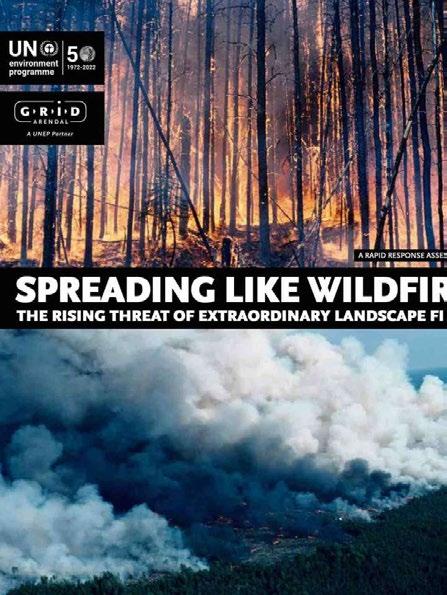
wildfires by being better prepared: invest more in fire risk reduction, work with local communities and strengthen global commitment to fight climate change”.
Wildfires disproportionately affect the world’s poorest nations. With an impact that extends for days, weeks and even years after the flames subside, they impede progress towards the UN
We must learn to better manage and mitigate the risk of wildfires to human health and livelihoods, biodiversity, and the global climate. This report provides a roadmap for doing just that.
Susan Gardner Peter Harris
Factors influencing wildfire outcomes and management actions
Moisture
Condition
Vegetation type
Soil organic content
Continuity
FUEL MANAGEMENT
Firebreaks
Hazard reduction
Pre-suppression
Suppression
FIRE MANAGEMENT
Wind speed/direction
Air temperature
Relative humidity
Stability
Solar radiation
Rainfall
Amount
Structure
FIRE BEHAVIOUR
Fireline intensity
Spotting
Fire spread rate
Flame height
Duration
IMPACT MITIGATION
Fire management
Evacuation
Recovery planning
ECONOMIC IMPACTS
Fatalities
Agricultural
Food security
Productivity
Insurance losses
Rebuilding
Employment
Infrastructure/assets
Suppression costs
Volunteerism
ENVIRONMENTAL IMPACTS
IGNITION SOURCES
Human activities
Lightning
Escaped fires
TOPOGRAPHY
Slope Aspect Elevation
SOCIETAL IMPACTS
Ecosystem function
Erosion
Environmental and social values
Air quality
Water quality
Biodiversity
ECOSYSTEM RESPONSE
Vegetation recovery
Flora/fauna
Resilience
Fatalities
Infrastructure/assets
Population displacement
Loss of values
Disaffection
Homelessness
Health
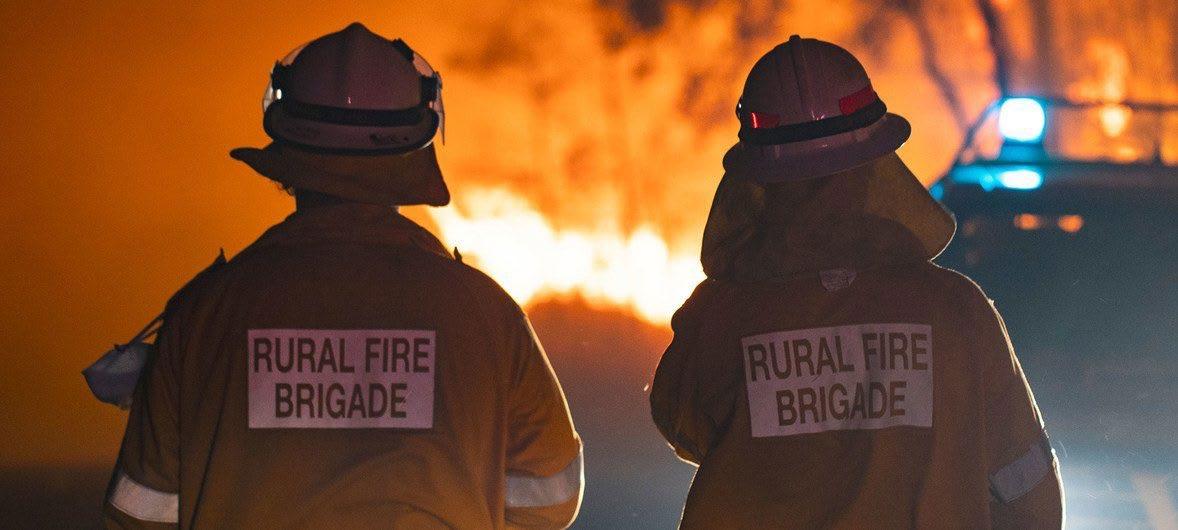
Sustainable Development Goals and deepen social inequalities:
• People’s health is directly affected by inhaling wildfire smoke, causing respiratory and cardiovascular impacts and increased health effects for the most vulnerable
• The economic costs of rebuilding after areas are struck by wildfires can be beyond the means of lowincome countries
• Watersheds are degraded by wildfires’ pollutants; they also can lead to soil erosion causing more problems for waterways
• Wastes left behind are often highly contaminated and require appropriate disposal.
Wildfires and climate change are mutually exacerbating. Wildfires are made worse by climate change through increased drought, high air temperatures, low relative humidity, lightning and strong winds resulting in hotter, drier and longer fire seasons. At the same time, climate change is made worse by wildfires,
mostly by ravaging sensitive and carbon-rich ecosystems like peatlands and rainforests. This turns landscapes into tinderboxes, making it harder to halt rising temperatures.
Wildlife and its natural habitats are rarely spared from wildfires, pushing some animal and plant species closer to extinction. A recent example is the Australian 2020 bushfires, which are estimated to have wiped out billions of domesticated and wild animals.
There is a critical need to better understand the behaviour of wildfires. Achieving and sustaining adaptive land and fire management requires a combination of policies, a legal framework and incentives that encourage appropriate land and fire use.
The restoration of ecosystems is an important avenue to mitigate the risk of wildfires before they occur and to build back better in their aftermath. Wetlands restoration and the reintroduction of species such as beavers,
peatlands restoration, building at a distance from vegetation and preserving open space buffers are some examples of the essential investments into prevention, preparedness and recovery.
The report concludes with a call for stronger international standards for the safety and health of firefighters and for minimising the risks that they face before, during and after operations. This includes raising awareness of the risks of smoke inhalation, minimising the potential for life-threatening entrapments and providing firefighters with access to adequate hydration, nutrition, rest and recovery between shifts.
The report was commissioned in support of UNREDD and the UN Decade on Ecosystem Restoration. UNEP will be exploring how further investments can be made to reduce fire risks in critical ecosystems around the world.
Download the report

Queensland Fire and Emergency Services: Two firefighters in Queensland, Australia, where the worst wildfires seen in decades are devastating large swathes of the country
Remote sensing technology fights forest fires smarter
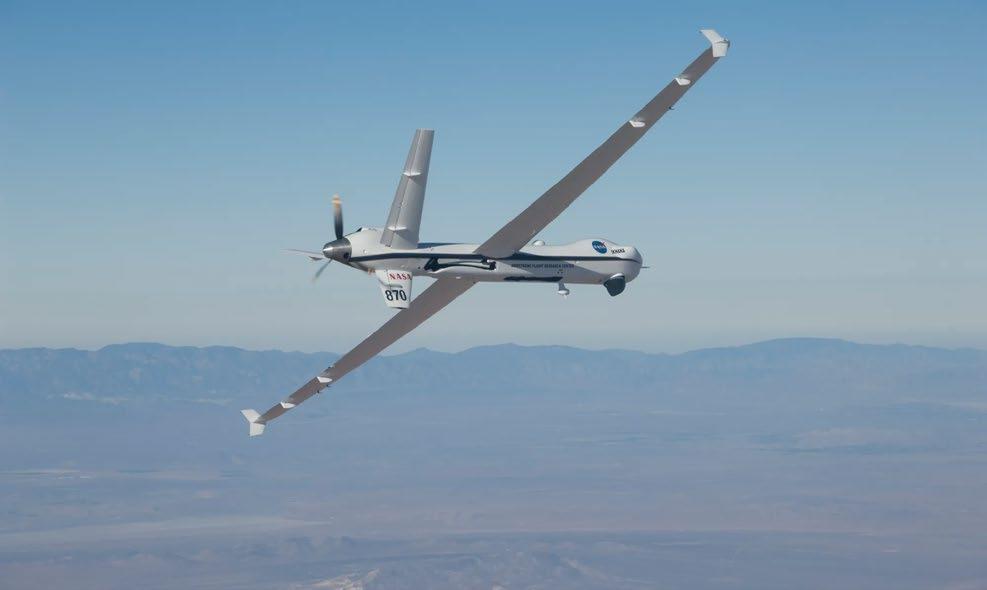
NASA used its unmanned Ikhana aircraft to test technology it helped develop or recommended to the US Forest Service, including a system to send sensor data to decision makers on the ground in near real time
Fires were raging in Northern California in the US in June 2008, at the height of one of the state’s most destructive wildfire seasons in history and one fire was headed right toward the town of Paradise. Well, maybe.
It’s not so easy to figure out the future path of a forest fire, a lot depends on wind and other constantly changing factors. But it’s crucially important to be as accurate as possible when making predictions. The lives and homes of the tens of thousands of people living in towns like Paradise may depend on the reliability of those predictions.
Sensors mounted on an airplane or drone, which give a picture of the fire from above, are an important tool and that’s where the National Aeronautics and Space Administration (NASA) comes in. The Space Agency has a lot of experience with
remote sensing technology and relaying the information quickly to scientists on the ground.
NASA isn’t the Government agency officially tasked with monitoring forest fires, of course. The US Forest Service, as well as local and state firefighting agencies and the Bureau of Land Management all work together to battle the infernos and keep people out of harm’s way.
For decades, NASA has worked in partnership with the Washington, DC-based Forest Service, sharing technical expertise that helps get better information to firefighting decision makers faster.
The collaboration stretches back to the 1980s, explains Vince Ambrosia, associate programme manager for wildfires in the NASA Applied Sciences Programme at Ames Research Centre. At the time, NASA was
working on sensor technology and asked “how we can transfer the information they gather in near real time to make it useful for the fire community.”
“We wanted to be able to leverage the subject matter expertise and sensors and aircraft that NASA has and the Forest Service doesn’t have,” notes Everett Hinkley, National Remote Sensing Programme manager for the Forest Service. “It’s a positive feedback loop: we have the information needs and NASA has the requisite expertise in those areas.”
In the 1990s, NASA began a project to adapt uncrewed aircraft for environmental research and the researchers at Ames wanted to ensure the technology would be useful to the broadest possible spectrum of potential end users.
One concept tested during the project was sending data in near real time to the ground via communications links installed directly on the aircraft.
For the Forest Service, this was a much-needed upgrade to the original system on their crewed jets: rolling up a printout of thermal sensor data into a plastic tube, attaching the tube to a parachute and dropping it out of the airplane. A later version, downloading digital sensor readouts onto a thumb drive and dropping the drive out of the airplane, wasn’t much better.
A downlink connection would allow the data to arrive faster and it could be sent to multiple recipients at once, not just the team on the fire front line but the commanders organising the teams, as well as decision makers looking at the big picture across the entire region throughout the fire season, explains Don Sullivan, who specialises in information technology design for NASA’s Airborne Science Programme at Ames.
Technology transfer
When Sullivan and Ambrosia and the Airborne Science team at Ames were considering the best ways to get information from an aircraft to the ground they considered several methods, including relaying via geosynchronous or low-Earth orbiting satellites or connecting directly from aircraft to ground.
For NASA’s larger project on environmental research with drones, a satellite relay made the most sense because the research would be done over oceans, in the Arctic and around the globe.
But since US forest fires are on land, Sullivan and the Ames team determined an aircraft-to-ground system would work best; it was less expensive than relying on geosynchronous satellites and offered a much higher bandwidth than the existing network of lowEarth orbiting satellites.
NASA recommended a contract with Aircell, which recently rebranded as Gogo Business Aviation, a private company unaffiliated with NASA, explains the Forest Service’s Hinkley, who adds that it’s the same technology that’s often used on commercial aircraft, “any time there’s Internet.”
NASA’s expertise identified the merit of this airborne wireless networking technology for the Forest Service: “NASA helped us with the evaluation and testing of the various systems to see which one would work best for us,” he emphasises.
“NASA has Don Sullivan, who is a brilliant communications and networking person. We don’t have anyone that has that particular set of skills in the Forest Service,” Hinkley says. “People like Don can steer you away from things: ‘You don’t want to do this because of incompatibility issues or cost issues you don’t see up front.’ Having those kinds of skills is really invaluable.
“We ended up purchasing two Aircell systems,” he adds.
Benefits
NASA’s expert evaluation and recommendations have had significant benefits for the Forest Service and for the agencies that rely on the remote sensing data the Forest Service supplies.
NASA and the Forest Service continue to explore using uncrewed aircraft to expand data-gathering. NASA’s uncrewed Ikhana test plane has demonstrated improved thermal sensors and provided helpful data in real fire situations. For the moment, however, the Forest Service continues to rely on the proven service of its two crewed aircraft.
With just two planes to cover the entire country, every minute of air time is in high demand. Using a network connection to send sensor data to decision makers makes the whole system safer and
more efficient. “It means we can do more fires per night, 10 or more on busy nights,” says Hinkley.
“And it means fewer takeoffs and landings, which increases safety for the pilot and crew on board,” he adds.
Sending the sensor data to multiple recipients also saves time, ensuring decision makers get the information they need in near real time. As an added bonus, an onboard computer system can quickly process the raw data and send customised information to the various recipients as needed.
“On the fire line, they want a small file that finds where the fire is and its intensity,” explains Sullivan, whereas “other people, planners, wanted to be able to look at the entire thing and allocate resources,” so they need larger image files.
“But then there are people who are doing instant commands for the entire incident, who want to know what nine crews are doing,” so they need a rich image that combines a photographic snapshot with infrared imagery.
In California in 2008, all that paid off big time, when a NASA test flight using a data downlink system was able to provide updated information to the incident managers that was crucial in determining where to send firefighting resources and whether a full evacuation of the town of Paradise was needed.
Without that timely information, says Sullivan, “there likely would have been injuries and certainly property damage that was worse than it turned out to be.”

The 14th Fire Management Symposium: Educating and training for effective wildfire management


Date: 6 to 8 November 2024 Venue:
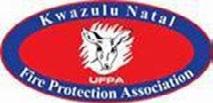
T10h1010h30
10h5011h10 Johan Breytenbach Manager: FSUFPA
11h10 –11h30 Roger Johnston CEO: SAFCA
he Forestry Department of the Nelson Mandela University (NMU) invites you to the 14th Fire Management Symposium: ‘Educating and training for effective wildfire management’, which will be held on 6 to 8 November 2024 at the Halliwell Country Inn in Karkloof in KwaZulu-Natal, South Africa.
• An international view on future needs of veldfire training and education
Educating the nation: The effect of sound Fire management on the lives of South Africans +27 83 611 6946 ronald@forestrysouthafrica.co.za 09h30 –
yockfire@gmail.com 09h5010h10 EJ Stoch Chairman NWUFPA
From the Tribal Council to the Fireline: A Revolutionary Model for Tribal and Khoi-San Integration in Fire Safety 071 077 6653 nwufpa@gmail.com
Questions & Answers – Panel Discussion 10h3010h50 Tea/Coffee
• Training and education of aerial firefighting pilots
• ICS: A uniform system across the country
• The essence of an ICS system in a rural veldfire situation
Training & education in commercial farming communities +27 74 467 4450 genman@fsufpa.co.za
• L & D Landscape 2024, trends paving the way for growth
Gaps and training/education needs of contractors in the forestry industry 082 434 3905 roger@safca.co.za 11h30 –11h50 Stephen Devine Managing director: Firescape
11h5012h10 Frank Smook Flight Operations: Kishugu Aviation
12h1012h30
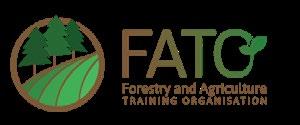
The 2024 Fire Management Symposium promises to be a special event. Not only because of the unique setting of the venue in the heart of the scenic Karkloof region but because of the conglomeration of toprated international and local fire management specialists and service providers who will share their expertise in a very practical and applied manner. Scan the QR code above for registration.
On the first day of this event the focus will be on the education and training needs that exist in our industries. Organisations will express their needs and providers will explain how these needs can be addressed. The second day of the event,
which will be hosted by the KwaZulu-Natal Fire Protection Association (KZNFPA), will provide opportunities to visit fire management activities, scenery and cultural attractions and view some of the latest technology, tools and equipment in the form of a mini expo. A gala dinner on the eve of the second day will allow networking opportunities for guests. On the final day of the event, fire management topics dealing with protection, prevention and suppression will make up the programme.
An international view on future needs of veldfire training and education 065 576 3958/ 067 684 7351 Stephen@firescape.co.za
Training and education of aerial firefighting pilots +27 82 650 0860 frank.smook@kishugu.com
Questions & Answers – Panel Discussion
Draft programme

Educating the nation: The effect of sound fire management on the lives of South Africans
• The New Occupational Qualifications Development Model
• Feature training and education needs for veldfire management
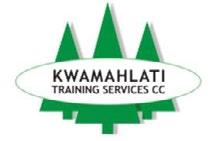
• The importance of educating the youth about fire management (USA)
• Extension and engagement with rural farming communities in Oklahoma (USA)
• Training and education in commercial farming communities
• Gaps and training/education needs of contractors in the forestry industry
• Three key elements: surprise, anxiety and disturbance A practical tool for incident commanders to manage resources at a fire incident

• SARZA – A volunteer search and rescue partner
• National Disaster Management Fire Reporting Tool
• Ultra early fire detection through technology
• Char height as a robust and affordable post-fire proxy for fire intensity
• Bridging the education and training gaps within local authorities regarding veldfires
Department of Forestry
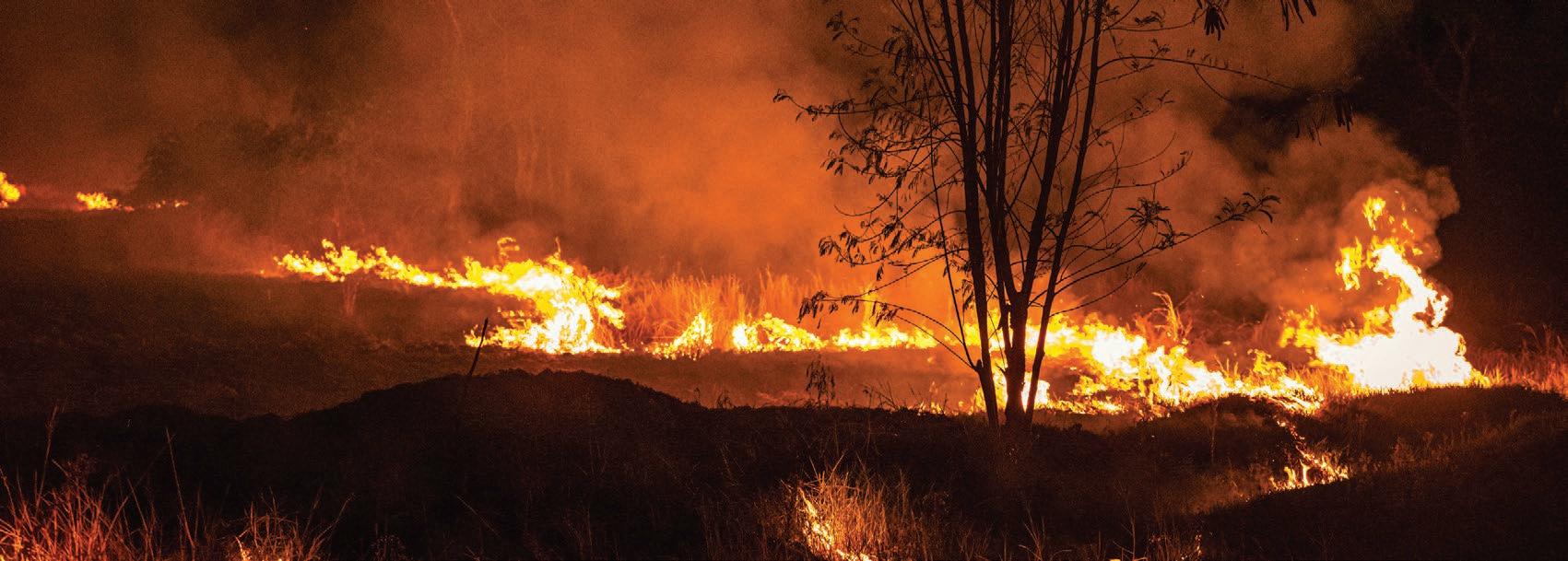
Fire Management Symposium 14th
Educating and training for effective wildfire management
6–8 November 2024
Halliwell Country Inn, Karkloof Region, KwaZulu-Natal, South Africa
Globally, effective wildfire management is impeded by a lack of integration between research results, technological development, and efforts by fire managers. In the end, all role-players on the wildfire stage strive to prevent, suppress, and protect the environment, human wellbeing, and assets against wildfire.
Join fire managers and authorities from different disciplines and land uses (nature conservation, agriculture, disaster management, forestry, local authorities, and more) for a range of informative presentations, and exciting networking opportunities.

For more information contact: Tiaan Pool tiaan.pool@mandela.ac.za 0723742347
Hannes van Zyl Hannes.vanZyl@mandela.ac.za 0727331692
Sonia Roets sonia.roets@mandela.ac.za 044 8015091
• Mobilising social capital for fire risk reduction at South Africa’s wildland-urban interface
• Sappi fire management strategies and tactics in the Lowveld region
• Physical patterns and posthoc measures of wildfire behaviour in grassland
• Relevance of forensic indicators in wildfire investigations.
Background and purpose
Globally, effective wildfire management is impeded by a lack of integration between research results, technological development and efforts by fire managers. In the end, all roleplayers on the wildfire stage strive to prevent, suppress and protect the environment, human wellbeing and assets against wildfire.
This event aims to integrate the efforts of natural resource managers, engineers, fire managers, educators/trainers and scientists. Through an integrated approach, different role-players will be sensitised about each other’s realities, successes, and failures.
Understanding the needs and gaps within organisations involved in wildfire management will open up new avenues that will support the fire management effort.
You are therefore invited to join fire managers and authorities from different disciplines and land uses such as nature conservation, agriculture, disaster management, forestry, local authorities, etc, for a range of informative presentations and exciting networking opportunities.
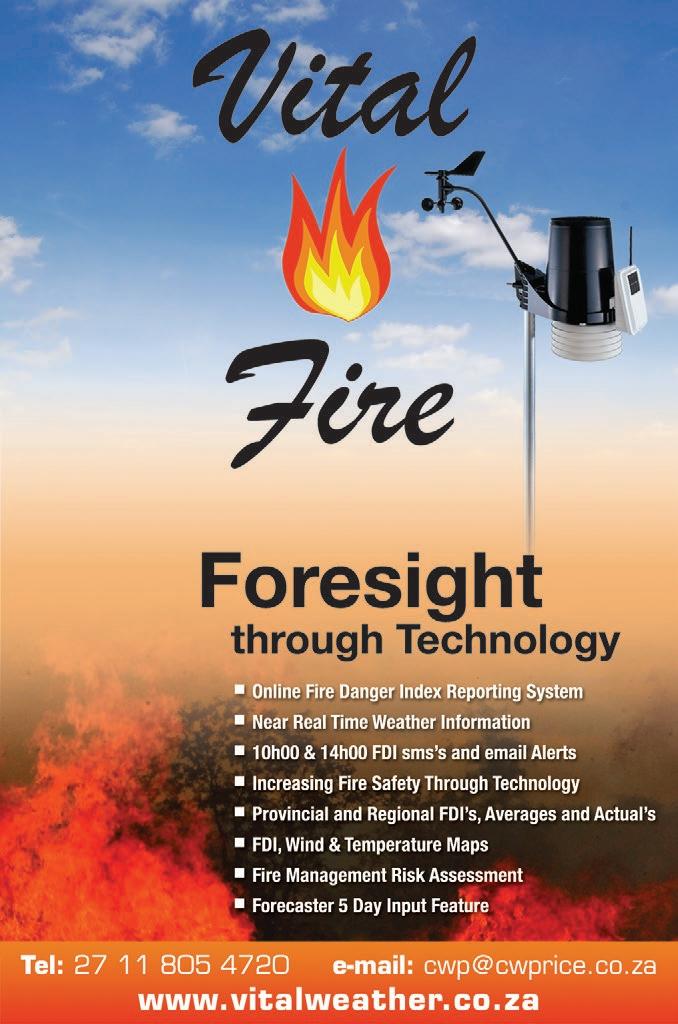
In general
This event presents opportunities to people from different entities, management levels and parts of South Africa. Due to the capacity of the venue only 200 delegates can be accommodated for the event. Cost to attend the whole event (Including lunches, field day and gala dinner), amounts to ± R3 500pp. The venue host will spoil us with local cuisine with live music.
Download programme
For more information contact: Tiaan Pool
Email: tiaan.pool@mandela.ac.za Mobile: 072 374 2347
Hannes van Zyl
Email: Hannes.vanZyl@mandela.ac.za Mobile: 072 733 1692
Sonia Roets
Email: sonia.roets@mandela.ac.za
Tel: 044 801 5091

The second annual Wildfire Expo for Central South Africa 3 to 4 May 2024
By Johann (Savage) Breytenbach, general manager, Free State Umbrella Fire protection Association
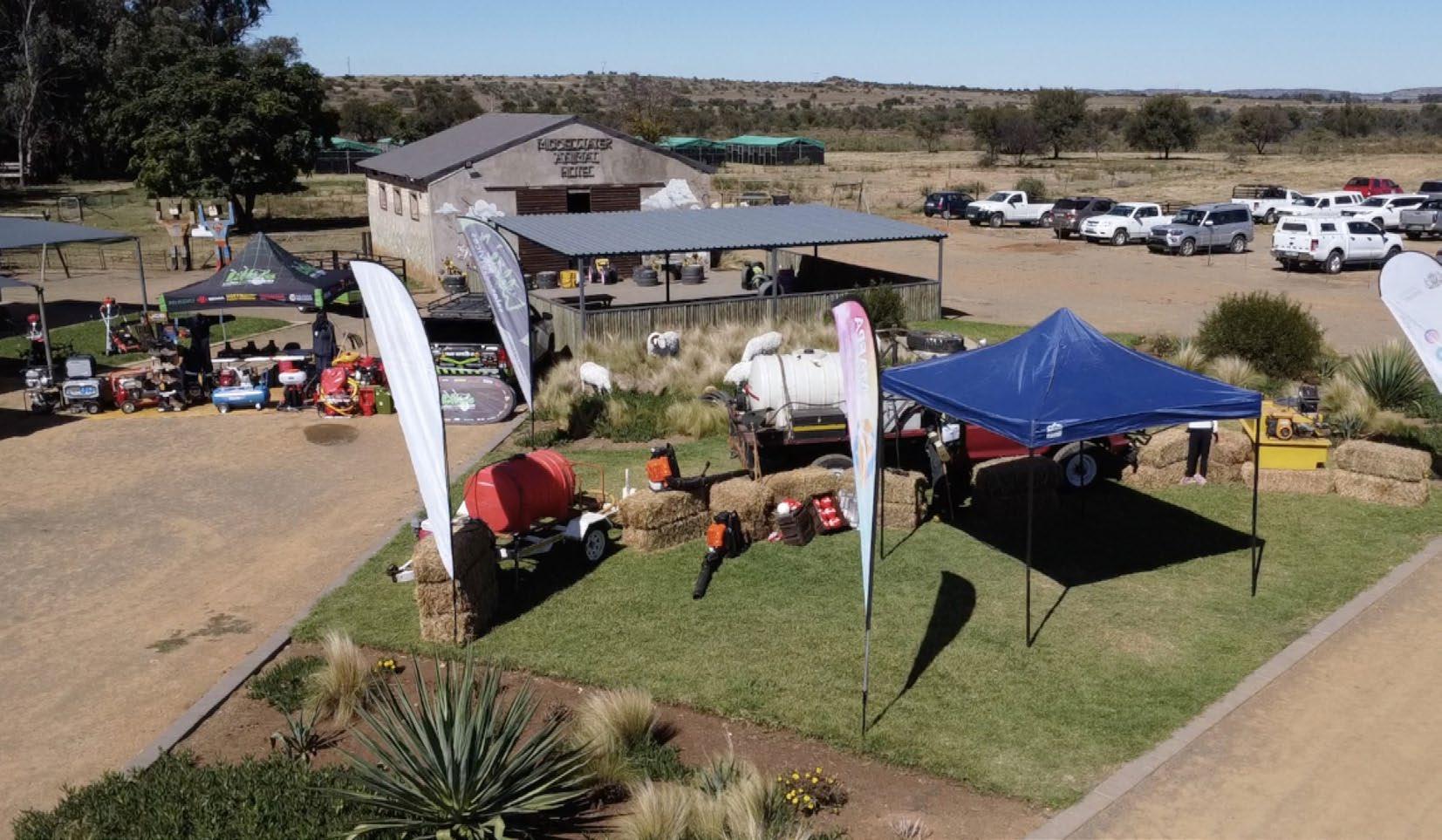
The central part of South Africa consists of the Free State and Northern Cape Provinces, at 502 714 km2, it is a considerable chunk of the country. The very rural region is primarily used for agriculture but infrequent mines create dots of activity throughout the sparsely populated landscape. The Northern Cape has the lowest and the Free State the second lowest population density in the country with the majority of people residing in rural villages and towns of various sizes with limited “large population centres.”
This remarkably diverse but arid portion of Southern Africa, like the rest of the world, is facing the impacts of climate change manifesting through increased wildfire frequency, intensity and impact. Although the higher rainfall areas of the Free State grasslands in the east is no stranger to wildfires the region as a whole is experiencing increased incident frequency with a very definite westerly spread into historically lower risk areas. The occurrence of multiple mega fires during a fire season has become a certainty
over the last four years. The need to adapt to this new reality has never been greater.
The purpose of the Wildfire Expo was to sensitise a broad audience on the ever-increasing veldfire risks within the central parts of South Africa, to introduce integrated fire management concepts and promote proactive wildfire risk management solutions. This was done by providing access to products, services and information delivered in presentations, demonstrations and displays.
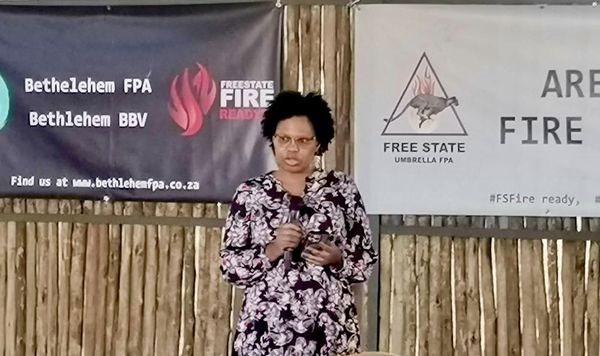
The programme stretched over two days and included a varied set of subjects presented by extraordinary people with diverse backgrounds, skills and years of experience. Together they brought a wealth of information that provided layer on layer of relevant and important information to central South Africans.
The Working on Fire (WoF)Kishugu-Joint Venture (JV) suite of presentations provided valuable information and solutions on a broad range of topics. Linton Rensburg, head of communications for Working
on Fire, kicked off proceedings by addressing the topic of climate change and the need to adapt in a presentation entitled “Climate change and wildfires: key challenges, policy and operational responses. South Africa's preparedness for future wildfires.”
Frank Smook, operations manager Kishugu Aviation, delivered a presentation titled “Aerial firefighting as a critical component of early initial attack”. The subject was not only fascinating and informative but Franks’ years of experience was put on full display to the benefit of the audience.
Coenie Lamprecht, CEO at Kishugu Fleet Solutions, provided excellent insight into the art of effective resource management through the application of advanced technology in vehicles and for drivers. His presentation titled, “Fleet management as a key component of integrated fire management” also delved into the complexities and challenges of vehicle provision for the WoF programme.
The last presentation from the WoF-Kishugu-JV suite was made by Tony Mancos, CEO of the Kishugu Training Academy. The critical importance of equipping firefighters and management to face the increased challenges brought about by climate change in the wildfire management space was emphasised. The need for succession planning and organisational capacity building trough training was highlighted in a presentation titled, “Wildfire training for management and firefighters.”
The Nelson Mandela University School of Natural Resource Management, Veldfire Management, was a very welcome contributor, with the well-known HoD, Tiaan
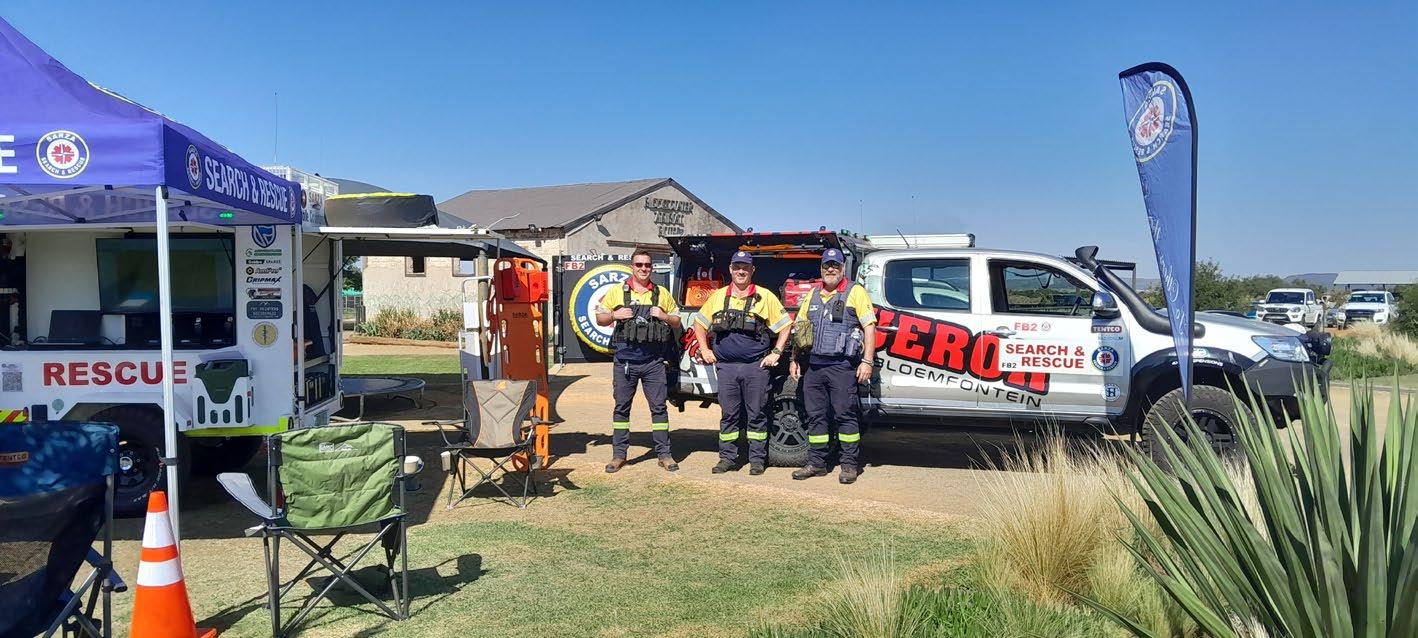

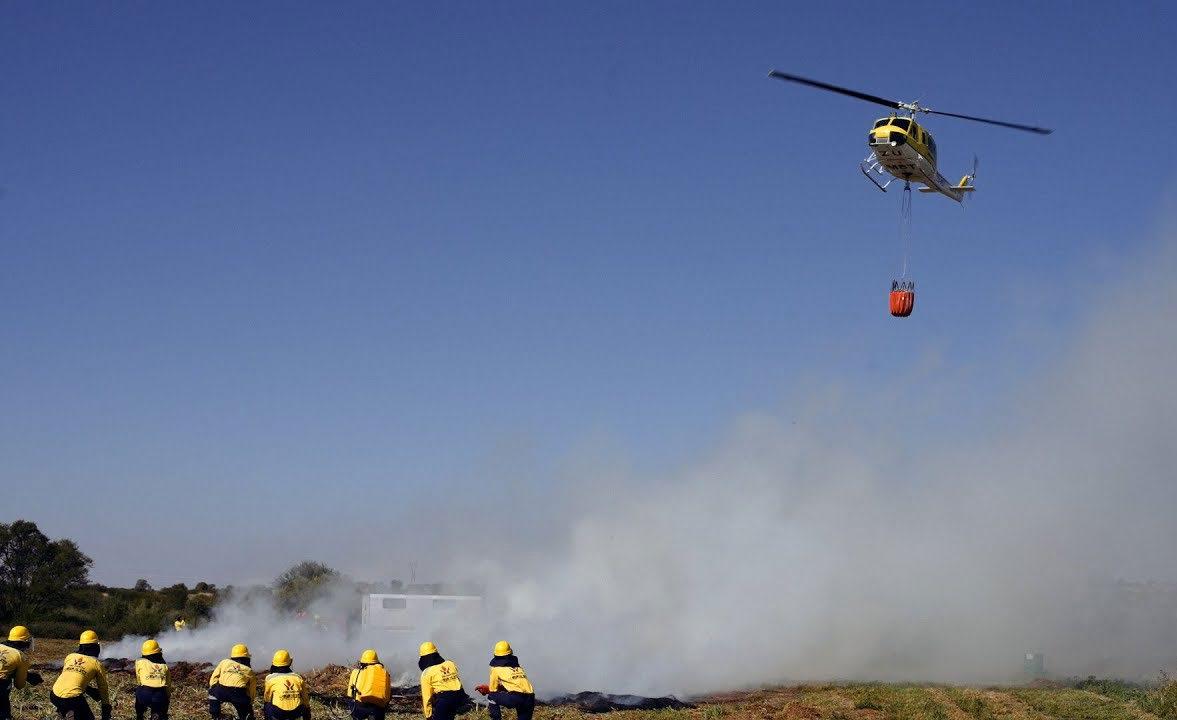
Pool, who brought a wealth of knowledge and experience to bear in his presentation titled, “Integrated veldfire management within agri communities: Is there a need to adapt veldfire management practices within agri communities?” This is a key issue within Central South Africa and Tiaan provided excellent insight and background information that produced a clear answer: Yes there is an urgent need to implement integrated veldfire management within agri communities.
Hannes van Zyl, also from the same department at Nelson Mandela University, had to answer a sticky question with his topic titled, “The viability of community based wildfire management: Is community-based wildfire management a sustainable and realistic approach to increased wildfire risk?” Hannes provided an in-depth background on the topic and the very informed conclusion
was: Pure community-based fire management is not the solution Central South Africa needs; the need is to focus on proper Integrated Fire Management with a strong sense of “community” as a driver for change. This requires the expansion of the definition of community to include other stakeholders as much as possible. An integrated approach will ensure all stakeholders are empowered, thus ensuring the collective risk is minimised, unity is strength, a basic Ubuntu principle.
We were honoured to have Louise Wessels, manager of the Greater Overberg Fire Protection Association (GOFPA) provide us with insight into how GOFPA became a highly functional FPA within an agri-based community. Her presentation, “Analysis of a fire protection association: Greater Overberg FPA, what makes it work?” provided extremely valuable information and reiterated the
fact that proper implementation of Integrated Fire Management is a sustainable solution. This requires the community to trust the FPA and in order to gain that trust the FPA must ensure that all stakeholders are included and empowered. Louise and GOFPA set a benchmark for agri-based fire protection associations.
Prof Theo Venter of the University of Johannesburg, is a well-known and respected analyst and deeply involved with policy development. His presentation entitled “Impacts of wildfires on agriculture and agri communities: It cannot be business as usual.” Was refreshing and thought provoking. Wildfire management takes place within a greater socioeconomic and sociopolitical environment, in South Africa this is a VUCA environment: Volatility, Uncertainty, Complexity, Ambiguity. There are nine requirements to manage a VUCA environment and
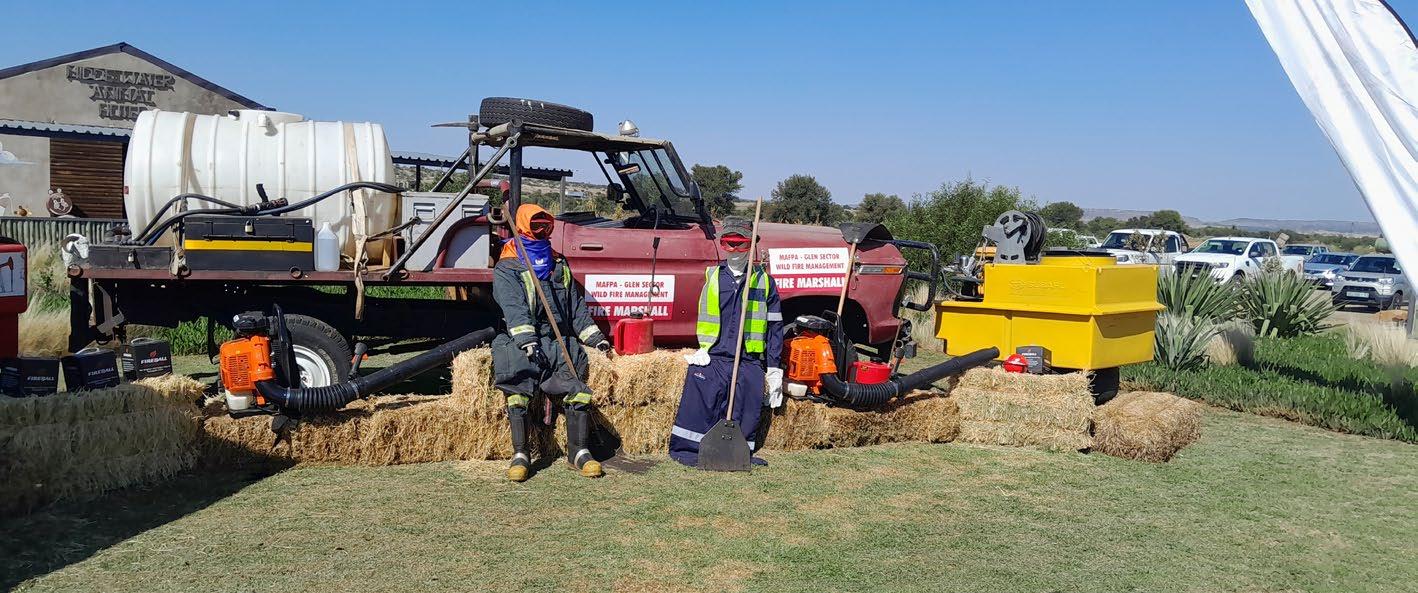
confronting our biases is key to outsmarting VUCA. Effectively managing a VUCA environment will change Volatility into Vision, Uncertainty into Understanding, Complexity into Clarity, and Ambiguity into Adaptibility. Successful wildfire management requires management of the VUCA environment.
Emile Pretorius, business development manager at Santam Agri, brought much-needed perspective from an often overlooked but crucial stakeholder, the insurance industry. His presentation, “Know your fire: agri insurance and veldfire risk management”, provided a serious and sobering look at the financial risks associated with wildfires, the cost of insuring the risks and the importance of a fire protection association in the risks management chain.
Julius Fleischman of the College of Emergency Care and World Rescue Organisation, is highly respected as an incident
commander, particularly at mass casualty and complex incidents and he has a wealth of national and international experience. His presentation, “Critical elements of effective incident management: Effective incident response and management is not accidental, international norms and standards must apply”, highlighted the importance of FPAs obtaining and apply ICS principles. Additionally, FPAs must interact with other services and agencies to gain an understanding of their protocols and procedures and transfer that knowledge to their members. It is important to that landowners understand they can be held accountable for their actions and conduct when engaging in wildfire suppression.
Braam Korf from the volunteer organisation Search and Rescue South Africa (SARZA) Free State region closed off with a harsh reality in Central South Africa. His presentation, “Don’t worry, it’s just a grassfire: veldfire related burn injuries and the importance
of personal protective equipment (PPE)”, was a reality check for landowners who habitually engage in wildfire suppression without PPE or PPC.
The excellent presentations were augmented by various demonstrations that included firefighting techniques and equipment; the highlight was the WoF and Kishugu Aviation demonstration of aerial support provision to ground teams, as always, a crowd pleaser.
The products and services on display from the exhibitors provided additional points of contact where knowledge and information were shared. The collective knowledge, expertise and experience that was made available at the Wildfire Expo was extraordinary for Central South Africa, it changed perceptions, increased understanding, created networking opportunities and fostered relationships. We are grateful for all who got involved. Thank you all, objectives achieved.
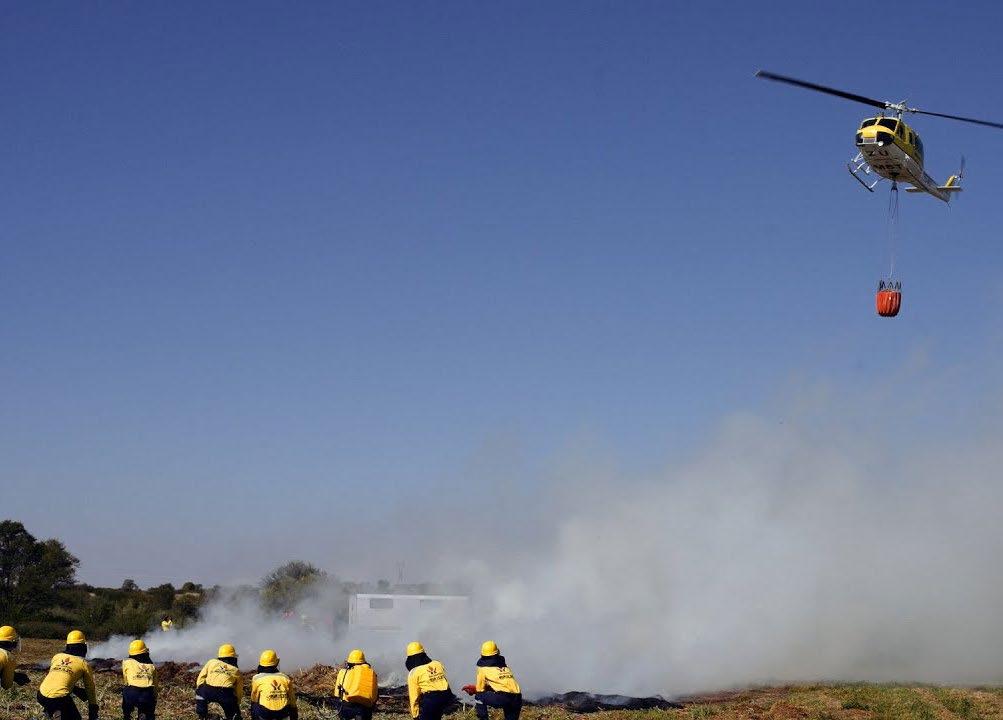
Command Corner: Driving
By Chief Tim Murphy, US Forest Service Africa Disaster Management Technical Advisor
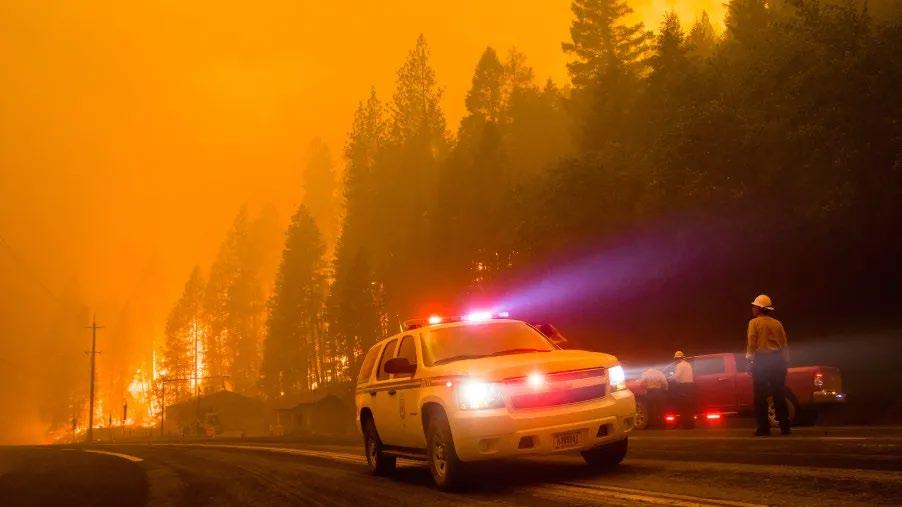
Inattentiveness is a major contributing factor in motor vehicle accidents within the firefighting community
Driving is one of the most hazardous things we do because we literally perform the task hundreds of times in the course of our daily lives we tend to take it for granted. Based on recent accident trends, vehicle accidents are the source of more deaths and serious injuries to wildland firefighters than any other single cause.
To be a safe driver you have to want to be one. Take a good hard look at your driving habits.
Are you training yourself to do the right things the right way, like fastening your seat belt, checking your mirrors and maintaining safe following distances?
Inattentiveness is a major contributing factor in motor vehicle accidents within the firefighting community. Since the average adult attention span is 15 to 20 minutes, we must develop
techniques that allow us to refocus our attention on our driving.
Many things can lure our attention away from our driving such as: fatigue, eating and drinking, reading directions and maps, writing, cell phone and radio use, conversation within the vehicle and music.
• Drive only when you are well rested and alert and avoid driving during the hours of 22h00 and 06h00am. Take a 10 to 15 minute break after every two hours.
• Practice situational awareness; be aware of what is happening in front, behind and on both sides of your vehicle.
• Never drive when taking medications that make you drowsy.
• Delegate navigation and communication to a passenger or pull over.
• By constantly moving your vision, checking mirrors and
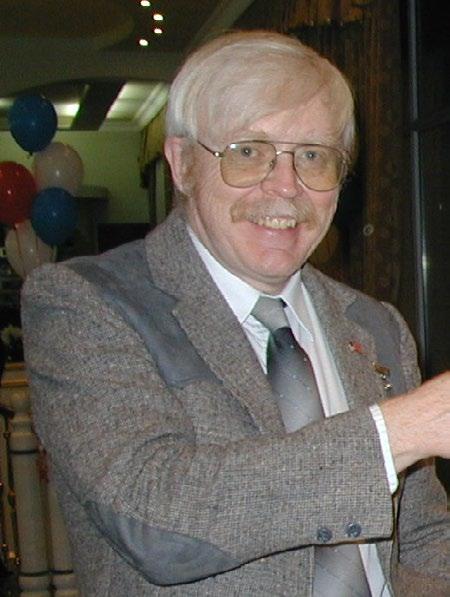
distant road conditions, you can avoid highway hypnosis and daydreaming.
• Avoid eating or drinking while driving.
• When talking with passengers, keep your eyes on the road and both hands on the steering wheel.
• Avoid serious or argumentative conversations.
• Do not be in a hurry, be patient.
Safe driving starts with a safe vehicle. Something as simple as under-inflated tyres can have serious consequences. Before operating any vehicle, do a walk-around and do a pre-use inspection to look for potential problems, make sure the lights and blinkers work and adjust your seat and mirrors. If it is the first time you have driven the vehicle, make yourself aware of where everything is.
Incident Response and Fireline Safety Pocket Guide: page 37 Vehicle and road safety.

Chief Tim Murphy
DMISA Disaster Risk Reduction Conference 2024
Date: 21 - 22 November 2024
Venue: City of Cape Town (Council Chambers)
DMISA is hosting its Disaster Risk Reduction Conference 2024 from 21 to 22 November 2024 at the City of Cape Town Council Chambers in Cape Town, Western Cape Province in South Africa. The DMISA Annual General Meeting will be held on Wednesday, 20 November 2024 at 14h00.
The Disaster Management Institute of Southern Africa (DMISA) is the professional association and community of practice for Disaster Management in Southern Africa and the SAQA recognised professional body for Disaster Management in South Africa.
The 2024 Disaster Risk Reduction Conference 2024 is themed: Connected capability for future resilience - #ConnectedDRR
The esteemed panel of local and international speakers will explore topics on:
Managing current and future risks and uncertainties in a rapidly changing climate and global context Prioritising gender equality, accessibility and inclusion to leave no one behind Accelerate action for our collective sustainable future
The Annual DRR Conference of the Institute is a highlight on the Disaster Management calendar and before COVID-19 routinely attracted more than 300 delegates.
The Institute is recognised as the mouthpiece of the Disaster Management profession in Southern Africa and is now rebuilding this annual in-person learning and networking opportunity.
Proudly presented by the Disaster Management Institute of Southern Africa (DMISA) in partnership with the City of Cape Town and supported by the South African National Disaster Management Centre (NDMC), the conference provides an annual opportunity for a diverse range of stakeholders in
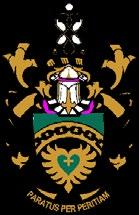
disaster management from across Africa to gather and share skills, knowledge and experience.

This year’s conference will be held at the City of Cape Town (Council Chambers), Cape Town, in the Western Cape Province, South Africa. Cape Town is a port City, also known as the Mother City, is situated on South Africa’s southwest coast, on a peninsula beneath the imposing Table Mountain. The City of Cape Town’s Council Chambers is in the CBD and 20km drive from the Cape Town International Airport.
Programme
Thursday, 21 Nov 2024
Conference Day 1: 08h30 to 16h00
Fri 22 Nov 2024
Conference Day 2: 08h00 to 16h00
CONNECTED
FUTURE
Connecting generations communities to collectively maintain disaster risk reduction in the face of change
DRR Conference
Exhibition space will be available: Please direct enquiries to Ronelle Pieters at email: admin@disaster.co.za.
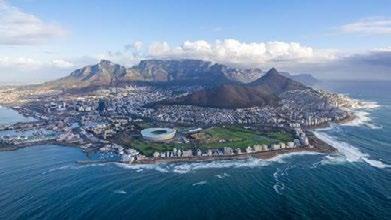
Registration fees, which include all teas as well as lunch on both days and evening functions on 20 November 2024 (Meet and Greet) and 21 November 2024 (gala dinner), have been set at very reasonable rates as follows: Members of DMISA: R5 000-00 Non-members: R5 500-00
www.disaster.co.za
Register online using this link
Closing date for registrations and payment: 31 October 2024
Late registrations, if accepted, will be subject to a penalty of R1 000 per delegate.
Should you have any further enquiries, do not hesitate to contact the office at: admin@disaster. co.za or visit the website: www.disaster.co.za

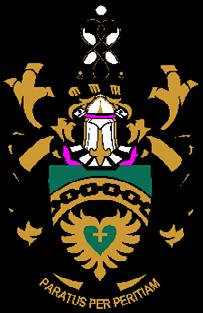
DMISA, the voice of the Disaster Management community and the SAQA recognised professional body for Disaster Management in South Arica, proudly presents:

2024 DISASTER

Connecting generations and communities to collectively build and maintain disaster risk reduction capability in the face of change and uncertainty.
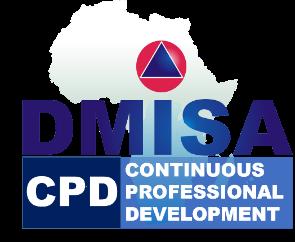
C A P E T O W N
Western Cape Province, South Africa
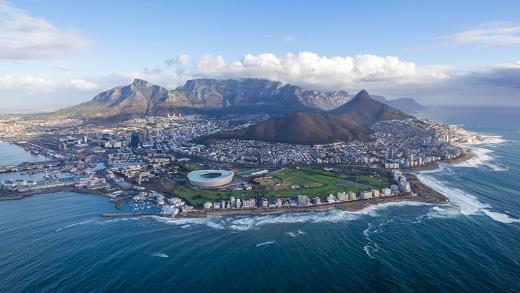
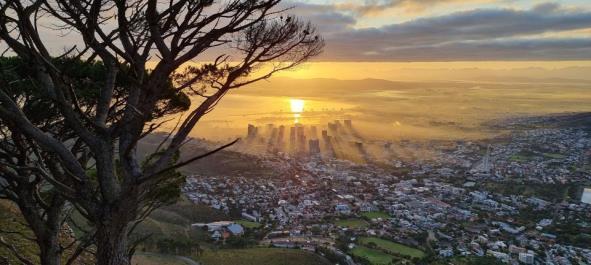
Third Annual Women in Emergency and Fire Services Leader Conference
Date: 19 to 20 September 2024
Venue: Protea Hotel Waterfront, Cape Town, South Africa
Eminence Corporate Solutions will be hosting the third Annual Women in Emergency and Fire Services Leader Conference at the prestigious Protea Hotel-Waterfront in Cape Town on 19 and 20 September 2024. The Women in EMS Leadership Conference 2024 event is a two-day programme being curated by Eminence Corporate Solution, with an audience of about 80+ delegates, made up of senior executives from EMS, uniformed services from public and private sectors. Our goal is to let all the women to THRIVE in their positions and climb up the ladder with grace and integrity.
The conference brings together researchers, EMS and fire services leaders, health care professionals like paramedics, pilots, emergency medical technicians, nurses, medical despatchers, physicians and managers in the area of emergency medical services and pre-hospital care. Attendees can expect to gain practical leadership skills and discover growth opportunities, irrespective of their current positions.
Success is your birth right and opportunities are abundant but you have to be willing to take action - and it starts with taking part in events like this where you'll be equipped with the right tools, resources and like-minded women so that you have the ability to initiate a wave of positive transformations in your community and around the continent.
The conference is aimed for women who want to THRIVE
• Take control of their work and life now and in the future
• Have their voice heard in a way that’s meaningful to them
• Reconnect with who they are and all they have to offer
• Identify and challenge any limiting benefits that may be holding them back and find strategies to build their personal resilience
• Value themselves and what they need and want from work and life
• Engage, connect and build relationships with other women in the sectors
Why
should I exhibit?
• Showcase your service or product face-to-face with delegates and decision makers
• Broaden your contacts with the decision makers from different companies and increase pool
• Increase awareness of what your company can offer individuals and organisations
• Make sales of your product or service right on the spot
• Expose your brand and connect
The event is priced at R7 499-00 per delegate, which will allow delegates to attend the networking session and gala-dinner on the first day of the event.
For more information, please contact the sales team for exhibition opportunities and delegation on: Tel: +27 10 023 3985 Mobile: +27 81 497 7245
Email: info@ec-s.co.za Register: www.eminence-events.co.za Programme: www.eminence-events.co.za/page
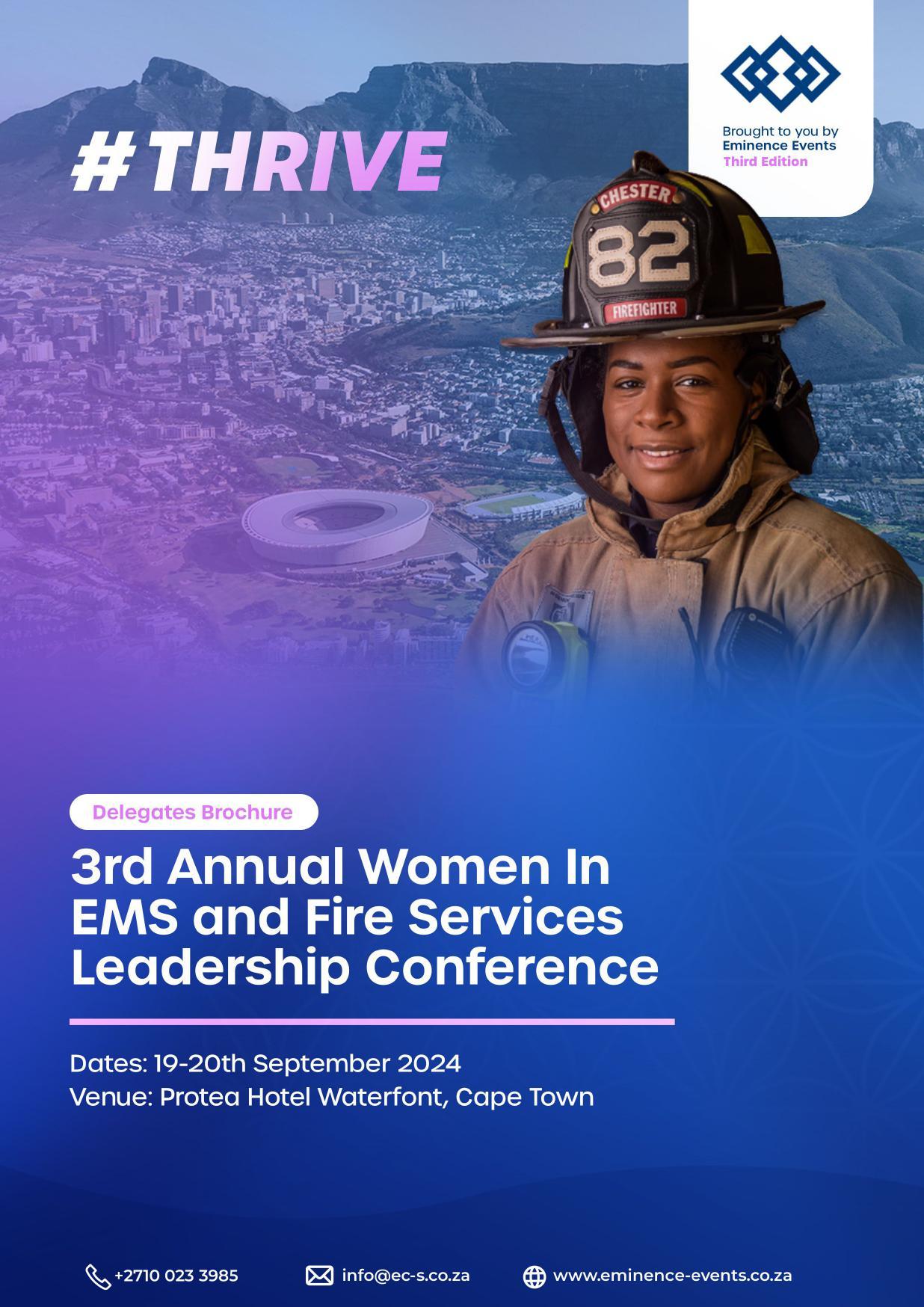
Media partner

Key considerations when establishing a technical rescue team
By Colin Deiner, chief director, disaster management and fire brigade services, Western Cape Government

The term ‘technical rescue team’, ‘special operations team’ or ‘urban search and rescue team’ have increasingly become part of the fire and rescue services vocabulary over recent years. Unfortunately these terms have also come to mean different things to different people. In this article I will attempt to unpack what a technical rescue team should look like, what should be expected from it and how you should go about establishing it.
Let’s start with what it is not.
A technical rescue team is not a bunch of rescuers who have done a series of rescue training courses and are spread over several shifts and then come together when their skills are needed to perform whatever tasks are needed to be performed from time to time.
Technical rescue teams should also not be seen as ‘superheroes’ who are able to respond to ’any’ incident and have the skills to manage all rescue disciplines successfully. I have often seen emergency services make this mistake.
The varied skills required for the many types of technical rescue disciplines seldom all exist within one person. Someone who is an excellent swimmer (and will therefore be a good water rescue technician) might not be any good at structural collapse rescue where concrete breaking and shoring skills are required.
It is also important not to put all your eggs into one basket and place your reliance on only a few individuals to manage the entire system. If any of them leaves your service or is not available
Members of Miami-Dade Fire Rescue responding to the Surfside building collapse make up FL-TF1, a search and rescue task force often dispatched to national and international disasters. Photo: Miami-Dade Fire Rescue
on the day, you are not able to respond effectively and do what is needed when your team is needed most.
A technical rescue team is, in fact, more a system of personnel, equipment, procedures and command systems, which form part of a department’s structure just as its hazmat team or dive rescue team does. It’s more a system than a team.
The need for a technical rescue team (TRT)
The first two considerations in the process should be:
• Do we need a technical rescue team and
• Can we afford a technical rescue team?
The first question might be the easiest to answer. Doesn’t it stand to reason that complex rescue scenarios can happen anywhere? People can get swept away by swift moving water, trapped under heavy structures, trapped at a height, in many varied locations –and for this you need a technical rescue team!
I think we should consider the overall capability of our service before we think about the need to specialise. It should be part of each firefighter/rescuer’s skillsset to perform effective motor vehicle rescue, rope, confined space and fire search and rescue activities.
A very good baseline of rescue skills within each of your members not only ensures effective responses to your normal ‘bread-and-butter’ incidents but also provides the platform for a more advanced level of responder to the more specialised mission.
I recall speaking to a training officer several years ago who was intent on having all his staff members complete a structural collapse rescue course. When asked how many of his staff members had actually completed a motor vehicle rescue course, he was unable to say.
The very first time I was involved in a foreign response to an earthquake disaster was in 1999, when a small team of 18 members responded to a major earthquake near the city of Yalova, Turkey.
Three years previously, my department had acquired a range of structural collapse equipment for us to deal with the sinkhole problem in parts of our municipal area that was caused by the dolomitic rock formations, which make up a large part of the region. We had also studied and tested various structural collapse rescue techniques, however, none of our members had actually completed more than some introductory training in structural collapse rescue.
What we did have was a very good motor vehicle rescue
It is important not to put all your eggs into one basket and place your reliance on only a few individuals to manage the entire system
training programme, which focused heavily on vehicle stabilisation with new techniques being constantly researched. When the call came in August 1999 for volunteers to form part of a rescue team to travel to Turkey, our department’s management saw this as a great opportunity to gain valuable experience and grow our system.
The important question, however, was: who do we send? We decided to send most of the members of our vehicle extrication competition team who had just excelled at the recent National Extrication Competition in Cape Town.
The reason: this team was well versed in vehicle stabilisation, metal and glass relocation, operating heavy hydraulics and other hand tools and were comfortable

Effective communication skills within the team and radio communication for coordination with the incident command and other emergency services is imperative
Photo: Hampshire and Isle of Wight Fire and Rescue Service, UK
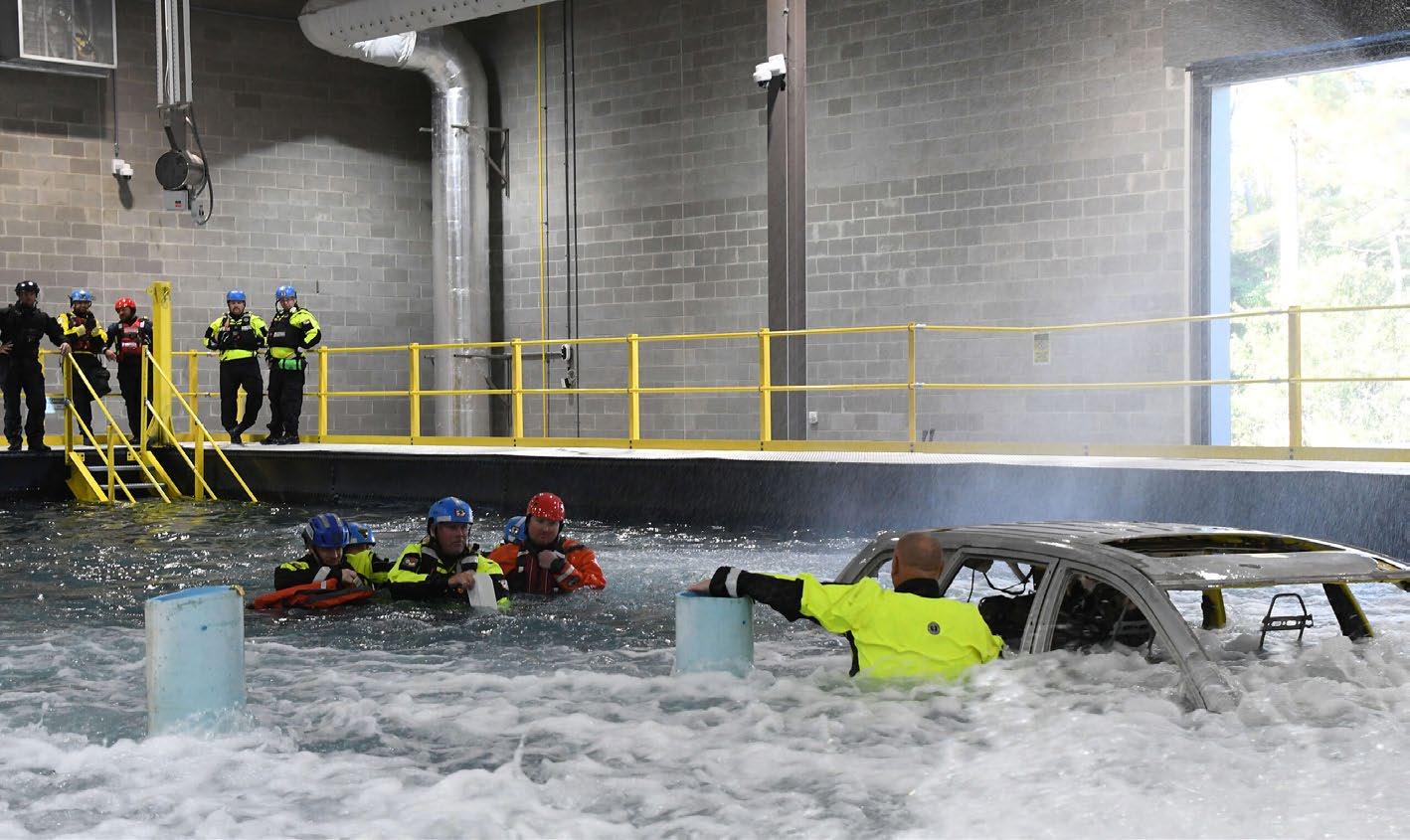
working in a small group under a single incident commander.
My point: We had a good baseline system, which allowed us to ratchet up our capabilities to meet the more complex problem.
A few years later I was discussing this with Tom Carr, a member of a pioneering team from Montgomery County, Maryland in the USA, who had responded to the 1988 earthquake in Armenia with very much the same approach. Taking some of their most skilled rescue technicians and a small cache of equipment they were able to use this opportunity to build their capacity in future years.
The second question will need serious thought. Establishing a TRT is not a cheap exercise.
The range of equipment required for the many varied types of incidents you might encounter might be difficult to justify. Will
your department allow you to procure a concrete chainsaw if it is going to impact on your firehose or SCBA replacement programme? Can you afford to purchase new rescue ropes every time after you have used your existing ropes during an actual rescue mission and can’t guarantee their integrity any longer?
Looking at your risk is very important when making this decision.
A single specialty such as a rope-rescue team might meet the needs of the community. It might be necessary to include other specialties. If you have a lot of construction happening and a several industrial complexes in your area, you might need to consider adding a trench collapse and confined space rescue capability.
A big city emergency service with multiple complex risks will have to invest heavily into a technical
rescue team capability and generally have the budget (and the foresight) to maintain a team and progressively expand it to meet the increasing risk.
In smaller communities the trade-offs may have to be more focused. In this situation it becomes important to be aware of what is happening around you.
Are there other organisations doing the same thing you are attempting to do? There might be a volunteer wilderness search and rescue organisation who would be delighted to be involved in your activities.
You might have an industrial complex with all the equipment required for confined space entry and who would be willing to make their equipment available to you in an emergency. A construction company doing a lot of pipe laying could have a lot of side-panels and trench shores lying around.
Swiftwater rescue training at Fayetteville Technical Community College
Identify these people and organisations and involve them in your planning. While the inclusion of outside organisations is a great solution and could save you a lot of money you should make sure that whatever equipment they make available is compliant with the relevant safety legislation. This should not be a problem at all as most private companies have robust safety standards; however, it is important to ensure that your staff will be protected when using it and that any unnecessary legal claims are avoided.
The start-up costs are usually the one thing we give the most attention to while forgetting about the cost of sustaining the team and maintaining the equipment. Gas measuring instruments for your confined-space rescue team must be replaced periodically, all your pressure vessels such as SCBA cylinders and high pressure lifting bags, must be tested independently according to law and manufacturers standards. Ensure that these costs are budgeted for.
Training
There are various avenues through which technical rescue teams can be trained. I don’t wish to spend much time on the merits of the various training institutions available in the country at the moment, suffice to say that there are some really excellent options which, not only provide the initial training but also follow this up with periodic refresher training.
When you have decided on what training needs to be done, consider the offerings available and work on a development plan for your team. Members’ skills should be tested and their results logged periodically along with
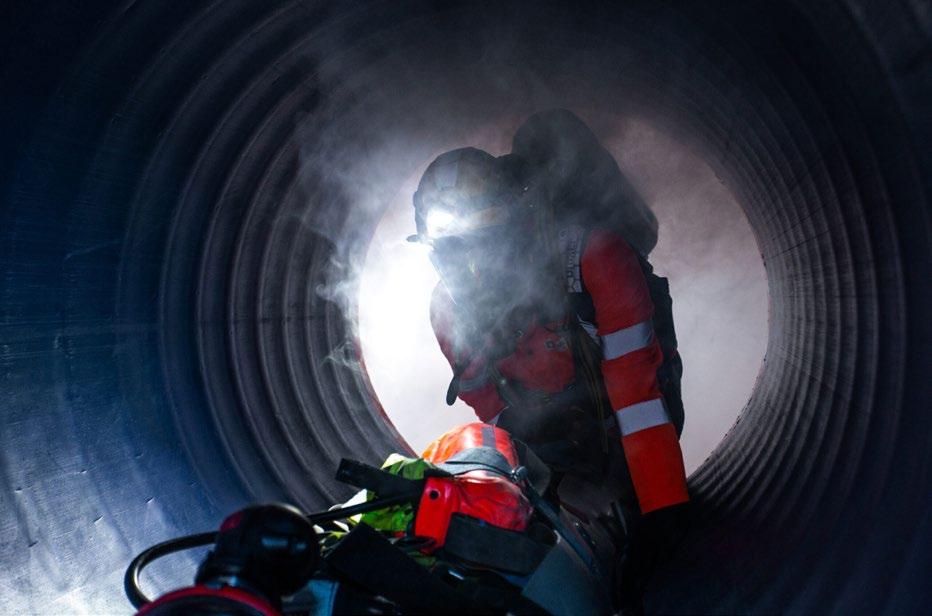
their physical ability to perform the tasks expected of them.
Assuming your prospective technical rescue team members already have a good motor vehicle rescue and rope rescue foundation your initial skills development and training programmes should focus on the following:
• Advanced technical rope rescue skills
• Rope systems
• Rigging and anchor systems
• Vertical and horizontal rope rescue techniques
• High-angle rescue skills.
• Confined space rescue
• Knowledge of confined space regulations and safety protocols
• Entry and exit techniques for confined spaces
• Use of specialised equipment for confined space rescues.
• Swiftwater and flood rescue
• Water safety and rescue techniques
• Swiftwater swimming and boat operations
• Knowledge of hydraulic principles in water.
• Structural collapse rescue
• Understanding of building construction and collapse patterns
• Shoring and stabilisation techniques
• Use of heavy equipment for debris removal.
This will put your technical rescue team in a great position to perform their missions effectively but please remember the following two things:
• Keeping up-to-date and current I have visited rescue squads in Europe and the USA who require their technical rescue team members to complete a specified number of hours, outside their normal shift hours, doing refresher training and attaining proficiency on any new equipment that may be acquired by the service. Periodic tests are done to ensure this is being done. Always make sure that the team members are in the right shape physically and mentally to do their jobs and that they are skilled in the equipment and techniques required to do it. Complex technical rescues don’t happen often enough for rescuers not to continuously train for them.
Confined space rescue; Photo: Confined Space Rescue Services UK
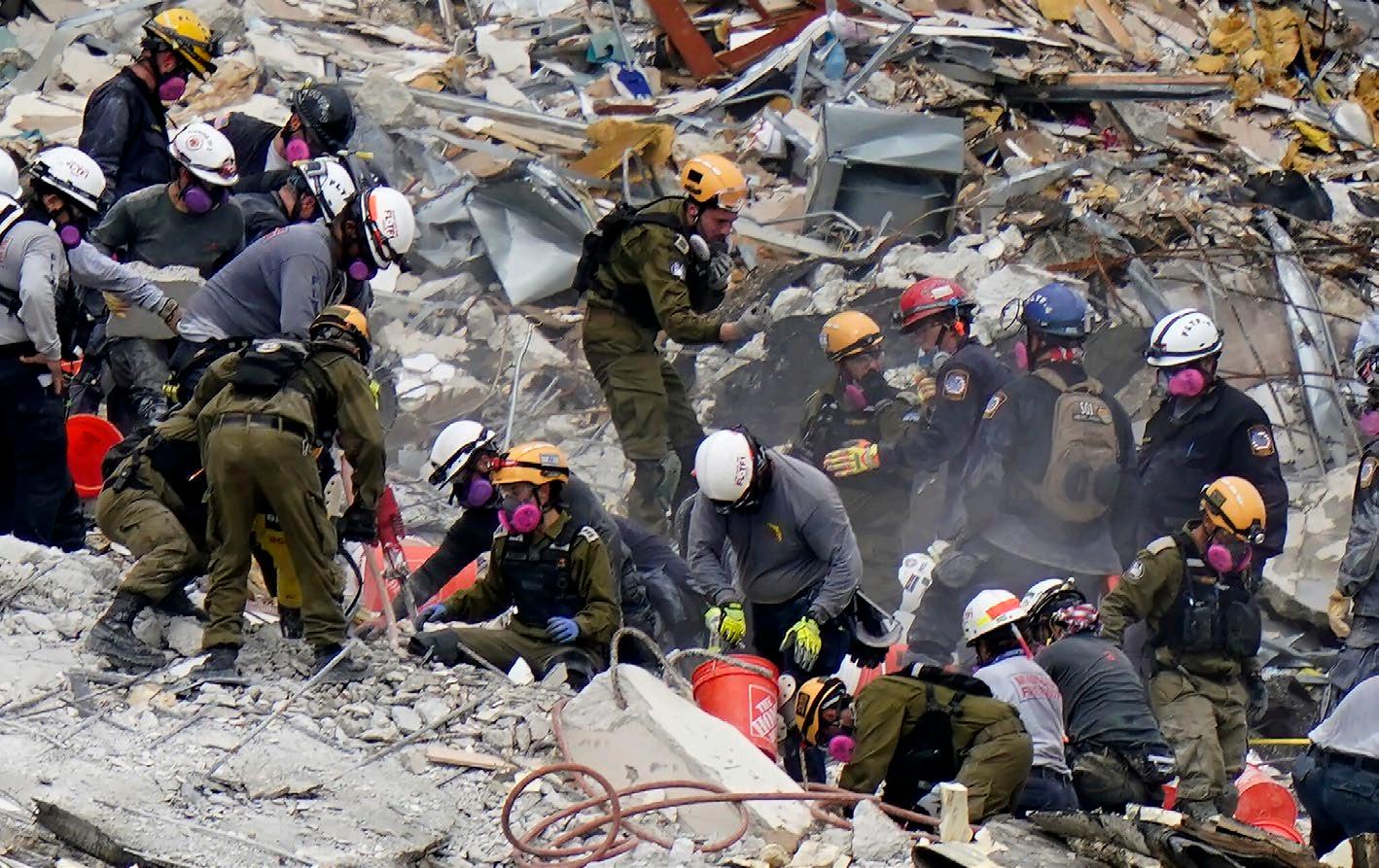
• Diversify
The discipline specific skills are vitally important to the team but so is the ability to bring other, sometimes non-specific, skills to the mix. Being able to field service a hydraulic pump, crane operation, controlling leaking product in a confined space and many others, are skills that could turn out to be essential to a specific operation. When considering the diverse range of skills required some of the areas to focus on would include:
• Communication (effective communication skills within the team and radio communication for coordination with the incident command and other emergency services).
• Navigation and mapping (map reading and navigation skills as well as GPS navigation in unfamiliar terrains).
• Technical skills (understanding mechanical and hydraulic systems, the ability to use
specialised rescue equipment and basic fuel and battery operated motors).
• Knowledge of legislative and departmental safety protocols and regulations.
As mentioned earlier, ensure a good physical fitness programme for all members, which should include endurance and strength for demanding rescue operations and ability to work in challenging environments.
The value of teamwork and leadership will be achieved through focusing on developing collaboration within the team and developing the leadership skills for managing complex rescue scenarios.
All of these factors must form part of a comprehensive training and development programme that must be central to your team’s existence. So often rescue squads or fire crews get
caught up in the normal service bureaucracy, which very easily takes the focus away from the actual mission. If you don’t guard against this, it will happen and your system will collapse.
In closing
Much like Special Forces in the military, your rescue squad or Technical Rescue Team will be seen as the elite of any emergency service. Better trained, more skilled and getting to do all the neat stuff makes the rescue squad the pace most people want to be.
As the person responsible for this activity, make sure it stays that way. This can only be achieved by proper planning, persevering with your programme and demanding the highest standards of professionalism within your team.
Rescue is for the serious, not the well-meaning.

Crews from the United States and Israel work in the rubble of Champlain Towers South condo, in Surfside, Florida, 29 June 2021. Photo: Associated Press
Full body PPE for firefighters from Charnaud

It’s fire season in many parts of the world and with that comes the ideal opportunity to review your personnel’s firefighting personal protective equipment (PPE). Fire, in whatever form or environment, is extremely dangerous and potentially deadly. No matter the situation a firefighter may find themselves in, one thing remains: the need for top-quality firefighting PPE.
Charnaud® Fire-Safe® is a head-to-foot® range of personal protective equipment and
Charnaud® Fire-Safe® is a head-to-foot® range of PPE and clothing for structural and wildland firefighting
clothing (PPE/C) for structural and wildland firefighting.
Head protection is essential
A firefighter faces a multitude of familiar and unpredictable hazards whilst performing their duties and the only way they can ensure they stay safe on the job, is to ensure they’re wearing the correct PPE and clothing.
Even the most experienced firefighters cannot predict if they’ll sustain an impact injury from falling debris. Head
protection is designed to keep the wearer’s head, eyes and mouth safe from harm.
Depending on the nature of the fire and the environment in which they are working, firefighting head protection can range from a hard hat and balaclava to a specialised cushion-lined helmet.
Specialised PPE saves lives
Despite how experienced a structural firefighter may be, they can only perform their duty with the correct PPE. Protective clothing
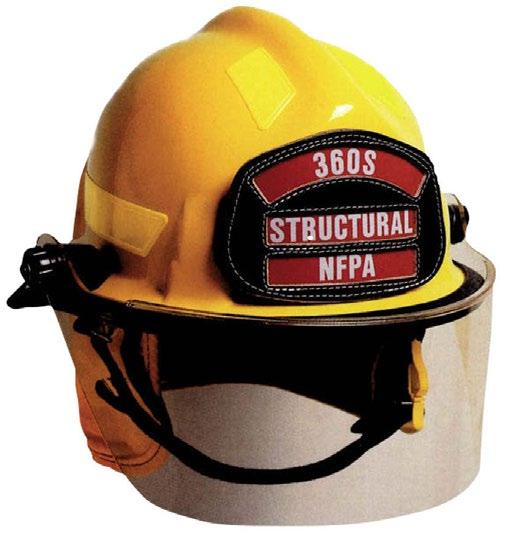
and equipment like bunker suits, breathing apparatus and head protection are what help to keep a firefighter safe and enable them to continually to perform their duty.
Structural fires present many dangers including the chance of poor or limited visibility, falling debris and exposure to airborne VOCs.
A firefighter’s helmet is a vitally important part of their PPE arsenal; a good helmet will allow them to move around with relative ease as well as help to keep their field of vision as clear as possible.
Not all firefighting helmets can boast the same unique qualities and choosing a specialised firefighting helmet from a reputable PPE manufacturer or supplier makes all the difference in a life-or-death scenario.
Offering full head protection, the Charnaud® Fire-Safe® Structural Firefighting Helmet has many outstanding features, such as:
• A lightweight, chip-and-crackresistant thermoplastic shell that can withstand exposure to high temperatures
• A foam cap and shockabsorbent tube, which offers improved thermal protection
• An edge-trim made of ultrahigh temperature material
(TPR) that will not drip or melt
• A 4” ballistic-grade visor that is non-corrosive and can withstand extreme temperatures of up to 260°C/500°F
• A glass-filled polymer face shield, which is anti-fog and scratch-resistant on the interior and exterior faces
• A cushion-lined inner that can be removed for cleaning or replacement and
• A flame-resistant chin strap and a rear ratchet for adjusting the height of the helmet.
A firefighter can only perform as well as their PPE but not all firefighting personal protective equipment and clothing are made equal.
Contact Charnaud® to know more about the Charnaud® Fire-Safe® range, especially for personnel who face the hazards of fire and flames in their daily work.


Charnaud® Fire-Safe® PPE keeps firefighters safe
The Charnaud® Fire-Safe® Structural Firefighting Helmet
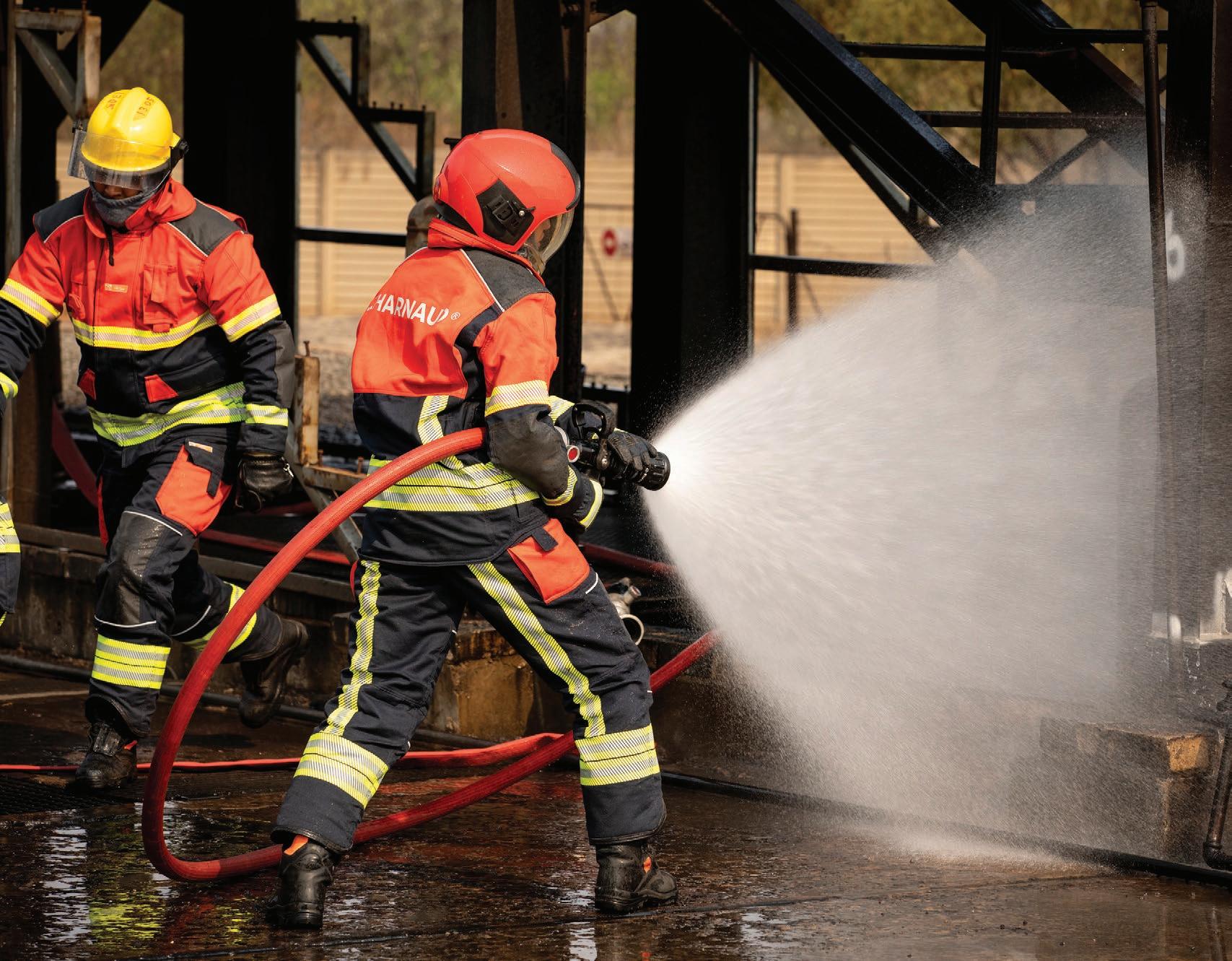
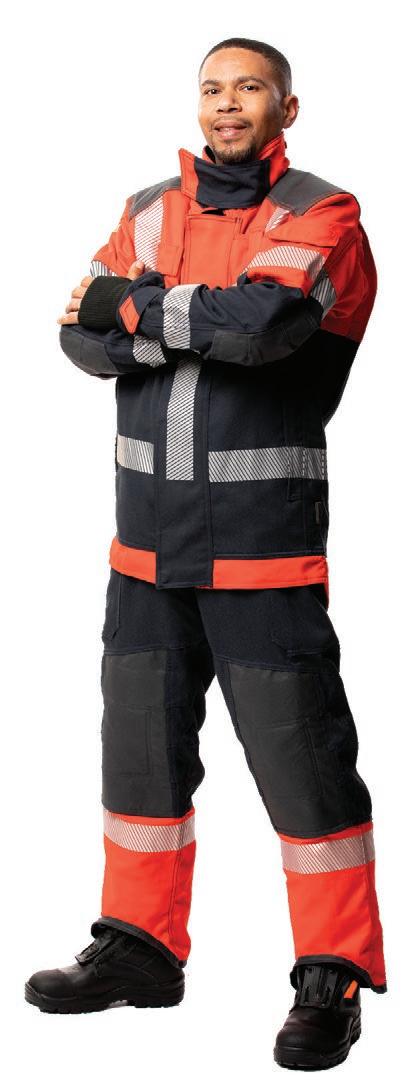
CHARNAUD® FIRE-SAFE® is a comprehensive range of protective workwear and equipment for firefighters protection, complete with head to foot® garments and accessories, including helmets, balaclavas, gloves, boots and socks.
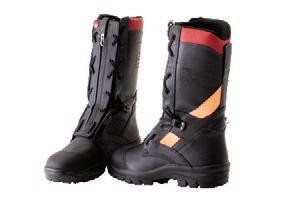
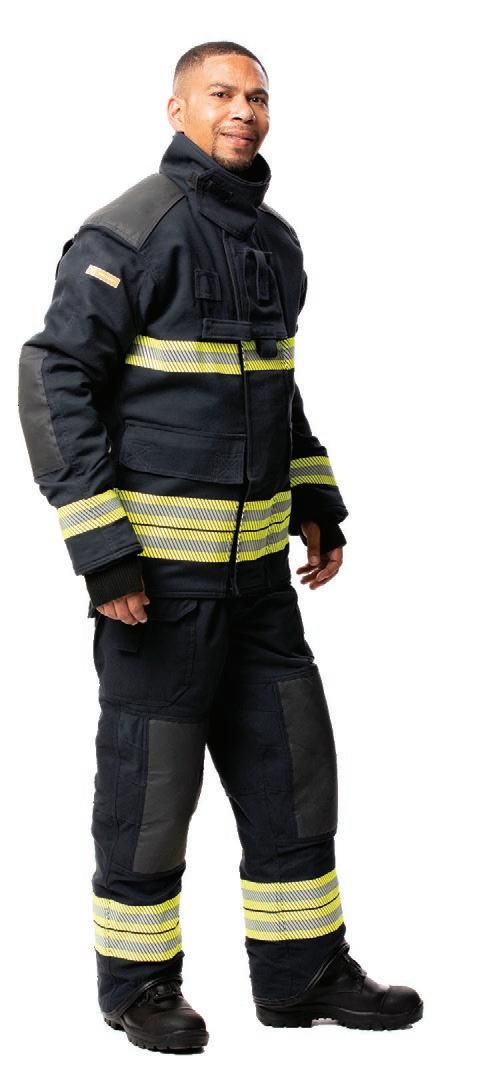
Our CHARNAUD® FIRE-SAFE® Structural garments are made to the highest standards for full-body protection. They are permanently flame-resistant and include a moisture-wicking layer. They consist of an outer shell, a breathable waterproof moisture barrier and a thermal liner with anti-wicking, anti-scuff barrier around all the hems. They strike the perfect balance between heavy protection and lightweight wear ability and manoeuvrability.
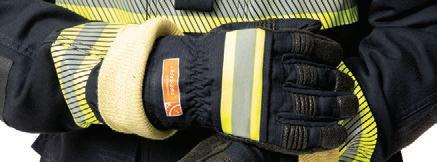

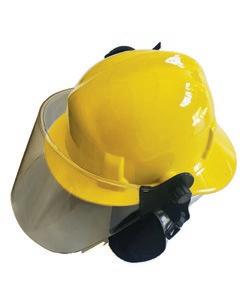
Vanguard Fire and Safety: Your trusted partner in NFPA-certified firefighting protection

In the high-stakes world of firefighting, where every second counts and safety is paramount, having the right protective gear can make all the difference.
Vanguard Fire and Safety stands as an industry-leader in the field, renowned for its unwavering commitment to excellence and the safety of firefighting personnel.
As a leading importer and distributor of premium quality products, Vanguard provides an extensive range of high-quality firefighting protective apparel and accessories, establishing the standard for reliability and innovation. As a premier importer and distributor, Vanguard offers a comprehensive array of top-tier firefighting protective apparel and
accessories, setting the benchmark for reliability and innovation.
Importance of NFPA 1971 certification
Vanguard Fire and Safety proudly promotes brands with NFPA 1971 certification, recognising its pivotal role in ensuring the reliability and safety effectiveness of firefighting protective gear. Established by the National Fire Protection Association (NFPA), NFPA 1971 sets stringent standards that gear must meet to ensure optimal performance and protection in firefighting environments.
Standardisation of safety requirements
NFPA 1971 provides a standardised framework of
safety requirements that gear manufacturers must adhere to. These encompass thermal protection, moisture resistance, durability and performance under extreme conditions such as heat, flame and impact. By adhering to these guidelines, manufacturers guarantee that their products reliably meet the demanding needs of firefighters in the field.
Ensuring reliability and durability
Firefighting is inherently hazardous, often involving exposure to intense heat, flames, sharp objects and hazardous materials. NFPA 1971-certified gear undergoes rigorous testing to ensure its ability to withstand these challenges over time. This includes tests for heat resistance,

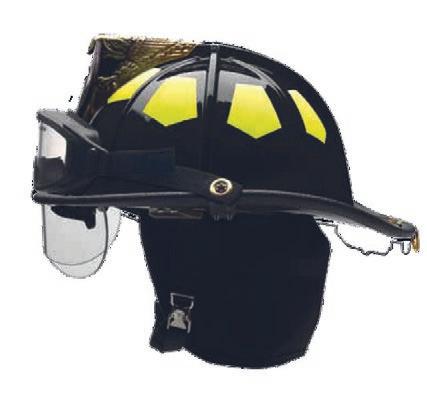
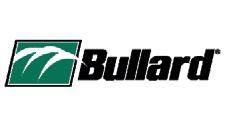
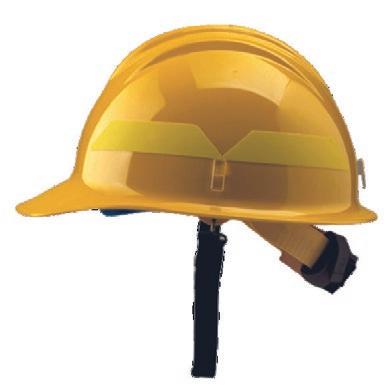

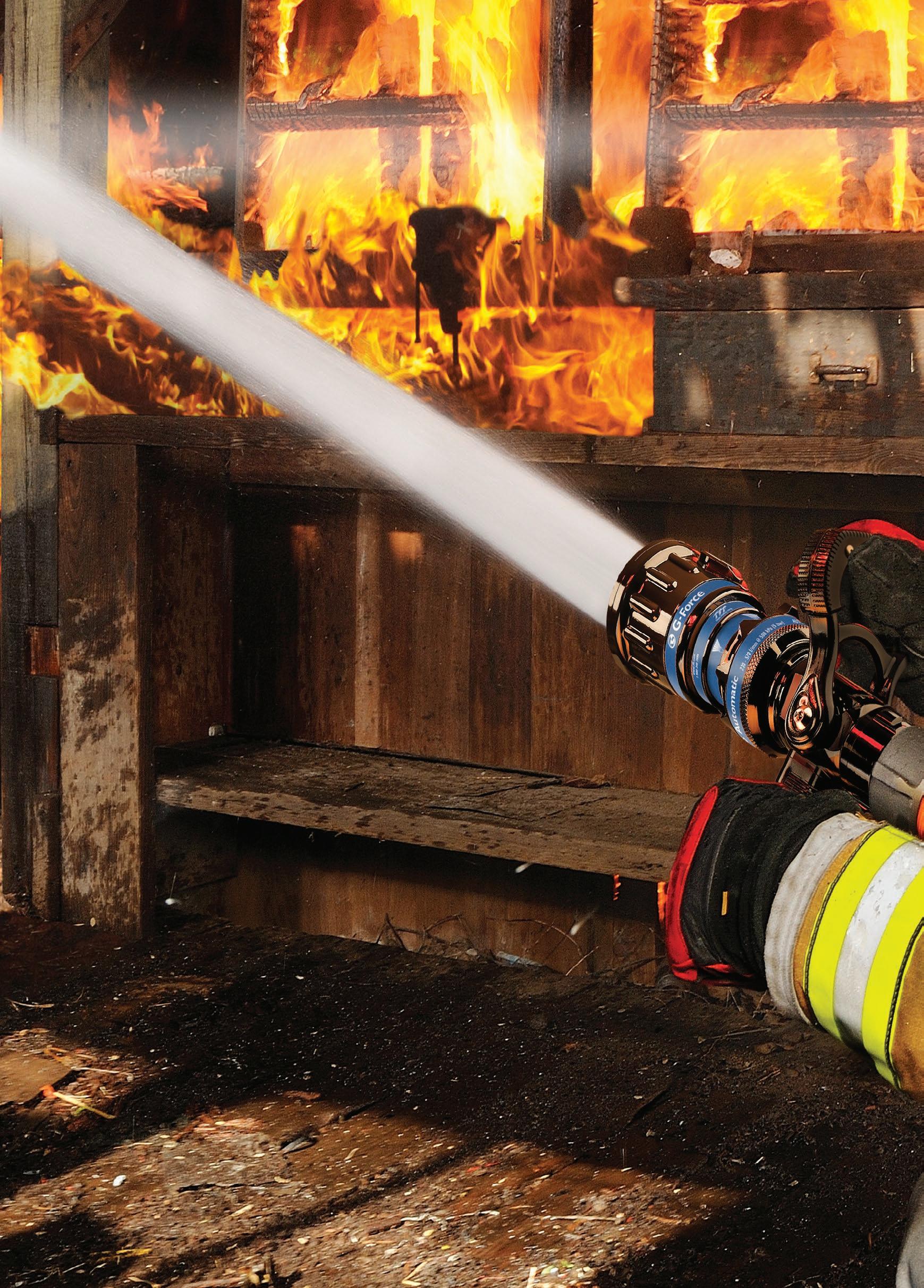

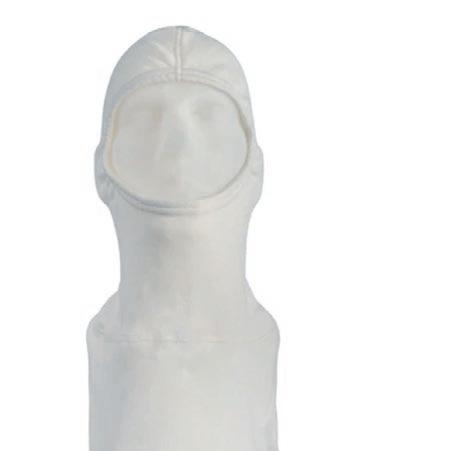
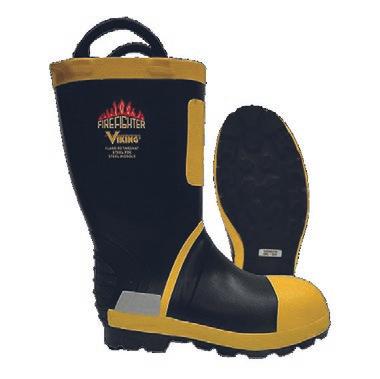



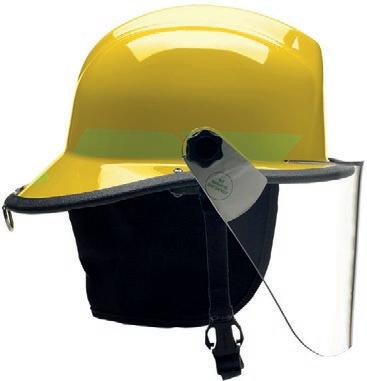

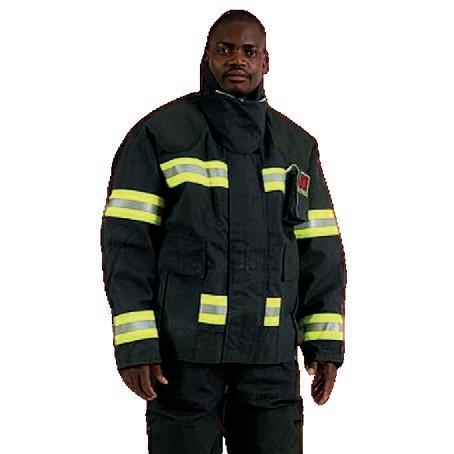


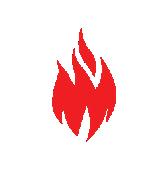
flame resistance, tear strength, abrasion resistance and chemical resistance. Firefighters can trust that NFPA-certified gear has been designed and tested to maintain its protective qualities even in the most challenging environments.
Protection against thermal hazards
Protecting firefighters from thermal hazards is paramount. NFPA 1971-certified gear specifies minimum requirements for thermal protection, ensuring that firefighters are shielded from radiant heat, convective heat and conductive heat sources. This protection is critical for preventing burns and other thermal injuries that could jeopardize firefighter safety and effectiveness during operations.
Compatibility and interoperability
NFPA 1971 certification also addresses compatibility with other firefighting equipment. This ensures that helmets, gloves, boots, bunker suits and other protective gear work
seamlessly together, allowing firefighters to move and operate efficiently during emergencies. Compatibility standards reduce the risk of equipment failure and facilitate smoother operations in high-pressure situations.
Compliance with regulatory requirements
In many jurisdictions, NFPA 1971 certification is mandatory for firefighting equipment used by professional fire departments and emergency responders.
Compliance with these standards helps organisations meet legal and regulatory requirements concerning workplace safety and hazard mitigation. It underscores the commitment to protecting firefighters and ensuring their gear meets the highest industry benchmarks.
Vanguard's comprehensive product range
Head protection: Bullard helmets Protection starts from the top down with Bullard helmets

leading the charge at Vanguard Fire and Safety. Whether it's the versatile Bullard LTX helmet, the classic Bullard UST Traditional with customizable leather fronts or the lightweight yet robust Bullard Wildfire helmet, each model meets stringent NFPA 1977 standards, ensuring uncompromising head protection in any firefighting scenario.
Lifeliners Flash Hood: unmatched comfort and protection
Crafted from Nomex® and Lenzing™ FR fibres, Vanguard's Lifeliners Flash Hood excels in moisture-wicking properties and lightweight comfort. This doublelayer hood is essential in both structural firefighting and wildfire operations, combating heat and moisture effectively.
Odyssey Fire Goggle: clear vision, enhanced safety
Designed for wildfire conditions, the Odyssey Fire Goggle features a non-vented frame, compatibility for prescription eyewear and heat resistance up to 176 degrees Celsius. These goggles ensure clear vision while protecting firefighters from smoke and debris, with a flame-retardant adjustable headband for a secure fit in demanding environments.
Hand protection: HySafety gloves
From structural firefighting to rescue operations, HySafety gloves offer unparalleled protection. Whether it's the HSG 7877 with a goatskin palm and thermal liner, the NFPA 1977 certified HSG 7986 crafted from Eversoft cowhide or the HSG 79325 providing cut-level 5 protection and enhanced impact resistance, HySafety gloves deliver versatility and performance tailored to every firefighting challenge.
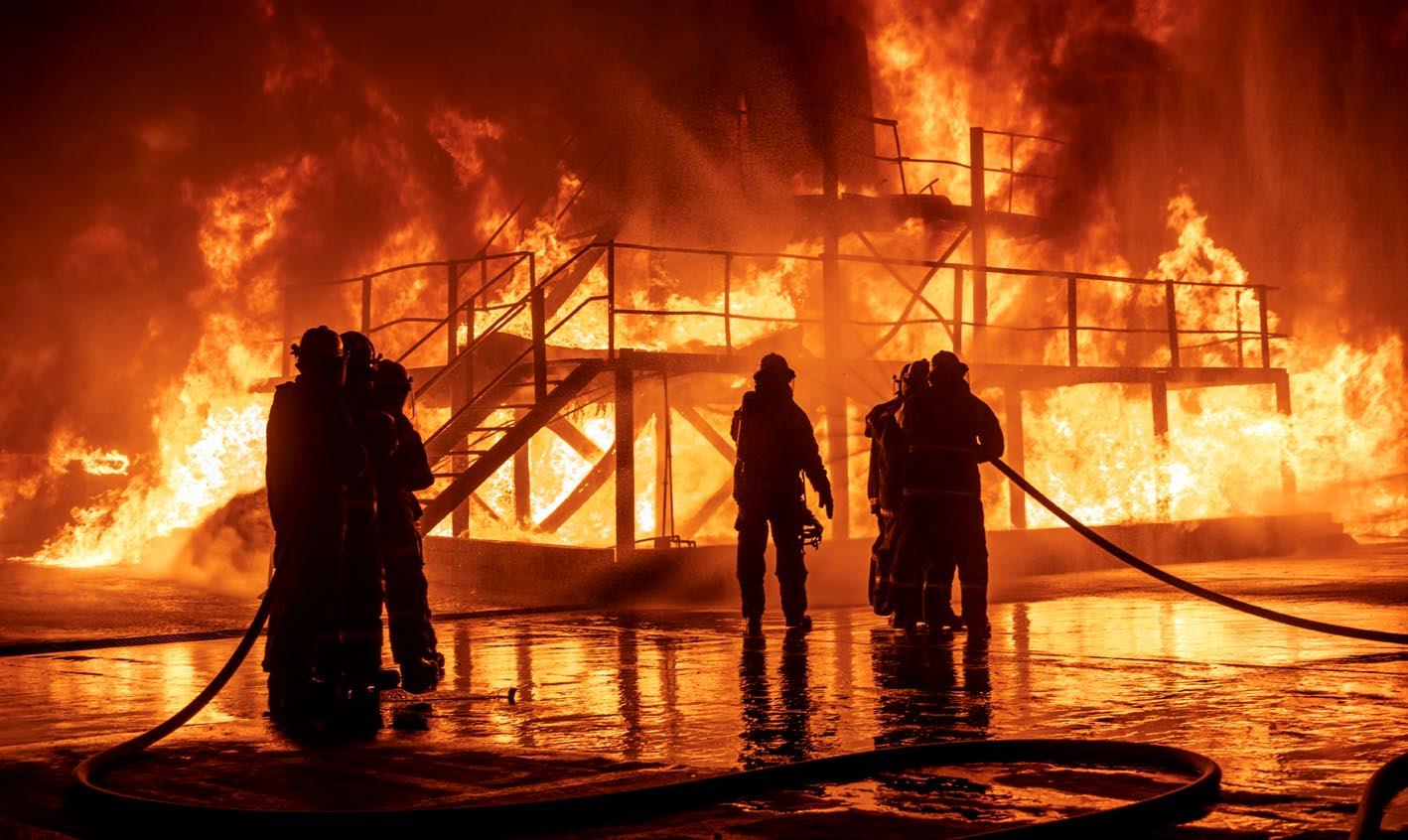
Lymae bunker suits: tailored protection
Vanguard's Lymae bunker suits are NFPA-compliant, offering customisation options to meet the unique needs of firefighters. From jumpsuits to specialised kitbags, each suit ensures maximum protection without compromising mobility or comfort.
Firefighting boots: Viking excellence
Viking fire boots, with models like the VW90 and VW91, offer NFPA 1971 certification and advanced features such as Kevlar lining, chainsaw protection and 18kV electric shock resistance. Known for reliability and innovation, Viking boots set the standard for safety and durability in firefighting footwear.
Invest in peace of mind with Vanguard Fire and Safety
Choosing Vanguard Fire and Safety isn't just about purchasing protective gear; it's an investment
in peace of mind. With a steadfast commitment to excellence and adherence to international standards like NFPA 1971, Vanguard ensures that firefighters are equipped with the highestquality protective equipment available. Trust Vanguard Fire and Safety to safeguard your tomorrow because when it comes to firefighting protection, excellence in safety is non-negotiable.
For more information or to explore Vanguard's extensive range of NFPA-certified firefighting gear, visit www.vanguardfire.co.za
or contact us at Tel: 031 564 3200 or Email info@vanguardafrica.co.za
Step into a safer future with Vanguard Fire and Safety.

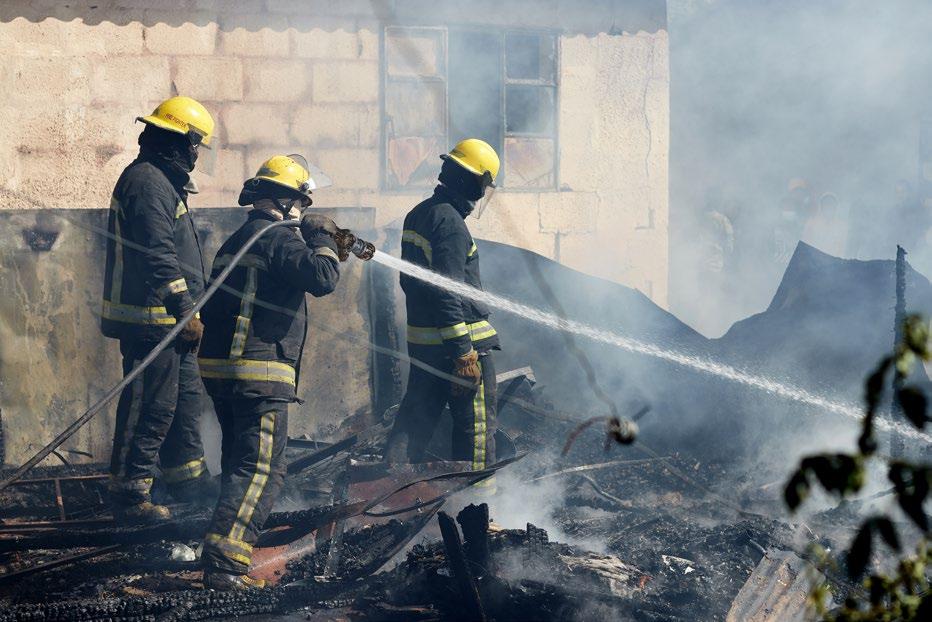
How to properly inspect firefighting gear for care and maintenance
By Nick Magoteaux, business development and military contract manager, Gear Wash, US
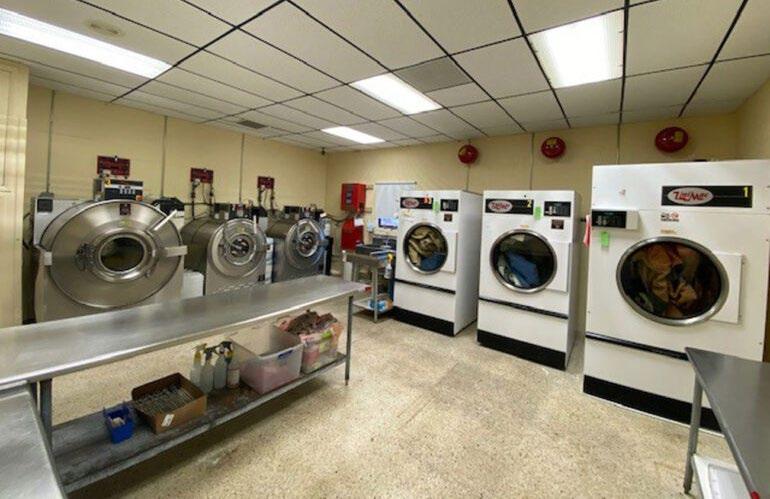
Fire departments can enlist the services of verified PPE care and maintenance providers to keep tabs on bunker gear to make sure it’s safe, effective and compliant
Gear preservation is an essential part of any firefighter’s job and Gear Wash, a subsidiary of Fire-Dex and the nation’s largest fully verified independent service provider (ISP) for personal protective equipment (PPE) care and maintenance, understands the importance of managing a high-quality programme of inspecting, cleaning and repairing firefighting gear, everything from turnouts to gloves, helmets, hoods and boots.
Gear care is an NFPA requirement In 2020, the National Fire Protection Association (NFPA) released changes to its 1851 standard governing the care and maintenance of firefighting gear. The updates include modifications to the minimum
requirements for gear inspections (once a year) and cleanings (twice yearly). Changes also emphasise the fire department’s responsibility to document all cleanings and to train personnel in protective garment care procedures. Additionally, the update specifies that cleaning processes used by ISPs be verified annually by independent laboratories for their effectiveness in cleansing garments of contaminates and carcinogens.
NFPA 1851 emphasises the critical need to protect the performance properties of firefighting gear. Exposure to heat, smoke and other harmful substances can break down materials used to make the gear or reduce barrier properties designed to keep the wearer safe. In addition, soiled gear
can provide less breathability, which can increase the risk of heat stress.
Inspection is the first step Gear Wash is verified to meet the highest standards for proper gear maintenance, from the initial wash to inspection and quality repairs. Associates take time to examine firefighting gear on a closer level to identify any structural or fabric problems that might compromise the quality of its performance, as well as signs of soiling and contamination that may pose a health risk. Gear is then cleaned, sanitized and decontaminated using specialized detergents and cleaning processes to remove harmful particulates and residues. If gear is damaged, associates may perform a series of repairs such as stitching, patches or reflective trim replacement.
Gear should be removed from active service and thoroughly cleaned anytime it has become soiled. Also, at a minimum, the NFPA recommends all issued gear be machine cleaned at least twice a year, once every six months. Cleaning can be performed by a manufacturer or verified ISP.
The following tips can help fire departments perform a thorough inspection of their gear and identify signs of damage that a verified ISP can help to remedy.
In all cases, the individual handling soiled gear should wear a pair of examination-grade gloves, an apron and a pair of safety glasses to protect against harmful substances potentially deposited on the gear.
How to inspect gloves
Begin by examining gloves for physical damage like rips, tears and cuts as well as thermal damage such as charring, burn holes, melting or discoloration of any layer. Gloves should also be examined for signs of shrinkage, a loss of elasticity or flexibility, a loss of seam integrity such as broken or missing stitches or for the presence of an inverted glove liner. Lastly, gloves should be tested for water integrity using a utility sink or other container of sufficient size.
Fill the sink with warm water, less than 105 degrees Fahrenheit or 40 degrees Celsius, put the gloves on and submerge them up to the wrist crease, making sure no water gets in over the top. Next, repeatedly open and close your hands for two minutes. Now remove the gloves from the water and remove the gloves from your hands; if any water has seeped through the gloves and onto your hands, the gloves have failed the water integrity test and should be thrown away. If no water has leaked through, the gloves can be hung up to dry and then returned to service or sent for cleaning as required.
How to inspect helmets
Begin by examining the shell of the helmet for evidence of physical damage like cracks, crazing, dents or abrasions. Also check for thermal damage to the shell, like bubbling, soft spots, warping or discoloration. Next,
examine the ear flaps for rips, tears and cuts as well as thermal damage like charring, burn holes or melting. Inspectors should also check for any damage or missing components of suspension/retention systems.
Moving on to the face shield and goggles system, inspectors should look for discoloration, crazing and scratches to the face shield and goggles (or anything that may limit visibility). Finally, be sure to check for any damaged or missing reflective trim and for a loss of seam integrity such as broken or missing stitches.
How to inspect turnout gear
When examining turnout gear, the outer shell, moisture barrier and thermal liner should be inspected for the following:
• Physical damage to all layers and sides of each layer such as rips, tears, cuts and abrasions
• Thermal damage indicated by charring, burn holes, melting or discoloration of any layer
• Any loss of seam integrity such as broken or missing stitches
as well as loose or missing moisture barrier seam tape
• Material physical integrity including UV or chemical degradation as evidenced by discoloration, significant changes in material texture, loss of material strength, loss of liner material or shifting of liner material
• Delamination as evidenced by separation of film from substrate fabric, flaking or powdering.
Finally, the moisture barrier should be tested using the hydrostatic test to evaluate the water penetration barrier. ISPs can perform this test using a moisture barrier tester. Fire departments may also invest in a portable tester that meets the NFPA 1851 standard. In all cases, the test should show no leakage and the result of each evaluation should be recorded.
How to inspect hoods
Hoods should also be inspected for signs of physical damage (rips, tears, cuts) and thermal distress (charring, burn holes, melting, discolouration). Next,

Gear Wash offers educational videos to departments interested in keeping current on proper firefighting PPE inspection and cleaning techniques

PPE care and maintenance facilities use specially formulated laundry detergents for the safe cleaning of turnout fabrics, reflective materials and hardware used with PPE. Soaking materials in EPA-registered laundry sanitisers also helps to keep PPE effective against a wide range of viruses and bacteria.
check for any loss of face opening adjustments while also looking for loss of seam integrity such as broken or missing stitches. Finally, if examining a particulate blocking hood, be sure to look for damage to the particulate blocking layer.
How to inspect boots
When inspecting boots, signs of physical damage will commonly include cuts, tears and punctures. Also check for thermal damage including exposed or deformed areas of the protective toe, protective midsole and shank. Next, look for a loss of water resistance by submerging boots in water similar to the steps described for inspecting fire gloves. Boots showing compromised water integrity should also be discarded immediately. Finally, check the boot closure system for component damage and functionality and look for a loss of seam integrity such as broken or missing stitches.
Know when to retire gear
Any gear showing obvious soiling or signs of distress should be relegated for cleaning and/ or repair. It is also important
to know when care and maintenance are not enough and it’s time to retire gear. NFPA guidelines require turnout gear to be retired 10 years from the date of manufacture. However, oftentimes turnout gear needs to be replaced before the 10year mark. Once the protective properties of the gear have diminished, it is no longer safe to use. Bunker gear needs to be retired before the 10-year mark for reasons including:
• Contamination from an incident that makes it either unsafe to handle or unable to be effectively cleaned and returned to service
• Exposure to extreme fireground temperatures, resulting in significant damage to protective properties
• The gear has been worn down or is beyond repair
• The gear is no longer compliant with NFPA standards
• Maintenance costs have exceeded the remaining useful life of the gear.
Many other circumstances can make gear ineffective, so it’s crucial to have it serviced by a certified ISP for advanced cleaning and inspection.
Additionally, an ISP can offer the best recommendations on repairs and when to retire gear.
Keep gear clean
Strictly adhering to NFPA 1851 guidelines can be the difference between effective and ineffective PPE and extending the life of your gear. Follow the gear manufacturer’s recommendations and regularly clean firefighting gear. Laundering gear through verified ISPs helps to maximize the effectiveness of the advanced fabric and ensures the gear will be protected while reducing the risk of secondary exposure to toxins and carcinogens. Many ISPs also provide repair and alteration services as well as make rental gear available for departments in temporary need.
While turnouts aren’t in use or being repaired or laundered, departments should take time to carefully inspect and safely store their gear, helping to ensure a long life of safe firefighting ahead.
Nick Magoteaux has served in several roles within public safety during his 20-year career. He is currently the Business Development and Military Contract manager for Gear Wash. Magoteaux is an advocate for firefighter health and safety on a local and national level. He serves on the board of directors for the Tri-State FACE Team, the Carney Strong Initiative and is the co-founder of the Firefighter Health and Wellness Conference. Magoteaux has his Associates of Fire Science from Columbia Southern University.
Visit www.gearwash.com for more information and NFPA 1851 guidance.
Understanding fire safety and protection engineered decisions/ rational fire designs in South Africa: A statutory perspective
By Karel Roodt, managing director, The Fire Engineer

In South Africa, the term “Fire safety and protection engineered decision” or “Rational fire design” often sparks debate within the fire protection industry. This controversy centres around the qualifications and authority of professionals who design and sign off on fire protection systems, particularly regarding their registration with the Engineering Council of South Africa (ECSA).
The legal framework: National Building Regulations
South Africa’s fire safety requirements are governed by the National Building Regulations and Building Standards Act (NBR), particularly the prescriptive deemed-to-satisfy rules in SANS 10400: Part T, which addresses fire protection. This code provides prescriptive measures that buildings must adhere to for
ensuring minimum fire safety. However, the NBR section AZ4 also allows for alternative, performance-based approaches through rational fire design.
Fire engineer Pr Eng and Pr Tech Eng vs fire protection consultant/contractor
Fire engineers
A fire engineer registered with ECSA has the legal authority to
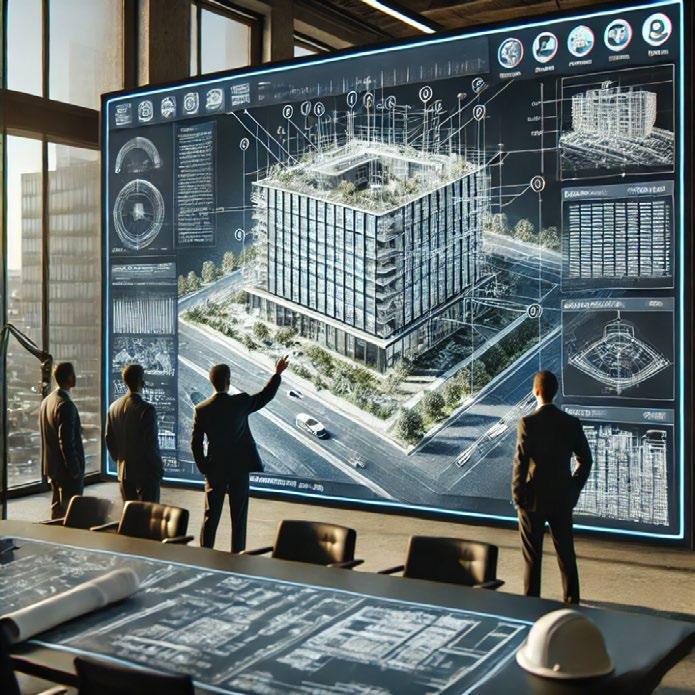

deviate from prescriptive codes, provided they can demonstrate that their alternative design (rational design) meets or exceeds the safety standards set by the NBR. This process involves rigorous engineering analysis, simulations and a thorough understanding of fire dynamics and human behaviour in emergencies. Fire engineers are qualified to use their professional judgment to develop

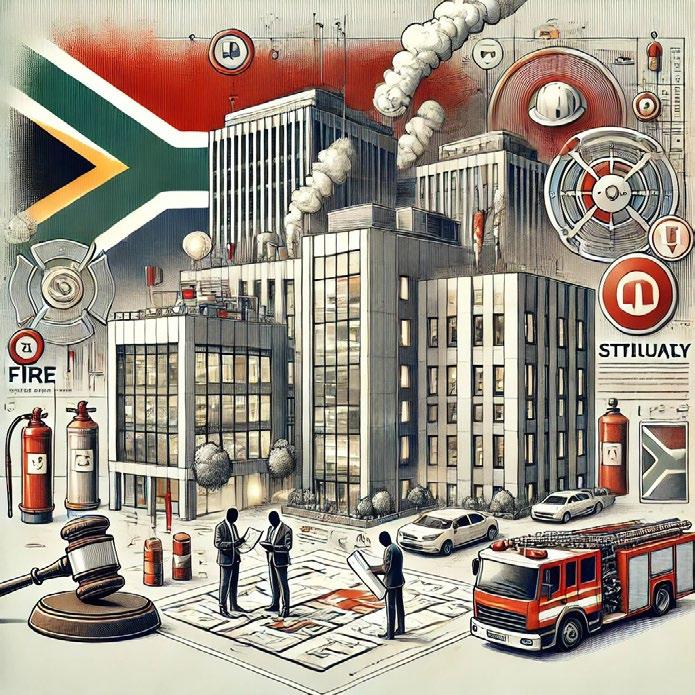
custom solutions that address unique challenges posed by a building’s design or intended use.
Fire protection consultants/ contractors not registered with ECSA
On the other hand, fire protection consultants and contractors who are not registered with ECSA are limited in their scope of practice. While they can design and implement fire
protection systems, their work must adhere strictly to the prescriptive requirements of the NBR. They are not permitted to deviate from these codes or to sign off on rational designs. Any design requiring deviation from the standard codes must be reviewed and approved by a registered fire engineer.
The contested discussion
The debate arises because
some in the fire protection system industry believe that fire systems can be competently designed and signed off by individuals without ECSA registration, relying on their experience and industry knowledge. However, South African law is clear that only those registered with ECSA have the legal authority to make engineered decisions that deviate from prescriptive codes and sign off. This distinction is crucial for ensuring that fire safety designs are rigorously evaluated and that public safety is not compromised.
Conclusion
In summary, while fire protection consultants and contractors play an important role in the industry, the authority to deviate from prescriptive fire safety codes and to implement rational fire designs, lies solely with registered fire engineers. This legal requirement ensures that fire safety solutions are designed and implemented by professionals with the necessary expertise and accountability, ultimately safeguarding both property and lives.
Professionals in the fire protection industry must be aware of these legal distinctions to ensure compliance with South African building regulations and to uphold the highest standards of fire safety.
References: National Building Regulations and Standard Act No. 103 of 1977; SANS-10400-TFire Protection 2024.
Karel Roodt may be contacted on Email: karel.roodt@thefireengineer.co.za



JOIFF Guideline on emergency response to incidents involving vehicles powered by alternative fuels, including hybrid vehicles (Section3)

Section 6. Hydrogen powered vehicles
6.1
Hydrogen
Hydrogen is a colourless, odourless and tasteless gas that is 14 times lighter than air, with a flammable range of four percent to 74 percent concentration in air and an auto ignition temperature of 585 degrees Celsius (1 085°F). It cannot be odourised.
Gray Hydrogen is made using fossil fuels like oil and coal, which emit CO2 into the air as they combust.
JOIFF, the International Organisation for Industrial Emergency Services Management, through their shared learning committee, compiled this Guideline to assist emergency services in responding to incidents involving vehicles powered by alternative fuels including hybrid vehicles. JOIFF gave special permission to Fire and Rescue International to publish the Guideline in order to assist our emergency services in dealing with the challenges they face during these incidents.
Due to the length of the Guideline, it will be published in three sections, this being the third and final section of the guideline.
A cleaner version is ‘blue’ Hydrogen, which is produced from natural gas and for which the carbon emissions are captured and stored or reused. The cleanest of all is ‘green’ Hydrogen, which is generated by renewable energy sources such as wind, solar or hydro without producing carbon emissions.
If the electricity comes from renewable sources, then the only carbon emissions are from those embodied in the generation infrastructure.
6.2 Hydrogen powered vehicles
While Hydrogen powered vehicles themselves do not generate any gasses that
contribute to global warming, the process of making Hydrogen requires energy, often from fossil fuel sources.
Hydrogen powered vehicles can be divided into two types, Hydrogen to power an internal combustion engine and Fuel Cell Vehicles (FCV) or Fuel Cell Electric Vehicles (FCEV). The chemical energy of Hydrogen is converted by the power plants of such vehicles to mechanical energy by burning Hydrogen in an internal combustion engine or, more commonly, by reacting Hydrogen with oxygen in a fuel cell to run electric motors. Hydrogen fuel cell vehicles utilise the same type of high voltage electrical systems found in hybrid and electric vehicles.
There are no moving parts in the fuel cell, so vehicles powered by Hydrogen are more efficient and reliable than a conventional combustion engine.
The battery packs of Hydrogen powered electric vehicles are smaller and lighter than those of fully electrically powered vehicles and re-charging a Hydrogen vehicle is much quicker than re-charging the batteries of a fully electric vehicle. This makes it very
The International Organisation for Industrial Emergency Services Management
JOIFF Guideline on Emergency Response to incidents involving vehicles powered by Alternative Fuels (including Hybrid vehicles)

suitable for use in public transport and vehicles in businesses that cannot afford vehicle downtime.
6.3 Hydrogen cylinders/tanks
Hydrogen cylinders in vehicles are typically found underneath a car and on the roof of busses.
Hydrogen automotive cylinders/ tanks can be pressurised from 350 Bar to 700 Bar depending on tank classification - Type iii or Type iv.
These high pressures, when venting or discharging, present significant safety hazards.
Hydrogen is a highly explosive gas so Hydrogen cylinders/tanks in vehicles need to be strong to remain “safe” in the event of a crash, fire or other incident.
Hydrogen cylinders are equipped with temperature activated pressure relief vents. If these vents are activated, they will empty the cylinder over the course of several minutes depending on
the capacity of the cylinder and how much gas is contained.
On Hydrogen powered cars, these vents are generally directed horizontally to the aft and/or side and on busses and trucks, they are generally vented upwards.
As pressure relief vents on Hydrogen powered vehicles may be in different directions, as a priority, those attending an incident should check the available vehicle information.
6.4 Extinguishment considerations
Responders dealing with a fire in a Hydrogen powered vehicle should wear full appropriate personal protective equipment (PPE) including fully charged breathing apparatus.
Hydrogen fires should not be extinguished unless the flow of gas can be stopped. Hydrogen fires produce almost no radiant heat and no smoke, making it almost impossible to sense
the presence of a fire unless in close proximity. At night, the flame is visible to the naked eye. Hydrogen burning with other carbon-based flames will likely give colour to the Hydrogen flame.
Thermal imaging cameras should be used when dealing with a Hydrogen emergency in order to determine the presence of fire.
In the event there is flame or heat impingement on a composite cylinder, it should not be cooled as this may cool the temperature activated pressure relief device and prevent it from functioning, which can result in a catastrophic cylinder failure. Allow the pressure relief device to function as designed and vent the Hydrogen.
High voltage electrical cells and components should be handled in the same manner as they are in an electric vehicle; see Section 5 of this Guideline.
Section 7. Gaseous fuel vehicles
7.1 Introduction
Compressed Natural Gas is mainly composed of methane (CH4), to less than one percent of the volume it occupies at standard atmospheric pressure. It is stored and distributed in containers, usually in cylindrical or spherical shapes, at a pressure of 20 to 25MPa (2 900 to 3 600psi).
Compressed Natural Gas (CNG), Liquefied Natural Gas (LNG) and Liquefied Propane Gas (LPG) are the three primary gaseous fuels used to power an internal combustion engine.
CNG is used in traditional gasoline internal combustion engine vehicles that have been modified or in vehicles specifically manufactured for CNG use, either alone with a segregated gasoline system to extend the range (dual fuel) or in conjunction with another fuel such as diesel (bi-fuel).
Although boiloff gas from LNG is heavier than air, compressed LNG is lighter than air. LNG when released will remain at a low level until it gets warmer and then it will rise.
LPG, propane or butane, is liquefied by pressurisation at 14MPa (200psi) and is stored at approximately 16,5MPa (240psi). Propane vapours are approximately 1½ times heavier than air and will settle into low lying areas when released. Its flammable range is approximately two percent to 10 percent in air.
Gas detection metres should be used to detect the presence of leaking gas.
7.2 Cylinder/tank location
Natural gas is stored on a vehicle in one of two ways, either compressed (CNG) or liquefied (LNG). The storage method plays a critical factor in its behaviour and how it is handled in an emergency.
7.2.1
Compressed Natural Gas (CNG)
cylinders/tanks
The mounting location of the cylinders/tanks varies with the type of vehicle. In passenger cars they may be located in the boot (trunk) or where the petrol (or diesel) tank would normally be located. In medium and heavy-duty vehicles, they may be mounted underneath or directly behind the cab, arranged horizontally or vertically or in a location similar to a diesel tank. On busses and other heavy vehicles, they may be on the roof.
7.2.2
Liquid Natural Gas (LNG) cylinders/tanks
Liquid Natural Gas (LNG) is stored at temperature down to – 163 degrees Celsius. LNG tanks are double walled, cold insulated and have pressure relief safety devices and emergency release connectors.
LNG is typically used on medium and heavy-duty vehicles and the tanks are most commonly found attached to the frame rails. However, in some instances they may be located behind the cab.
7.2.3 Liquid Petroleum Gas (LPG) cylinders/tanks
In passenger vehicles, the Liquid Petroleum Gas (LPG) cylinder/ tank is usually located in the boot (trunk) or where the petrol (or diesel) tank is usually located. In vans or trucks, they may be underneath or in between or outside the chassis rails.
In medium or heavy-duty vehicle applications, they may be located along the inside or outside of the frame rail. Due to the heavier than air nature of propane, cylinders/tanks will probably not be found mounted on the roof.
7.3 Fuel leaks in gaseous fuel vehicles
It is recommended that a combustible gas meter is used to monitor for all potential fuel leaks at a crash/extrication scene involving a gaseous fuel.
LNG leaks like a liquid and on evaporation, expands up to 600 times in volume. Leaking LNG is lighter than air and shows as a condense/steam/hot cooling water leak. There is a vent pipe for the LNG pressure relief vent and a boiloff gas pressure relief vent from the pressure built-up unit.
A small leak (dripping) of liquid phase LNG will fall onto the ground and evaporate; therefore there is no hissing of escaping gas. Some LNG tanks operate at higher pressures where a leak on liquid phase could force LNG from the tank. Here a pressurised liquid release maybe audible, depending on the size of the leak. If LNG is released from the pressure relief valve in the gas phase of the tank or associated vapour lines, then the pressure, around 16 bar, will be audible.
The flow of gas from the cylinder/tank is shut down when the vehicle ignition is turned off through the use of a low voltage solenoid. Manual shut offs may also be present to shut off the flow of gas.
7.4 Extinguishment considerations
7.4.1 General
Responders dealing with a fire in a gaseous fuel vehicle should wear full appropriate personal protective equipment (PPE) including fully charged breathing apparatus Use standard tactics and techniques. Do not attempt to extinguish a fire fuelled by an active gas leak unless the flow of the gas can be shut down. Let it burn and protect exposures and surrounding materials until the fuel supply is exhausted.
Be aware that fire exposure may not always be apparent and if the cylinders are already involved, do not approach the vehicle. Establish a safe perimeter of at least 25 to 30 metres (80 to 100 feet) and allow it to burn while protecting any exposures.
If the fire is small and remote enough from the cylinder/tank location that there is no potential for flame or heat impingement, tactics associated with fire in conventional petrol/diesel vehicles may be used.
If the vehicle is powered by a high voltage battery that catches fire it will probably require a large, sustained volume of water. Dealing with fires in high voltage batteries is discussed in Section 5 of this Guideline.
7.4.2 Vehicles powered by Compressed Natural Gas (CNG) Compressed Natural Gas (CNG) cylinders are equipped with a temperature activated pressure relief device. In the event there is flame or heat impingement on a composite cylinder the cylinder should not be cooled as this may cool the pressure relief device and prevent it from functioning which can result in a catastrophic cylinder
failure. Allow the pressure relief devices to function as designed to vent the CNG. Contrary to venting of gas from Hydrogen vehicles, CNG vehicles can vent in any direction.
7.4.3 Vehicles powered by Liquid Natural Gas (LNG)
Every effort should be made not to allow the safety valves on an Liquid Natural Gas (LNG) tank or LNG safety devices to become wet as the extremely low temperature of LNG releases will freeze the pressure relief vents.”
Typically, the tanks are so well insulated that even if the vehicle becomes fully involved, there will be truly little pressure increase inside the tank. If there is an increase, the pressure relief valve should activate and bleed off the excess pressure, resetting itself when complete.
These highly temperature insulated tanks are made of cold-resistant steel and if the insulation of the tank has been compromised, which can sometimes be visible as a frozen spot on the outer wall of the tank, the pressure in the LNG tank may rise very quickly and a Boiling Liquid Expanding Vapour Explosion (BLEVE) may occur.
7.4.4 Vehicles powered by Liquid Petroleum Gas (LPG)
In the event of fire impingement on the tanks, apply copious amounts of water to keep them cool and reduce the risk of a BLEVE. This may occur if the temperature activated pressure relief device is unable to maintain a safe pressure. If a sufficient water supply is not available, evacuate to a safe distance and allow the fire to burn.
7.5 Overhaul (post fire/incident) operations:
Responders dealing with overhaul should wear full appropriate Personal Protective Equipment (PPE) including fully charged breathing apparatus due to the dangers of re-ignition and/or release of gasses and particles that contain toxins and carcinogens during the overhaul process.
Always treat cylinders and tanks as pressurised, even if the pressure relief devices have activated.
Gaseous fuel vehicles should be inspected to make sure the fuel system is intact and not leaking prior to removal and storage. All cylinders and tanks involved in an accident or fire must be inspected, defueled and removed from service by trained personnel.
It may be advisable to contact the manufacturer’s representative for assistance in the final disposition and storage of the vehicle.
Section 8. Training, insurance and media
8.1 Training
Emergency responders should be trained in dealing with response to incidents involving vehicles powered by alternative fuels, using relevant PPE and the necessary tools for mitigating such incidents.
Training should be based on Standard Operating Procedures (SOPs)/Standard Operating Guidelines (SOGs), which have been developed for dealing with such incidents in the Area Emergency Response Plan. The training programme,
including refresher training, should be implemented at regular intervals to continually demonstrate competence.
8.2 Insurance and media
Some of the actions that may be necessary in dealing with incidents involving vehicles using alternative fuels could have serious insurance implications for example submerging a vehicle in
Section
9 Appendix 1.
water, environmental damage, recycling issues, break-down services requirements etc. It may be considered advisable to engage with your Insurers on these matters prior to agreeing Standard Operating Procedures (SOPs)/Standard Operating Guidelines (SOGs).
Incidents involving vehicles using alternative fuels, particularly major incidents, will inevitably
Useful Sources of Information
attract media attention. To allow the media to understand and accurately report on what is happening, it may be considered advisable to engage with the media prior to any incident to explain the hazards and risks associated with such incidents and the Standard Operating Procedures (SOPs)/Standard Operating Guidelines (SOGs) that will be followed in dealing with such incidents.
CTIF The International Association for Fire and Rescue Services (CTIF) https://www.ctif.org/
CTIF Rescue Sheets and Emergency Response Guides include:
https://www.ctif.org/news/euro-rescue-app-now-available-download-huge-breakthrough-extrication-allfirst-responders
https://www.ctif.org/sites/default/files/news_files/2020-06/RESCUE%20SHEET%20HOW%20TO%20 USE%20IT.pdf
https://www.ctif.org/index.php/commissions-and-groups/ctif-iso-17840 https://etsc.eu/wp-content/uploads/5.-TOM-VAN-ESBROECK-RESCUE-SHEETS.pdf
Euro Rescue App https://www.ctif.org/index.php/commissions-and-groups/ctif-iso-17840/news
Euro NCAP (New Car Assessment Programme): https://www.youtube.com/watch?v=jOvn4PTLAJ0
European Union Directive 2014/94/EU of the European Parliament and of the Council of 22 October 2014 on the deployment of alternative fuels infrastructure
National Operational Guidance (UK) Hazard Alternative Vehicle Fuels
NFPA Alternative Fuel vehicles Safety Training Program Emergency Field Guide
NFPA Research Foundation “Best Practices for Emergency Response to Incidents Involving Electric Vehicles Battery Hazards: A Report on Full-Scale Testing Results.” https://www.nfpa.org/-/media/Files/ News-and-Research/Fire-statistics-and-reports/Electrical/EV-BatteriesPart-1.ashx
NFPA Research Foundation Sprinkler Protection Guidance for Lithium-Ion Based Energy Storage Systems Final Report June 2019.
Section 10 Appendix 2: ISO 17840
ISO 17840 is an International Standard that was developed to give easily accessible information to firefighters who deal with incidents involving vehicles. Whilst some vehicles may have similar features, not all are the same and this standard, which is supported by vehicle manufacturers, aims to make available International standardised rescue sheets for every vehicle, to identify eg where the batteries are, where the airbags are, where the disconnecting devices are etc.
ISO 17840 is in 4 parts and includes a system of identification for exterior marking of fuel types for busses and other heavy vehicles, including new propulsion types like electric vehicles, hybrids and various types of compressed or liquid natural gas propulsion.
ISO 17840 Series:
Road vehicles Information for first and second responders
ISO 17840 PART 1
Rescue Sheet for passenger and light commercial vehicles
ISO 17840 PART 2
Road vehicles — Information for first and second responders — Rescue sheet for busses, coaches and heavy commercial vehicles
ISO 17840 PART 3
Road vehicles — Information for first and second responders — Emergency response guide template
ISO 17840 PART 4
Road vehicles — Information for first and second responders — Propulsion energy identification
ISO 17840 has established standard colours for the propulsion used in a vehicle.
• Grey is for Diesel
• Red is for Gasoline
• Green is for Gas
• White is for Cryogen LNG
• Blue is for Hydrogen
• Orange is for high Voltage

The International Organisation for Industrial Emergency Services Management
About JOIFF
JOIFF is a not-for-profit organisation dedicated to developing the knowledge, skills, understanding and competence of emergency services personnel, primarily in high hazard industry, with the aim of improving standards of safety and of the working environment in which they operate.
JOIFF’s prime activity is Shared Learning to drive inherent safety, continuous risk reduction and safe management of residual risk.
Visit the JOIFF web site for information on membership: www.joiff.com or watch their introductory video: https://www.youtube.com/watch?v=lkzpYzrSHf4
JOIFF Guideline on Emergency Response to incidents involving vehicles powered by
Secretariat: Fulcrum Consultants, PO Box 10346, Dublin D14 NY27, Ireland. Tel: + 353 87 242 9675 Email: joiff@fulcrum-consultants.com
The life of a legend of the Emergency Services Department, Deputy Chief Molelekwa Peter Motolla
By Company Commander Lindsay Z Mnguni, City of Tshwane Emergency Services
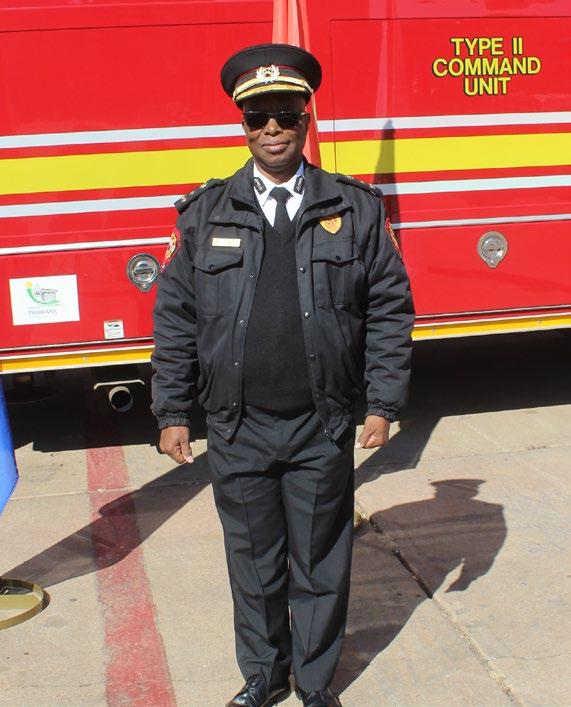
City of Tshwane Emergency Services Department’s Deputy Chief Molelekwa
Peter Motolla recently retired
Deputy Chief Molelekwa
Peter Motolla has recently gone on retirement and the City of Tshwane Emergency Services Department held a prestigious farewell function for him at Central Emergency Services Station in Bosman Street, Pretoria in South Africa.
It was a great and momentous occasion, with a grand parade by our colleagues from the department.
Senior managers and a considerable number of staff attended the function on the day, all of them wishing to say goodbye to the legend they love.

He was interviewed by the Company Commander Lindsay Z Mnguni, standing in as City of Tshwane Emergency Services’ public information and liaison officer with the aim of finding out more about the man who has served the community of Tshwane and the rest of the nation for over 40 years with dignity, pride and honour.
Although he has a dignified aura about him as befitting a fire chief, he is also very humble and has a twinkle in his eye, especially when he starts speaking about fire engines and firefighters.
This is testimony of how truly he loved his job.
The conversation went as follows:
CC Mnguni
Good morning, Deputy Chief Molelekwa Peter Motola, sir and welcome to the City of Tshwane Emergency Services Department once again. Thank you for coming to visit us as we would like to interview you about your career and your ultimate retirement after such long service. Can you please tell us about your upbringing? Where were you raised and what kinds of things did you enjoy as a youngster? Tell us your age, where you were born and your qualifications, education and training. Tell us briefly about your family, siblings, etc.
Company Commander Lindsay Z Mnguni interviewed Deputy Chief Motolla
City of Tshwane Emergency Services Department held a prestigious farewell function for Deputy Chief Motolla at Central Emergency Services Station in Bosman Street, Pretoria
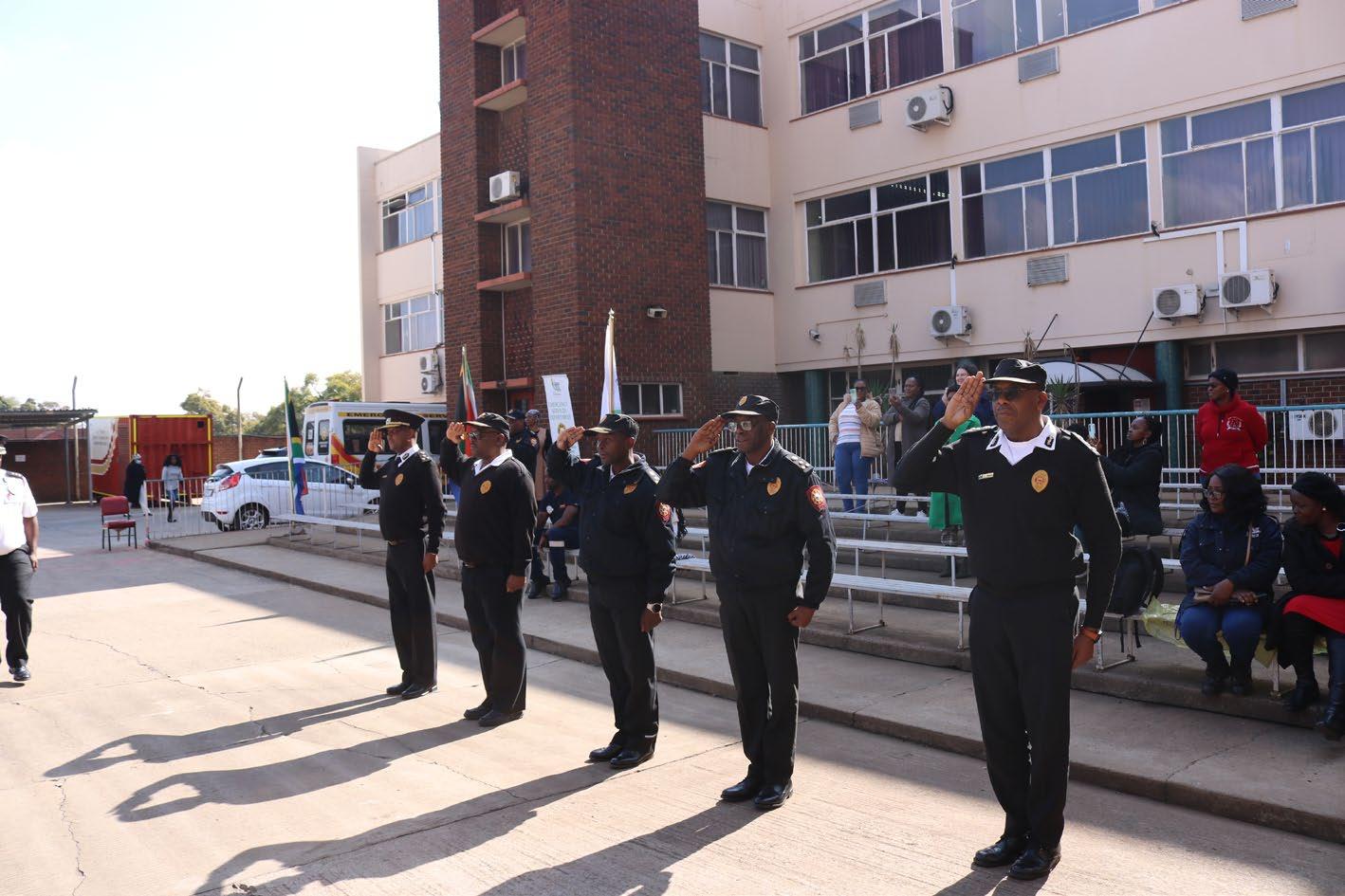
Deputy Chief Motolla
Good morning, CC Mnguni and thank you for having me. Thank you to the department for granting this opportunity to be interviewed, sir. I am the second of three siblings, born in Mamelodi on 26 June 1959 and I grew up there as a young person.
CC Mnguni
How did you progress as a firefighter or emergency official, from the time you started as a trainee firefighter until your retirement? Please share your success story as you rose up the ranks, sir.
Deputy Chief Motolla
I matriculated in 1979 and I joined the Pretoria Fire Department in 1982. The fire department then was sadly still for whites only and I was therefore hired at the Ambulance
Service Subsection, although my heart and passion were with the fire department. I never gave up, but I said I will also become a firefighter one day.
I became committed to my work and after six months I was promoted as a Senior Ambulance Personnel Member. Within two years I was again promoted to Leading Emergency Official within the same service. I later became a Shift Leader and in 1988 I was the first person to qualify as a Critical Care Assistant. This acquisition of this scarce skill led to me being moved to the Training Centre to train other colleagues.
This was where I was promoted to be a Company Commander, my first rank as an officer, in 1995. I was then asked to establish the Ambulance Training
Centre which taught in Afrikaans, as opposed to Johannesburg Training Centre which offered their training in English. In 1997, I was appointed as a District Commander at the Emergency Medical Operations. At that time, I had completed the Officers Methodology Course under the leadership of Assistant Chief Johann van der Sandt who was my lecturer. I could command a drill squad in Afrikaans as an officer, but that was a long time ago. Unfortunately, now I can only remember one drill command, which is “Af marseer!”.
I never gave up my dream to become a firefighter, therefore I pursued my studies at the then Pretoria Technikon until I obtained my BTech Degree in Fire Technology in 2001, being the second person to do so after the late Assistant Chief Andrew
Morwale. I believed in education as a method of empowering myself and my colleagues. I then became an assistant chief but first I had to do my practical work at Wonderboom Fire Station as a firefighter.
This is where I realised my dream as I was responding to incidents on the famous “Letaba”, a custom-built Ford fire engine with an open compartment at the back for the crew. This was one of the highlights of my life. I was working under the mentorship of Mr Barend van Dyk then. Afterwards, I came back to Central Fire Station where I was asked to act as the chief fire officer as we were undergoing transformation as the City of Tshwane Emergency Services Department. I had four deputy chief fire officers under my command, two blacks and two whites. When the position of chief fire officer was advertised, I was not appointed but I thank God for that because it was a contractual appointment of five years. Perhaps I would have left the fire department a long time ago had I been appointed in that position.
CC Mnguni
What was your first job? Were you always a firefighter and what attracted you to emergency services? How were your days in the City of Tshwane Emergency Services Department? Did you enjoy being an employee of the City of Tshwane?
Deputy Chief Motolla
This was my first job and I would do it all over again if given the opportunity. As a young boy I used to watch the fire engines and the firefighters and this inspired me a lot to also become a firefighter one day. Of course,
I enjoyed my employment in the City of Tshwane and, as a firefighter, I had the best time of my life.
CC Mnguni
What motivates you and drives your passion to live your life the way you do? You seem to be a very motivated person, sir. Who can you say was your role model in life in general and at work and why?
Deputy Chief Motolla
Firstly, I trust in God and believe in His grace. Secondly, I was inspired by my mother who never gave up in life. She always worked hard and made sure that we had clothes on our back and food on the table. She made us understand the value of life. Thirdly, I was inspired by my boss, Steve Combrink. I watched his style of management and it gave me great inspiration. He always listened with intention and a good understanding.
Lastly, I was inspired by the current Chief of Emergency Services, Mr Moshema Mosia, whom when I first met him, sometime in the 1990s in Germiston, had the rank of an officer with two epaulets on each shoulder. He was the first black fire officer that I had met in my life and that motivated me to achieve great things in life, just like him.
CC Mnguni
Once again thank you, Chief. You are a role model to many of us and who we have watched over the years as you went about doing your job. How would you recommend being a firefighter, especially being an employee working for the City of Tshwane Emergency Services Department? Any words of
advice to the current firefighters and other employees about how they can last for so long as you did in the service?
Deputy Chief Motolla
I want to say to the people out there who would like to join the fire department that this is a lovely career. There may be challenges but this is a happy place if you have a passion for what you do.
We have a functional structure with clear roles and responsibilities. We operate with discipline, honour and dedication. In the past we had extramural activities, such as sport and athletics. We played volleyball and soccer to keep fit. Our soccer team was called Fire United FC. We would run in the morning before parade and we played darts and snooker to keep the morale and camaraderie up among ourselves. We even participated in the World Firefighter Games. This kept us going.
Deputy Chief Motolla
On behalf of the Emergency Services Department, I would like to say thank you Chief and may God bless you. Now you have more time to enjoy with your loved ones.
As we were almost finished with our interview in the backyard, the ladder drove in and created a rumbling noise which made it difficult to continue with the last part of our conversation. Otherwise, it was clear that I would have continued and listened to the Chief’s memorable and lovely journey as a firefighter. He is now a legendary firefighter and a legendary fire officer.

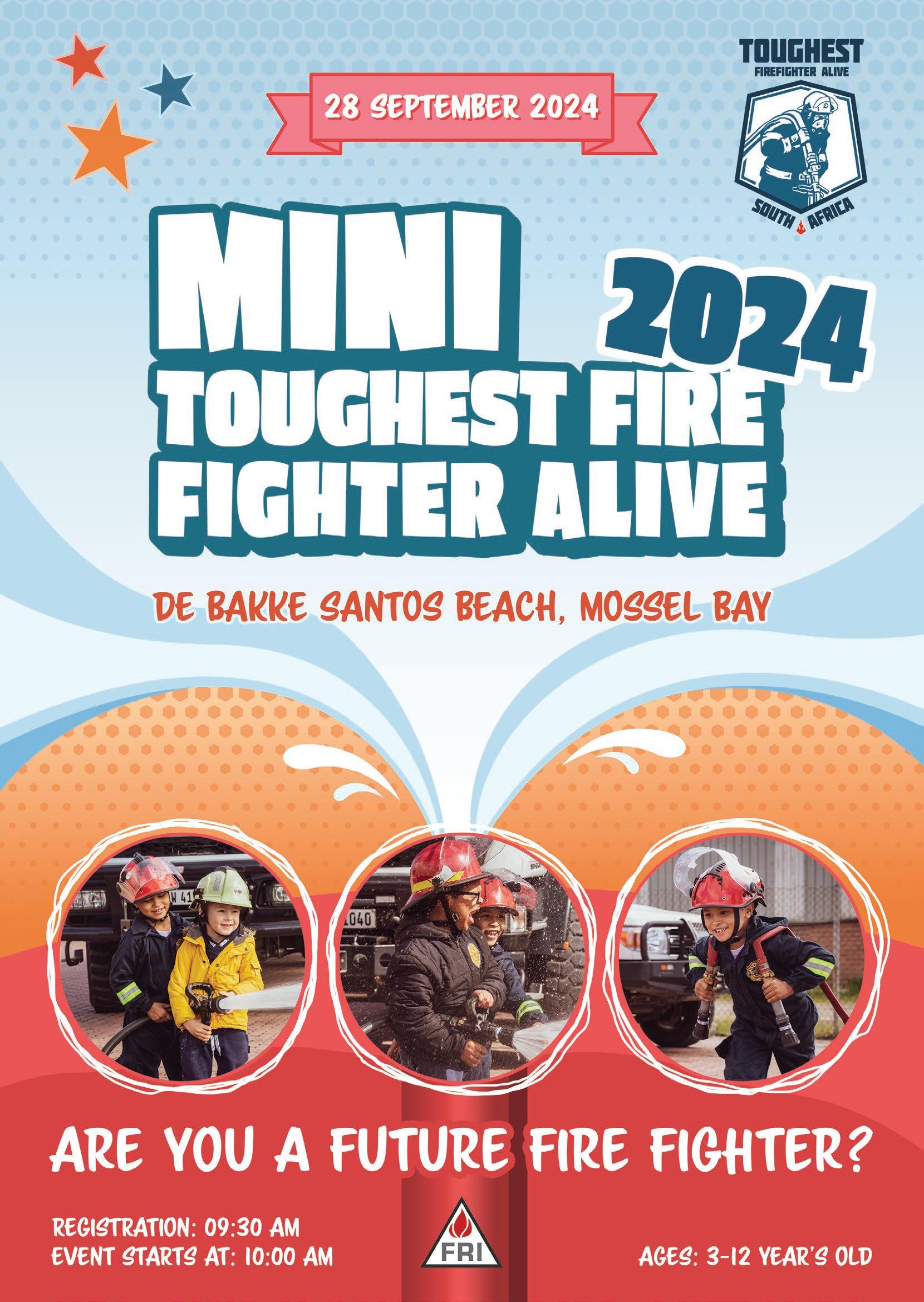
Canines within the USAR environment
By Morné Mommsen
Urban search and rescue (USAR) K9 units and K9 mantrailing/tracking units serve different roles and environments.
USAR K9s specialise in urban and disaster settings, using air scent detection to locate any human scent in complex, hazardous environments. They are trained for agility and navigating debris, providing quick coverage of large areas.
In contrast, K9 mantrailing/ tracking units focus on following the specific scent trail of an individual based on a scent article, using scent discrimination and ground scent tracking across various terrains. These units are often deployed in wilderness search and rescue, criminal investigations and missing person cases.
The primary differences lie in their scent focus, operational environments, training techniques and alert methods.
Primary focus
Search and rescue in urban and disaster environments: USAR K9s are trained to operate in complex, often hazardous environments like collapsed buildings, debris fields and other disaster-stricken areas.
USAR K9s specialise in urban and disaster settings, using air scent detection to locate any human scent in complex, hazardous environments
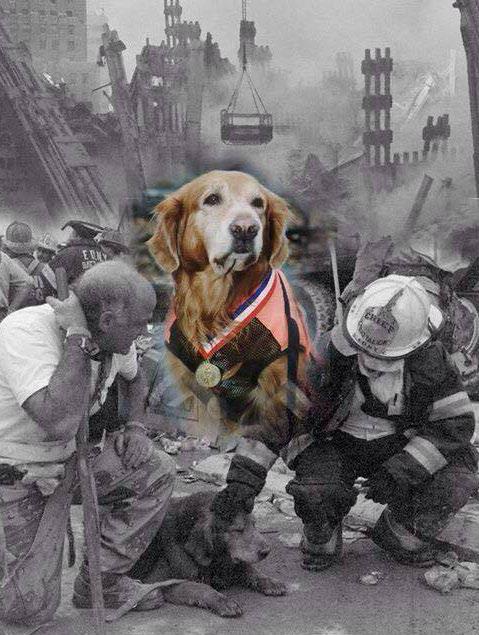
Training and skills
• Air scent detection: USAR K9s primarily use air scenting to locate any human scent in their vicinity, without needing a specific scent article. They are trained to detect human scent particles in the air, which is useful in open or confined spaces filled with rubble.
• Agility and navigation: These dogs are skilled at navigating unstable and hazardous terrains. They can climb over debris, enter confined spaces and move through obstacles safely.
• Bark alert: When they find a person, they typically indicate the discovery by barking, which alerts their handler and the rest of the rescue team. The K9s are specifically trained to react to “live” scent and to ignore human remain or the deceased. That is why we don’t
make use of a multi-skilled trained canine. Either trained in live scent or trained in HRD but not both disciplines.
Operational environment
Disaster sites: USAR K9s are deployed in environments affected by natural disasters such as earthquakes and hurricanes or man-made disasters such as building collapses and explosions. Quick coverage: They are used to quickly cover large, complex areas to locate survivors who might be trapped or buried.
K9 mantrailing/tracking
Primary focus: Following a specific human scent trail: Mantrailing and tracking K9s are trained to follow the scent trail of a specific individual based on a scent article eg a piece of clothing.
Training and skills
• Scent Discrimination: These dogs are highly skilled in scent discrimination, allowing them to focus on the unique scent of the individual they are tracking, ignoring other scents.
• Ground Scent Tracking: Mantrailing and tracking K9s often follow ground scent, which includes skin cells, sweat, and other microscopic particles left by the person on the ground and vegetation.
• Trailing Behaviour: They may follow a trail that has aged, depending on the conditions and can often distinguish the scent of a specific person even in crowded or heavily trafficked areas.
Operational environment
• Various terrain: They can work in diverse environments, including urban areas, forests, rural regions and any location where a person might travel.
• Long-distance tracking: These dogs are used for tracking over potentially long distances and periods, such as in search of missing persons, fugitives or lost hikers.
Key differences
• Scent focus:
• USAR K9s: Use air scenting to locate any human scent in disaster environments.
• Mantrailing/tracking
K9s: Follow a specific individual’s scent trail based on a scent article.
• Operational environments
• USAR K9s: Operate mainly in disaster and urban search and rescue scenarios, often involving hazardous and unstable environments.
• Mantrailing/tracking
K9s: Work in a variety of
environments and are often used in wilderness search and rescue, criminal investigations, and missing person cases.
• Training and techniques
• USAR K9s: Trained for agility, navigating rubble and quick area searches, with a focus on air scenting.
• Mantrailing/Tracking K9s: Trained for scent discrimination and following ground trails over potentially long distances.
• Alert methods
• USAR K9s: Typically use bark alerts to indicate the presence of a human.
• Mantrailing/tracking K9s: Indicate the trail or the person in various ways depending on their training, often by leading the handler directly to the person.
Understanding these distinctions helps in deploying the right type of K9 unit for specific search and rescue missions or law enforcement tasks.
In Urban Search and Rescue (USAR) teams, K9 (canine) units play a crucial role, particularly in reconnaissance operations.
The importance of reconnaissance for USAR K9 handlers and the necessity of specialised training in rubble areas
Urban Search and Rescue (USAR) teams play a critical role in responding to disasters, both natural and man-made, where quick and effective action can mean the difference between life and death. Within these teams, K9 units are invaluable assets, providing capabilities that human rescuers cannot match. For USAR K9 handlers, reconnaissance is of paramount importance, enabling them to optimize their search efforts and ensure the safety and efficiency of the operation.
Additionally, training canines specifically for USAR rubble areas is essential to equip them with the specialized skills required for these challenging environments.
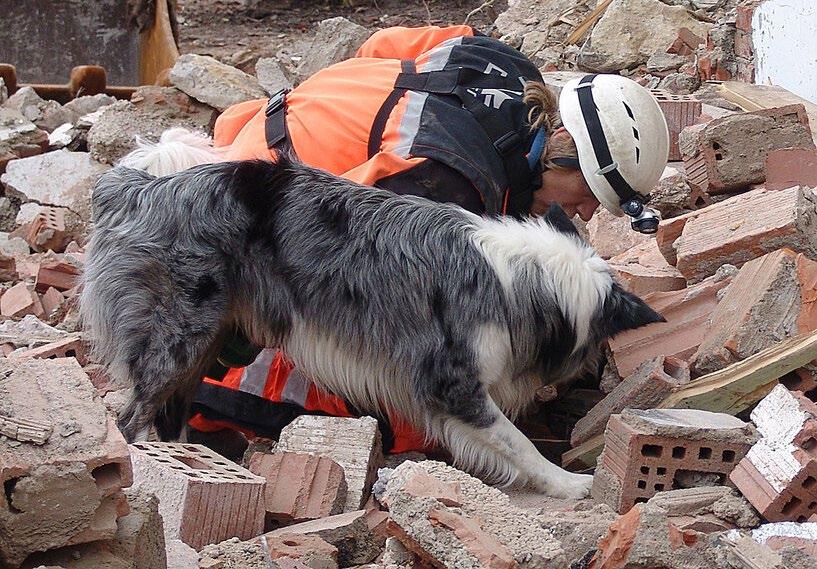
Certified search dog of the Swiss Disaster Dog Association (REDOG), Sky, a six-year-old Welsh border collie is ready to travel anywhere in the world at a moment's notice and do what his owner, Swiss veterinarian Dr Linda Hornisberger, has trained him for: find people trapped under disaster rubble
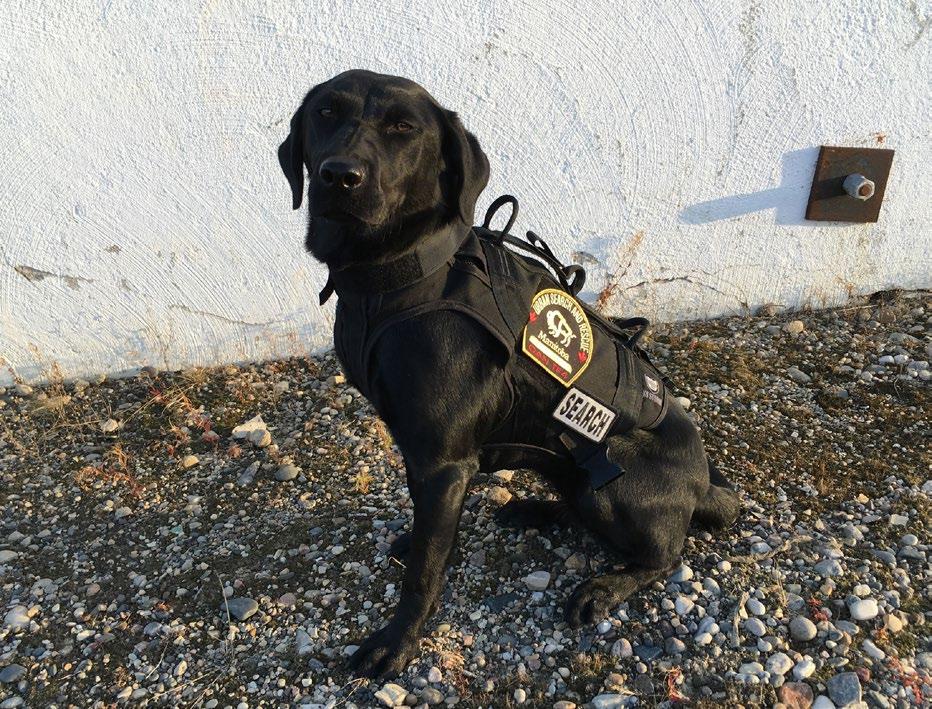
The importance of reconnaissance for USAR K9 handlers
Reconnaissance provides USAR K9 handlers with essential information about the disaster site, allowing them to assess the environment comprehensively. This assessment is crucial for identifying potential hazards such as unstable structures, hazardous materials, and other dangers that could threaten the safety of both the K9 units and the rescue team. By understanding these risks, handlers can plan search strategies that mitigate danger, ensuring that K9s are deployed in the most effective and safest manner possible.
Locating survivors quickly is the primary objective of any USAR operation. Through reconnaissance, handlers can prioritize areas where survivors are most likely to be found, making search efforts more targeted and efficient. This prioritization is vital in disaster scenarios where time is of the essence, as it allows for a rapid
response that can significantly increase the chances of finding survivors alive.
Efficient resource management is another critical aspect of reconnaissance. By gathering detailed information about the site, handlers can manage the deployment of K9 units more effectively, preventing exhaustion and ensuring that the dogs are utilized where they are most needed. Additionally,
reconnaissance information facilitates better coordination with other rescue teams, avoiding duplication of efforts and ensuring that all available resources are used to their fullest potential.
The safety and welfare of the K9 units and their handlers are paramount. Reconnaissance helps ensure that K9s are not sent into unnecessarily dangerous areas without adequate precautions. This consideration not only protects the dogs but also ensures that handlers can safely navigate the site while working with their K9 partners. In a high-risk environment, the well-being of both the K9s and their handlers is essential for maintaining the effectiveness of the rescue operation.
The necessity of specialised training in rubble areas Training canines specifically for USAR rubble areas is crucial due to the unique challenges these environments present. These areas require specialised skills that go beyond standard search and rescue training. One

One of the Manitoba CAN TF-4 K9s
K9 mantrailing/tracking units focus on following the specific scent trail of an individual based on a scent article
of the primary skills needed is agility and navigation. USAR environments are often characterised by unstable and uneven terrain, necessitating that K9s be proficient in climbing, balancing and manoeuvring through debris. This physical adaptability is essential for locating survivors in complex and hazardous conditions.
Scent work in rubble areas is another critical skill. The scent dynamics in such environments are complex, with human scents potentially being trapped or diffused by the debris. K9s must be trained to effectively locate scents under these challenging conditions. Realistic training scenarios that simulate actual disaster sites help prepare the K9s for the sights, sounds and smells they will encounter, ensuring they remain focused and effective during real operations.
Desensitisation to stress and chaos is another important aspect of training. Exposure to rubble environments during training helps K9s manage the stress associated with high-stakes search and rescue operations. This exposure builds the dogs' confidence and ensures they can perform reliably under pressure. Furthermore, repeated training in these conditions enhances the coordination and communication between handlers and their K9s, fostering a seamless partnership crucial for effective search and rescue operations.
Reconnaissance is essential for USAR K9 handlers to plan and execute search operations effectively and safely. It enables
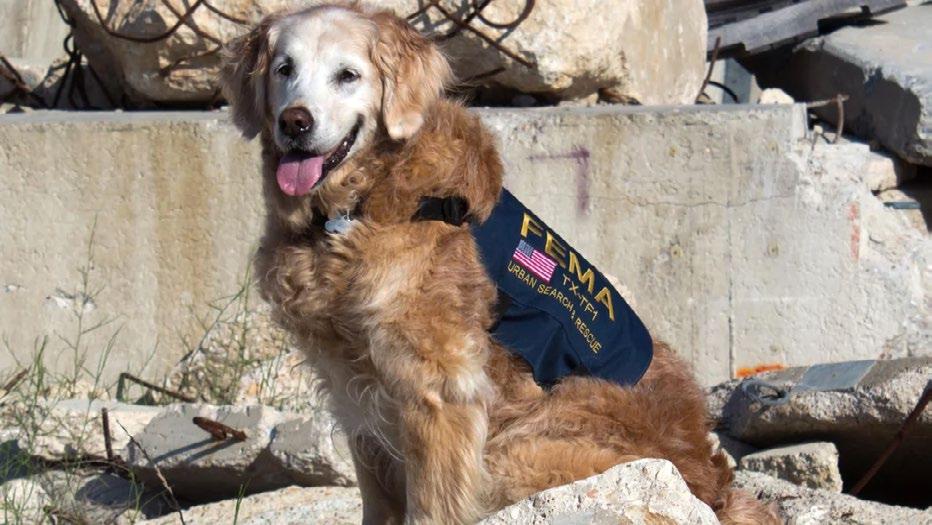
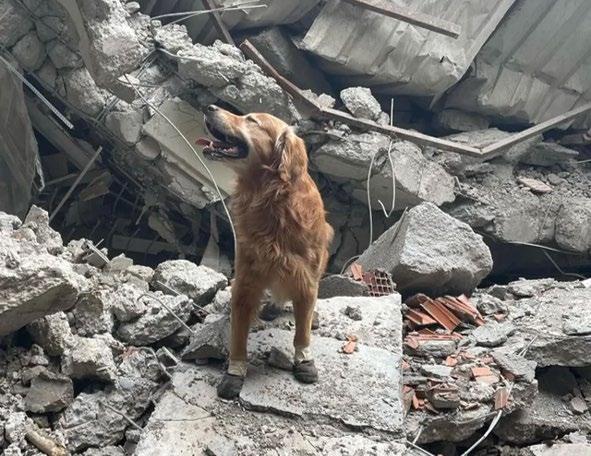
Training canines specifically for USAR rubble areas equips them with the necessary skills to navigate and operate in these challenging environments
handlers to assess hazards, optimise search efforts, manage resources efficiently and ensure the safety of both the K9s and the rescue team. Additionally, training canines specifically for USAR rubble areas equips them with the necessary skills to navigate and operate in these challenging environments. This specialised training ensures that K9s can perform their tasks efficiently, ultimately enhancing the overall success of USAR missions.
In summary, using multiskilled trained canines for
Urban Search and Rescue (USAR) operations is not recommended due to the need for specialised training, performance optimisation, safety concerns and operational consistency. USAR canines require focused training to navigate hazardous environments and perform specific tasks effectively.
Specialising ensures that these dogs can operate safely and efficiently under the unique pressures of disaster scenarios, enhancing the overall success of rescue missions.


The full story behind the dolos and its South African creator, Aubrey Kruger
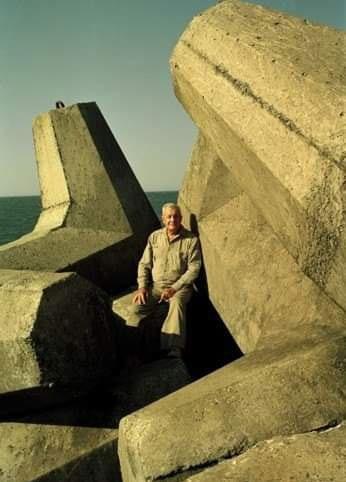
This is about a South African invention that is still regarded as streets ahead of anything else devised for its purpose. But as is often the case in such matters, the person responsible for its development has not always received the credit deserved, which went to another.
We are talking about the dolos, those huge and oddly named concrete creations used to absorb and dissipate the energy of the seas, which are mostly found at the entrances to ports and harbours, although they also find use elsewhere where scour protection is required.
Up until the invention of the dolosse, large rocks and blocks of concrete were the most common means of providing protection against the notorious waves of South Africa’s eastern coastline. But even these massive and heavy objects could be washed away or moved about and what was needed was something that was relatively inexpensive but would resist and reduce the force of the waves while remaining in position.
The man generally given most of the credit for inventing the dolos was a harbour engineer at the Port of East London in South Africa named Eric Merrifield who served at the Eastern Cape port as the chief engineer from 1961-1976. Yet the facts are somewhat different in that Merrifield had little right to such a claim, other than that he was in charge of the engineering office at the time and had signing power for its development. It was, however, his request that set in motion the invention of something that has gone into use across the world as the most successful means ever of absorbing and controlling the energy produced by waves pounding away at natural or man-made areas of coastline.
Strangely, neither the inventor nor the port engineer sought to take out patents for what resulted from that request, although

The late Aubrey Kruger

Merrifield was later to be granted and he accepted, awards and recognition for which he was not really entitled. It appears that both men believed that, as they were employees of the state at the time, they were not entitled to reward for the invention. What a refreshing thought!
One day in 1963, Merrifield entered into a discussion with his draughtsman about designing a structure made from concrete that would be capable of protecting the East London Harbour breakwater from the battering waves.
The draughtsman, 28-year old Aubrey Kruger, was a modest, quiet local man who rode to work every day on a red Vespa scooter from his home in Cambridge, one of East London’s suburbs. It was usual in those days at East London for people to return home at lunchtime each day and so, when Aubrey Kruger returned home by scooter that day the first thing he did was to commandeer his wife Daphne’s broomstick, from which he cut three pieces of wood which he nailed together in the shape of an H’ with one twisted leg.
His daughter Sandra says she can remember her mother being rather angry, and having to shoo a chicken out of the kitchen with a shortened broomstick.
She says her father based his idea on the dubbeltjie thorn. After lunch he returned to work where he placed the wooden model on Merrifield’s desk. The idea was that the dolosse, which would be cast in unreinforced concrete, would be placed in
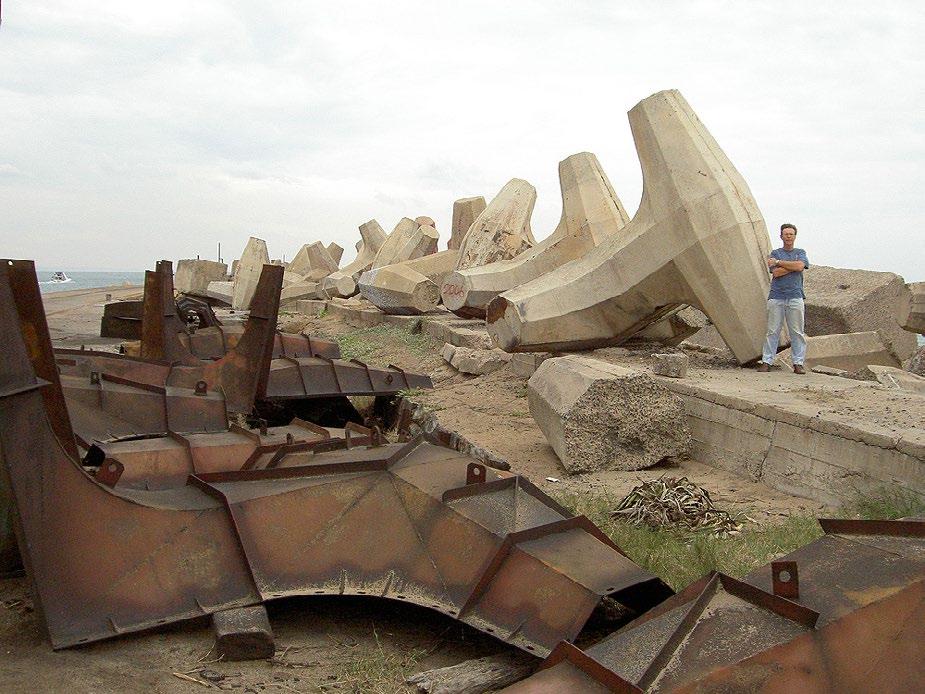
front of and on top of each other along the breakwater where they would interlock and, as waves broke against them, would fit even tighter while still allowing some of the waves to pass through the structures, thus weakening their force.
According to Sandra, the name dolos came from her grandfather, Joseph Kruger, who was a carpenter working at the harbour dry dock at the time. He saw his son and others in the office playing with small models and asked “Wat speel julle met die dolos?” - dolos being the Afrikaans word for knucklebones often used by sangomas and herbal doctors when divining. Children also used to play with these knucklebones.
The Kruger family still has an original model of the dolos made by Aubrey using plaster of paris and left to dry in the garden. Aubrey Kruger’s son Lance retains this model in his possession.
The drawings for the first dolos were completed in 1963, based on the shape devised in wood by Aubrey Kruger. As port engineer Merrifield was responsible for overseeing the project and signing off all plans.
The following year, 1964, the first dolos was laid on the port breakwater. Kruger enjoyed seeing the development of his invention which resulted in much excitement in the family. At the end of 1966 Kruger was transferred to Durban and was given a copy of the amendment to the design dated July 12, 1966 drawn by Aubrey Kruger and signed by Merrifield, as a farewell gift from the East London office.
The family lived happily in Durban for seven years and it was only after the Shell Award was given to Merrifield in 1972 and a Gold Medal award by the Associated Science and Technology Societies of South Africa for the invention of the

A man stands next to a dolos, showing its relative size. Dolosse moulds are in the foreground, Durban, South Africa

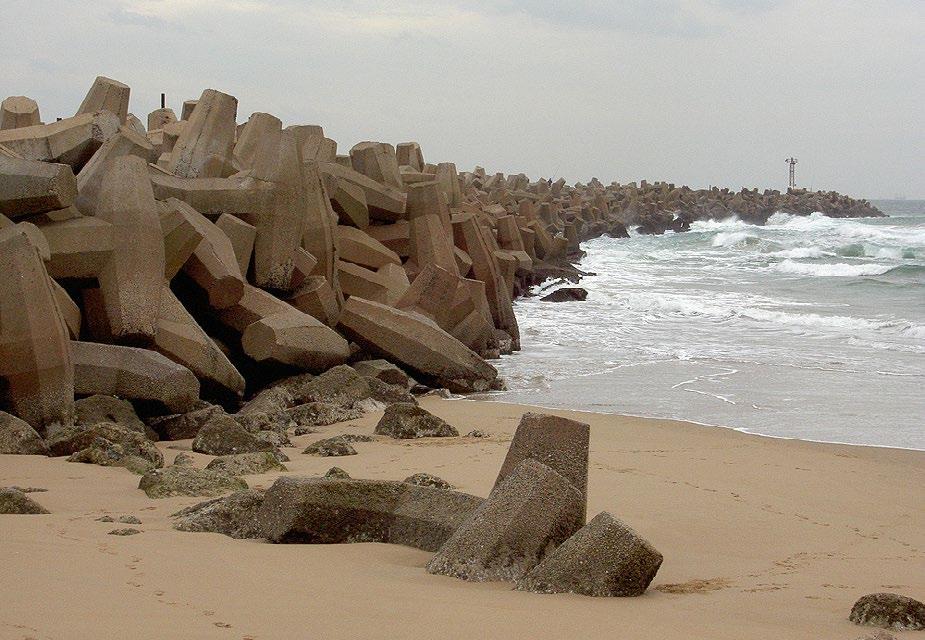
dolos that Kruger felt saddened by his not being mentioned for his part in the design.
Subsequent articles and reports written about the dolos and giving credit to Merrifield caused much pain and hurt to both Kruger and his family. Kruger remained a man of few words who was never confrontational and preferred his own company, says his daughter Sandra. She says her father considered the invention to be the property of the South African Railways and Harbours (now Transnet) and would never have written papers about it, let alone have tried to have them published. “It was not in his nature to rock the boat,” she says.
Dolosse are in use across the world, either in their original shape or in variations but following similar principals. They can be found reinforcing the breakwaters of ports and harbours in the US, in South America, in Asia and in parts of Europe. There’s even one of many thousand at Port Ngqura
festooned in the colours of the South African flag.
In 1973 Kruger and his family returned to East London where he left the employ of the SAR&H and started a tyre retreading company. He later sold the business and returned to work as a draughtsman for an architectural company and then as a truss designer for a timber company. In 1998 he retired on a
state pension to a beach cottage and spent most of his time fishing and doing woodwork. Following a stroke in 2010 he and his wife moved to a flatlet on his son Lance’s property in the suburb of Vincent, East London.
Aubrey Kruger died in East London on 19 July 2016, two days before his 81st birthday. Aubrey Kruger died of cancer, being survived by his wife, Daphne, his children, Gary, Sandra, Ross and Lance and six grandchildren and five great-grandchildren.
Not long before he died, his family was able to show him the newly minted sterling silver coins of a R2 crown and a 2½ cent “tickey” from the South African Mint in its South African Invention’s theme, imprinted with the geometric shape of the dolos, as well as three miniature silver dolosse by the South African Mint, which commemorated his involvement in the invention.
Source: East London of Old, South Africa

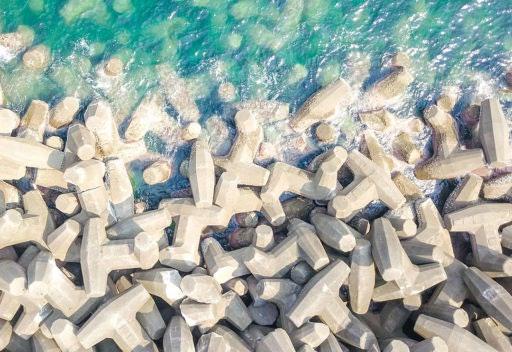
Durban's South Pier with a line of interlocking dolosse, South Africa

What’s On?
2024
July
24 - 25 July 2024
Dräger South Africa Fire Combat and Rescue Challenge
Venue: Dräger South Africa, Waterfall Commercial District, 2 Ruacana Street, Johannesburg, 2191, South Africa
Contact Wimpie van Onselen
Email: Wimpie.van-Onselen@draeger.com
27 - 28 July 2024
British Firefighter Challenge Liverpool, UK www.britishfirefighterchallenge.co.uk
September
5 September 2024
Fires in the Hospitality Industry Conference by Institution of Fire Engineers South Africa
In this online seminar, speakers will discuss how SANS Codes and Building Regulations can be used to mitigate fires in the hospitality industry, which have been on the rise in recent years. R400 excl VAT for non members and R200 excl VAT for members.
Contact the IFE SA branch: Email: adminstaff@ife.org.za www.ife.org.za
7 - 14 September 2024
15th World Firefighters Games 2024
Aalborg, Denmark www.wfg2020.dk
18 - 19 September 2024
The Emergency Services Show UK Birmingham, UK www.emergencyuk.com
18 - 20 September 2024
Third Annual Women in EMS Leadership Conference 2024
Protea Hotel Waterfront, Cape Town, South Africa
The Women in EMS Leadership Conference 2024 event is a two day programme being curated by
Eminence Corporate Solution’s Content ManagerThulani Dube, with an audience of about 80+ delegates, made up of senior executives from EMS, Uniformed Services from public and private sectors. Contact: Thulani Dube, Tel: +27 10 023 3985 or email: thulani@ec-s.co.za www.eminence-events.co.za
26 to 28 September 2024
Toughest Firefighter Alive South Africa
Venue: De Bakke Beach, Mossel Bay, Western Cape, South Africa
The 9th edition of South Africa’s ‘Toughest Firefighter Alive’ (TFA-SA) Open competition will be held at De Bakke beach in Mossel Bay on 26 to 28 September 2024. The TFA-SA is based on the international Toughest Firefighter Alive’ Challenge, the blue riband event of the World Firefighter Games (WFG). The WFG started in Auckland, New Zealand 1990 and is held in a different country every two years with the winner of the TFA Competition at the WFG being crowned the World’s Toughest Firefighter Alive, a very prestigious award. Contact Mark Smith, email: tfa@fireandrescue.co www.frimedia.org/TFA
October
13 October 2024
International Day for Disaster Risk Reduction 2024 (IDDR) https://iddrr.undrr.org/
22 to 24 October 2024
Africa Health 2024
Redefining the healthcare landscape in South Africa. The leading healthcare event in the African region. Fuelling innovation and collaboration, Africa Health 2024 is setting the stage for groundbreaking advancements in healthcare across the African region. Expect cutting-edge medical equipment from 40 countries, engaging conferences, and exciting sessions like the Africa Health Indaba and Innov8 Competition. With over $131,1 million in business generated in 2023, Africa Health 2024 promises to be even more impactful, driving innovation and collaboration across the continent's healthcare landscape.
Venue: Cape Town International Convention Centre, Cape Town, South Africa www.africahealthexhibition.com

























